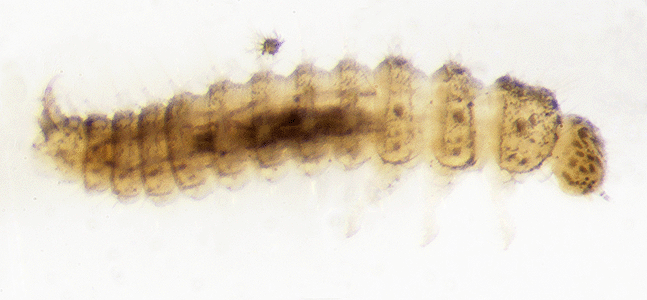Order Coleoptera ( Beetles) in the Christopher B. Smith Preserve
Order Coleoptera Characteristics: Beetles are the most diverse of all Earth's organisms. One-fifth of all living species, including plants, are beetles, and one-fourth of all animal species are beetles. There are more than 24,000 beetle species in 113 families just in the United States and Canada.
Beetles have complete metamorphosis (egg, larva, pupa, adult). All beetle larvae and adults have chewing mouth parts. Most adults have two pairs of wings with their first pair (the elytrons) hardened into stiff plates. When resting, a beetle holds its elytrons over its second pair of wings and abdomen.
Interactions in the Smith Preserve: Because beetles are found in almost every type of habitat, they have many interactions with other organisms. Some eat foliage, while others bore into wood and fruit, tunnel inside of leaves, or attack plant roots. In addition, some beetles are vectors of fungal, viral, and bacterial pathogens that kill plants. Some beetles pollinate plants, while others are predators that keep insect populations in check. Some beetles are scavengers that decompose scat and dead organisms, and recycle the nutrients. Some beetles dig burrows, and in so doing, mix soil. All types of beetles are prey for predators and hosts for parasites. The Smith Preserve would be very different without the beetles.
Family |
Species Name |
Common Name |
Attelabidae |
Homoeolabus analis |
|
Attelabidae |
Unknown |
|
Buprestidae |
Brachys sp. |
|
Carabidae |
Apenes sinuata |
|
Carabidae |
Apenes parallela |
|
Carabidae |
Pasimacus sublaevis |
|
Carabidae |
Selenophorus fossulatus |
|
Cerambycidae |
Osmopleura chamaeropis |
|
Cerambycidae |
Zagymnus clerinus |
|
Chrysomelidae |
Acanthoscelides helianthemum |
|
Chrysomelidae |
Acanthoscelides sp. |
|
Chrysomelidae |
Altica chalybea |
|
Chrysomelidae |
Altica spp. |
|
Chrysomelidae |
Anomoea laticlavia |
|
Chrysomelidae |
Chalepus bicolor ? |
|
Chrysomelidae |
Chrysomela scripta |
|
Chrysomelidae |
Diachus sp. |
|
Chrysomelidae |
Galerucella nymphaea |
|
Chrysomelidae |
Griburius larvatus |
|
Chrysomelidae |
Lexiphanes affinis |
|
Chrysomelidae |
Lilioceris cheni |
|
Chrysomelidae |
Neolochmaea dilatipennis |
|
Chrysomelidae |
Subfamily Eumolpinae: Species Unknown |
|
Chrysomelidae |
Unknown |
|
Coccinellidae |
Unknown |
|
Coccinellidae |
Brachiacantha dentipes |
|
Coccinellidae |
Chilocorus stigma |
|
Coccinellidae |
Coelophora inaequalis |
|
Coccinellidae |
Cycloneda sanguinea |
|
Coccinellidae |
Diomus roseicollis |
|
Coccinellidae |
Exochomus sp. |
|
Coccinellidae |
Exochomus childreni |
|
Coccinellidae |
Exochomus childreni childreni |
|
Coccinellidae |
Harmonia axyridis |
|
Coccinellidae ? |
Unknown |
|
Corylophidae |
Unknown |
|
Curculionidae |
Baris sp. |
|
Curculionidae |
Coccotrypes sp. |
|
Curculionidae |
Cophes oblongus |
|
Curculionidae |
Hypothenemus sp. |
|
Curculionidae |
Hypothenemus sp. |
|
Curculionidae |
Myllocerus undatus |
|
Curculionidae |
Myllocerus undecimpustulatus undatus |
|
Curculionidae |
Neoptochus adspersus |
|
Curculionidae |
Notolomus basalis |
|
Curculionidae |
Paragraphus setosus |
|
Curculionidae |
Stenancylus colombi |
|
Curculionidae |
Tanymecus lacaena |
|
Dermestidae |
Dermestes maculatus |
|
Elateridae |
Anchastus fumicollis |
|
Elateridae |
Cardiophorus convexus |
|
Elateridae |
Unknown |
|
Elateridae |
Melanotus sp. |
|
Elateridae |
Unknown |
|
Erotylidae |
Loberus sp. |
|
Gyrinidae |
Dineutus sp. |
|
Histeridae |
Xerosaprinus sp. |
|
Meloidae |
Nemognatha spp. |
|
Mordellidae |
Mordellina pustulata |
|
Nitidulidae |
Carpophilus pallipennis |
|
Phalacridae |
Stilbus sp. ? |
|
Ptiliidae |
Ptinella sp. |
|
Scarabaeidae |
Diplotaxis bidentata |
|
Scarabaeidae |
Euphoria sepulcralis |
|
Scarabaeidae |
Strategus antaeus |
|
Scarabaeidae |
Strigoderma pygmaea |
|
Scarabaeidae |
Tomarus subtropicus |
|
Scarabaeidae |
Trichiotinus sp. |
|
Smicripidae |
Smicrips sp. |
|
Staphylinidae |
Aleochara sp. |
|
Staphylinidae |
Creophilus maxillosus |
|
Staphylinidae |
Dalmosanus steevesi |
|
Staphylinidae |
Euconnus subgenus Napoconnus |
|
Staphylinidae |
Thoracophorus sp. |
|
Staphylinidae |
Unknown |
|
Tenebrionidae |
Blapstinus histricus |
|
Tenebrionidae |
Blapstinus metallicus |
|
Tenebrionidae |
Epitragodes tomentosus |
|
Tenebrionidae |
Gondwanocrypticus obsoletus |
|
Tenebrionidae |
Unknown |
|
Tenebrionidae (Possibly) |
Unknown |
|
Zopheridae |
Pycnomerus thrinax |
|
Unknown |
Unknown |
|
Unknown |
Unknown |
|
Unknown |
Unknown |
Family Attelabidae Homoeolabus analis ... Oak Leaf - Rolling Weevil
|
Family Attelabidae Unknown Species ... Leaf - Rolling Weevil
|
Family Buprestidae Brachys sp. ... Metallic Wood-Boring Beetle
|
Family Carabidae Apenes sinuata ... Ground Beetle
|
Family Carabidae Apenes parallela... Ground Beetle
|
Family Carabidae Pasimachus sublaevis ... Moderately Smooth Warrior Beetle
|
Family Carabidae Selenophorus fossulatus. ... Unknown Common Name
|
Family Cerambycidae Osmopleura chamaeropis ... Cabbage Palm Longhorn Beetle
|
Family Cerambycidae Zagymnus clerinus ... Longhorn Beetle
|
Family Chrysomelidae Acanthoscelides helianthemum ... Bean Weevil
|
Family Chrysomelidae Acanthoscelides sp. ... Bean Weevil
|
Family Chrysomelidae Altica chalybea ... Grape Flea Beetles
|
Family Chrysomelidae Altica spp. ... Flea Beetles
|
Family Chrysomelidae Anomoea laticlavia ... Clay-Colored Leaf Beetle
|
Family Chrysomelidae Chalepus bicolor ?... Hispine Beetle
|
Family Chrysomelidae Chrysomela scripta ... Cottonwood Leaf Beetle
|
Family Chrysomelidae Diachus sp. ... Bronze Leaf Beetle
|
Family Chrysomelidae Galerucella nymphaeae ... Water Lily Beetle
|
Family Chrysomelidae Griburius larvatus ... Leaf Beetle
|
Family Chrysomelidae Lexiphanes affinis ... Case-Bearing Leaf Beetle
|
Family Chrysomelidae Lilioceris cheni ... Air Potato Leaf Beetle
|
Family Chrysomelidae Neilochmea dilatipennis ... Leaf Beetle
|
Family Chrysomelidae Metachroma sp. ... Leaf Beetle
|
Family Chrysomelidae Unknown Species ... Leaf Beetle
|
Family Coccinellidae Unknown Species ... Lady Beetle Eggs
|
Family Coccinellidae Brachiacantha dentipes ... Lady Beetle
|
Family Coccinellidae Chilocorus stigma ... Twice-Stabbed Lady Beetle
|
Family Coccinellidae Coelophora inaequalis ... Variable Ladybird / Common Australian Lady Beetle
|
Family Coccinellidae Cycloneda sanguinea ... Spotless Ladybird Beetle
|
Family Coccinellidae Diomus roseicollis ... Red-Collared Lady Beetle
|
Family Coccinellidae Exochomus sp. ... Lady Beetle
|
Family Coccinellidae Exochomus childreni ... Children's Lady Beetle
e individual shown below was. Note: the specimen shown here is larger than the one below, and it lacks the thick dark apical suture (the midline between the two wings) and the dark red marginal edge of the carapace evident in the subspecies shown below.
|
Family Coccinellidae Exochomus childreni childreni ... Children's Lady Beetle
|
Family Coccinellidae Harmonia axyridis ... Asian Multicolored Lady Beetle
|
Family Coccinellidae ? Unknown Species ... Unknown Common Name
|
Family Corylophidae Unknown Species ... Minute Hooded Beetle
|
Family Curculionidae Baris sp. ... Snout Beetle
|
Family Curculionidae Coccotrypes sp. ... Palm Seed Borer
|
Family Curculionidae Cophes oblongus... No Common Name
|
Family Curculionidae Hypothenemus sp. ... Oriental Bark Beetle
|
Family Curculionidae Hypothenemus sp. ... Oriental Bark Beetle
|
Family Curculionidae Myllocerus undatus ... Little Leaf Notcher Weevil / Asian Grey Weevil
|
Family Curculionidae Myllocerus undecimpustulatus undatus ... Sri Lanka Weevil
|
Family Curculionidae Neoptochus adspersus... Broad-Nosed Weevil
|
Family Curculionidae Notolomus basalis ... No Common Name
|
Family Curculionidae Paragraphus setosus ... Broad-Nosed Weevil
|
Family Curculionidae Stenancylus colomboi ... No Common Name
|
Family Curculionidae Tamanduas lacaena ... Sweet Potato Broad-Nosed Weevil / Citrus Root Weevil
|
Family Dermestidae Dermestes maculatus ... Hide Beetle
|
Family Elateridae Anchastus fumicollis ... Click Beetle
|
Family Elateridae Cardiophorus convexus ... Click Beetle
|
Family Elateridae Unknown Species ... Click Beetle Wireworm
|
Family Elateridae Melanotus sp. ... Click Beetle Wireworm
|
Family Elateridae Unknown Species ... Click Beetle Wireworm
|
Family Erotylidae Loberus sp. ... Pleasing Fungus Beetle
|
Family Gyrinidae Dineutus sp. ... Whirligig Beetle
|
Family Histeridae Xerosaprinus sp. .... Clown Beetle / Hister Beetle
|
Family Meloidae Nemognatha spp. .... Blister Beetle
|
Family Mordellidae Mordellina pustulata ... Tumbling Flower Beetle / Pintail Beetle
|
Family Nitidulidae Carpophilus pallipennis ... Sap Beetle
|
Family Phalacridae Stilbus sp.? .... Shining Flower Beetle
|
Family Ptiliidae Ptinella sp. ... Featherwinged Beetle
|
Family Scarabaeidae Diplotaxis bidentata ... May Beetle/ Junebug
|
Family Scarabaeidae Euphoria sepulcralis ... Dark Flower Scarab / Flower Beetle
|
Family Scarabaeidae Strategus antaeus ... Ox Beetle
At left is the mound left after the wireworm had completely buried itself. Note, the mound is about eight centimeters wide.
|
Family Scarabaeidae Strigoderma pygmaea ... Pygmy Chafer / Shining Leaf Chafer
|
Family Scarabaeidae Tomarus subtropicus ... Rhinoceros Beetle / Carrot Beetle
|
Family Scarabaeidae Trichiotinus sp. ... Hairy Flower Scarab
|
Family Smicripidae Smicrips sp. ... Palmetto Beetle
|
Family Staphylinidae Aleochara sp. ... Rove Beetle
|
Family Staphylinidae Crephilus maxillosus ... Hairy Rove Beetle
|
Family Staphylinidae Dalmosanus steevesi ... Ant-Loving Beetle
|
Family Staphylinidae Euconnus subgenus Napoconnus... Ant-Like Stone Beetle
|
Family Staphylinidae Thoracophorus sp. ... Rove Beetle
|
Family Staphylinidae Unknown Species ... Carrion Rove Beetle
|
Family Tenebrionidae Blapstinus histricus ... Darkling Beetle
|
Family Tenebrionidae Blapstinus metallicus ... Darkling Beetle
|
Family Tenebrionidae Epitragodes tomentosus ... Hairy Darkling Beetle
|
Family Tenebrionidae Gondwanocrypticus obsoletus ... Darkling Beetle
|
Family Tenebrionidae Unknown Species ... Unknown Common Name
|
Family Tenebrionidae (Possibly) Unknown Species ... Unknown Common Name
|
Family Zopheridae Pycnomerus thrinax ... Ironclad Beetle
|
Unknown Family Unknown Species ... Unknown Common Name
|
Unknown Family Unknown Species ... Unknown Common Name
|
Unknown Family Unknown Species ... Unknown Common Name
|

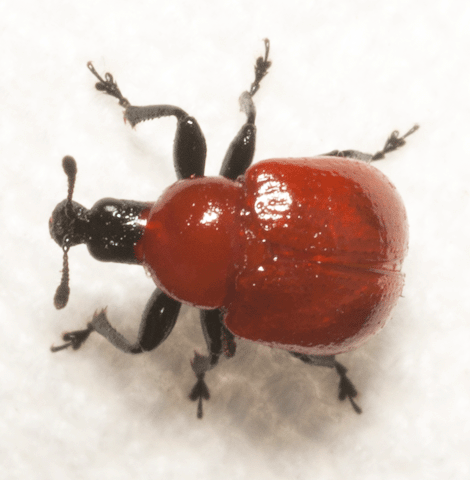 In North America, there are 50 species of leaf- rolling weevils (Family Attelabidae).
In North America, there are 50 species of leaf- rolling weevils (Family Attelabidae). 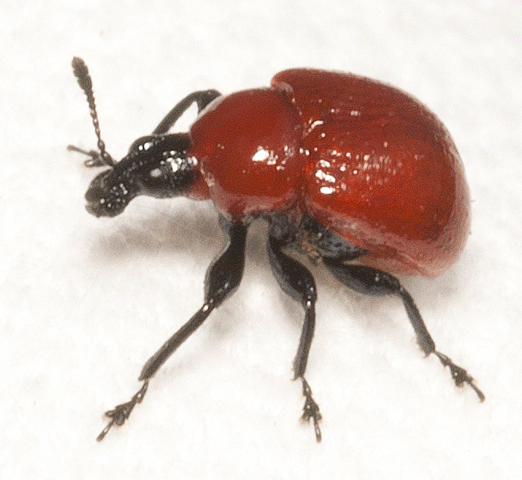

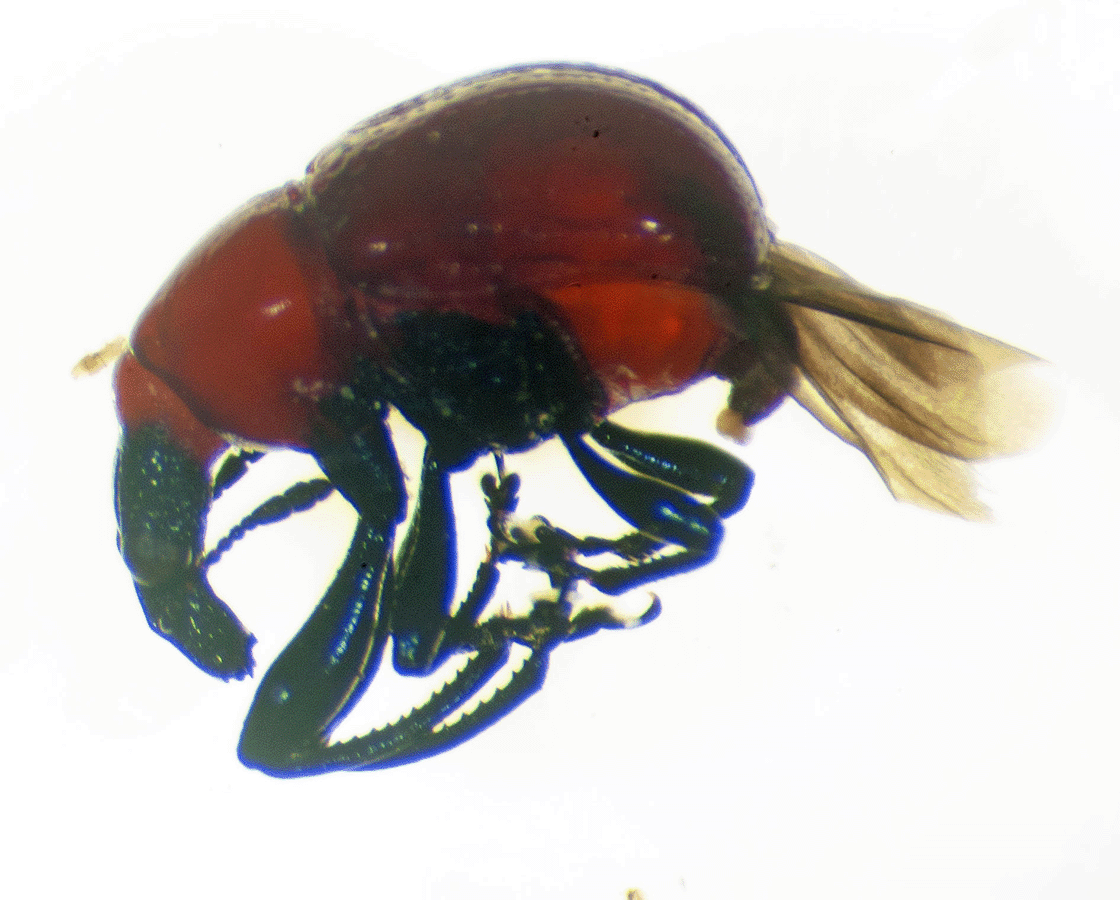
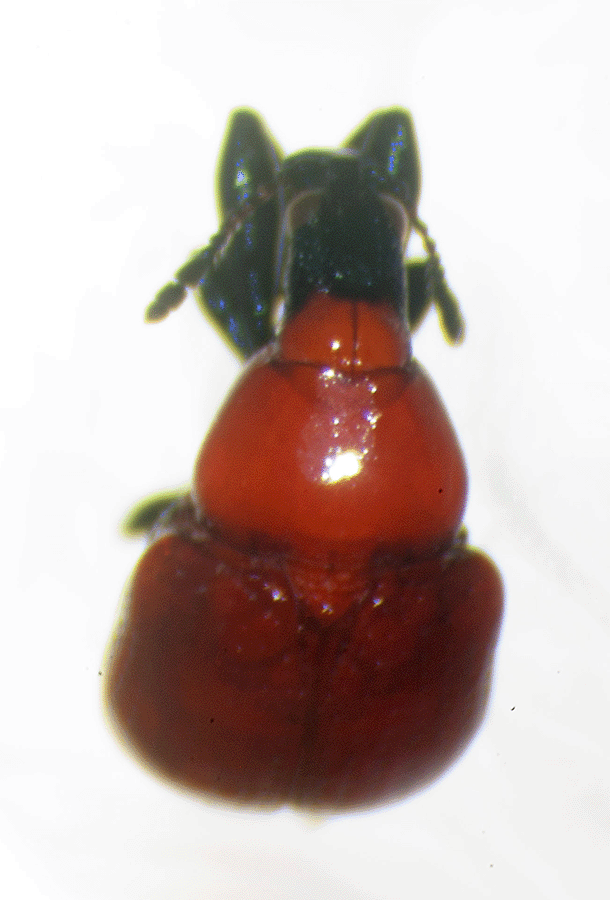
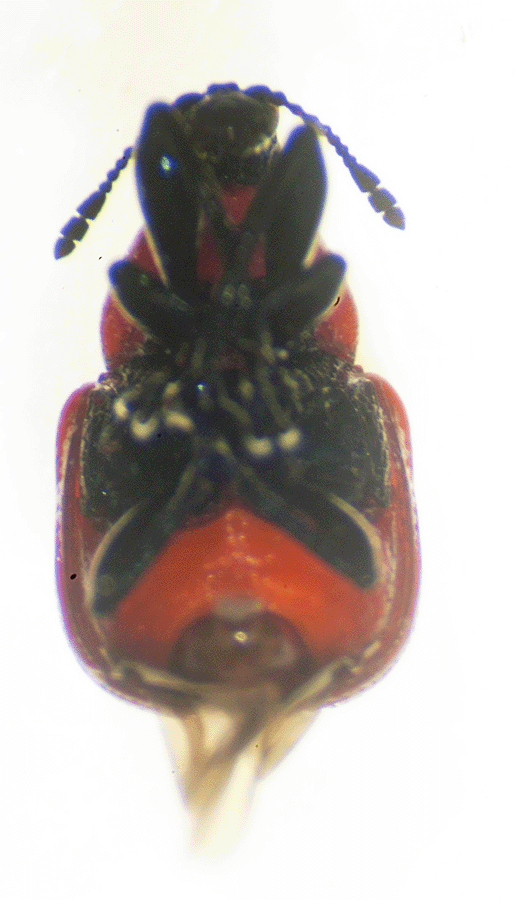
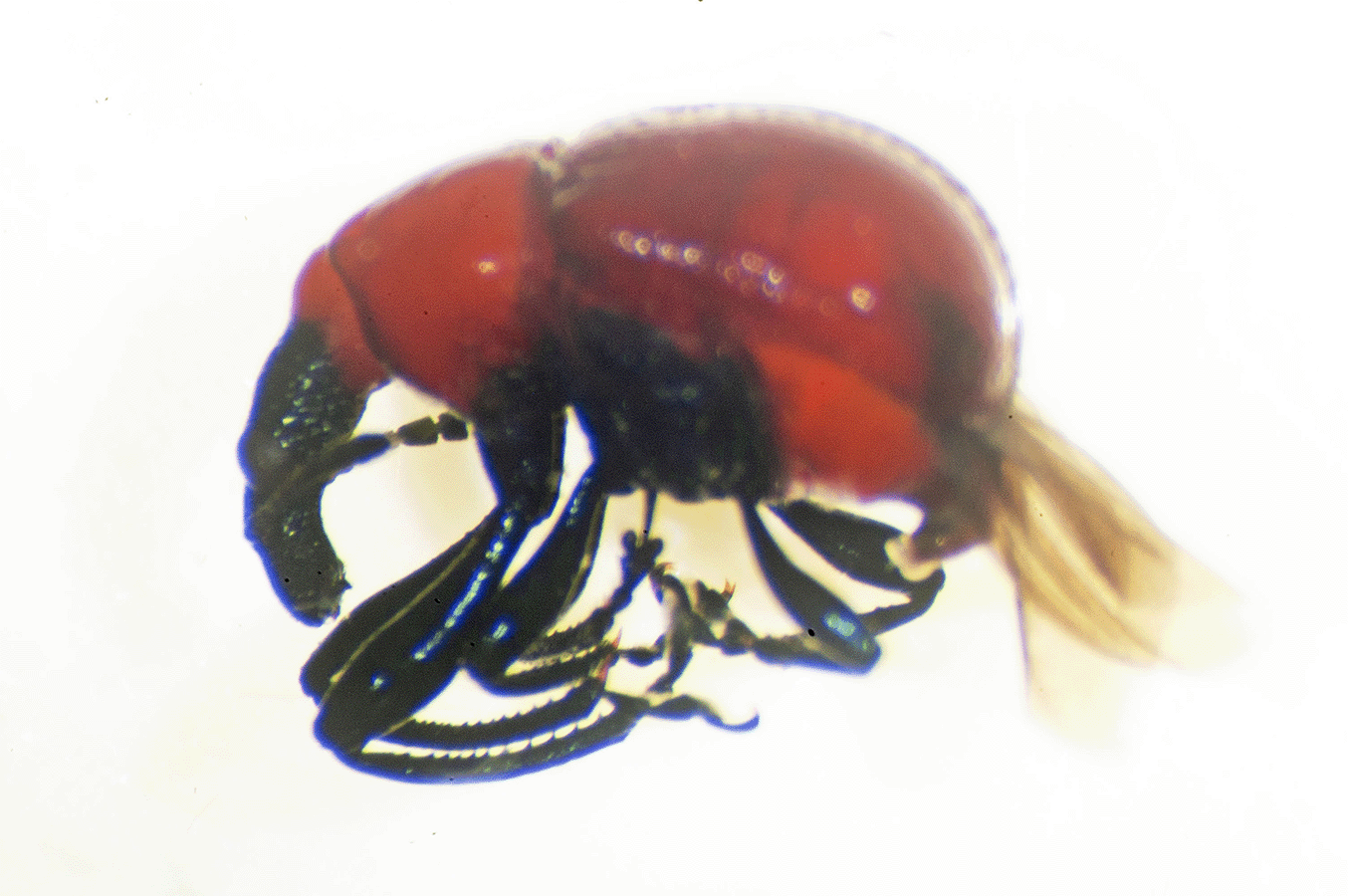
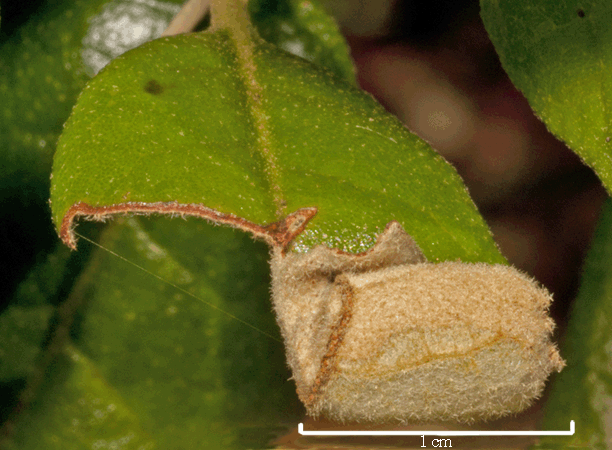
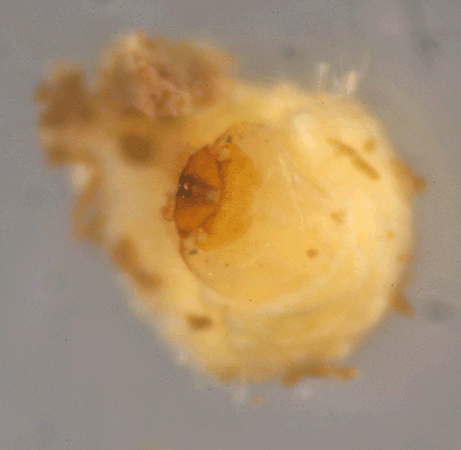
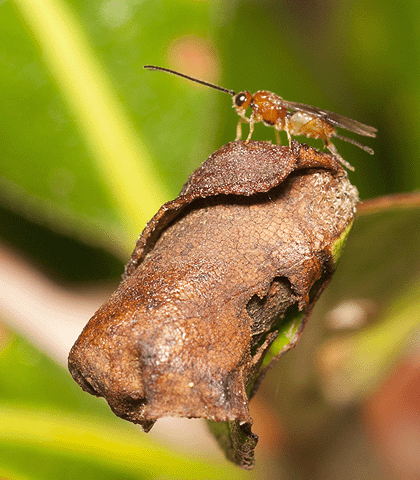 There are several parasites of the leaf-rolling weevil in the nidus. One is shown at right: a
There are several parasites of the leaf-rolling weevil in the nidus. One is shown at right: a 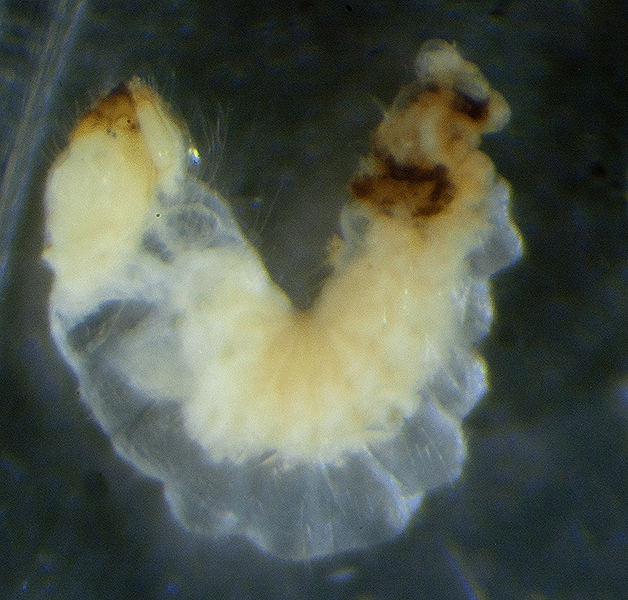
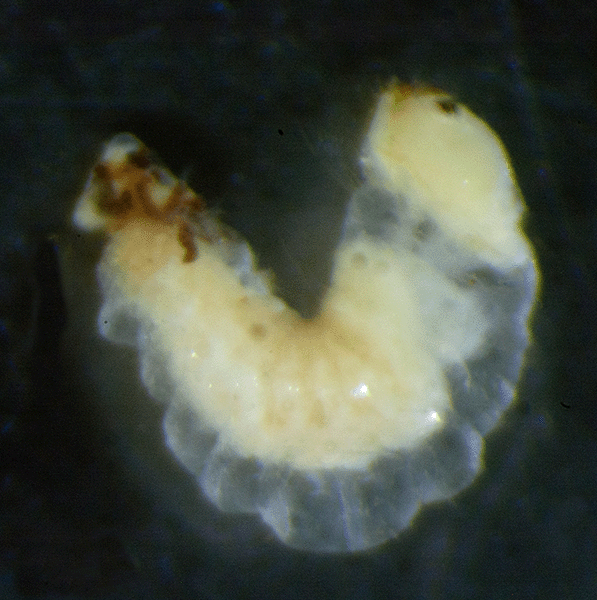
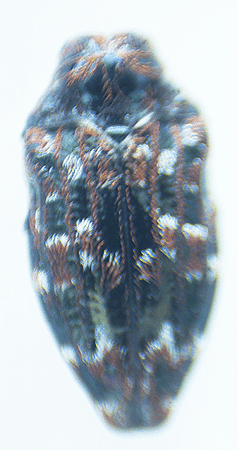
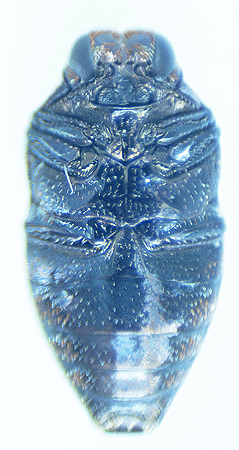
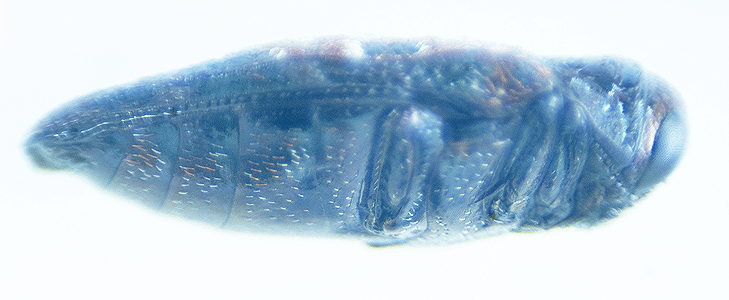
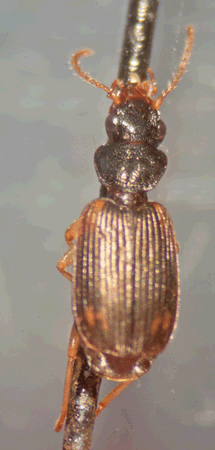
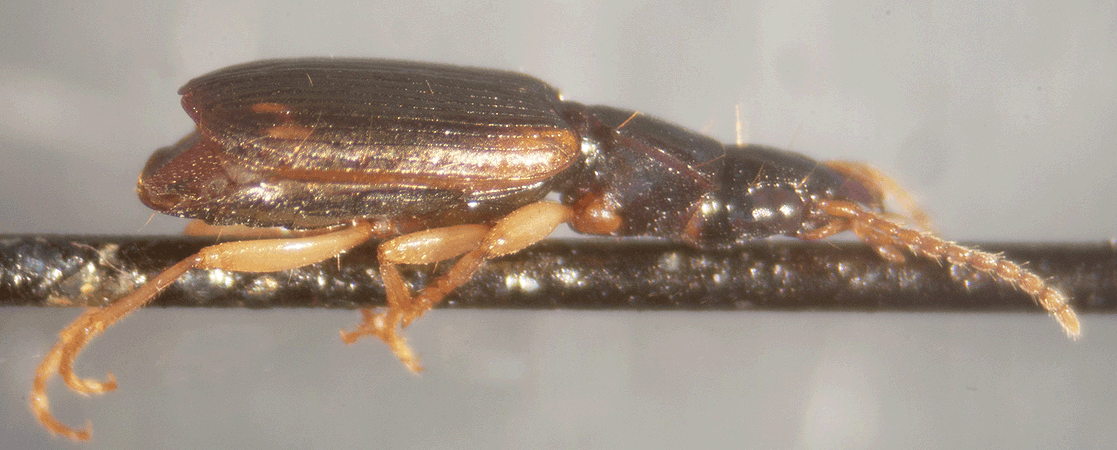
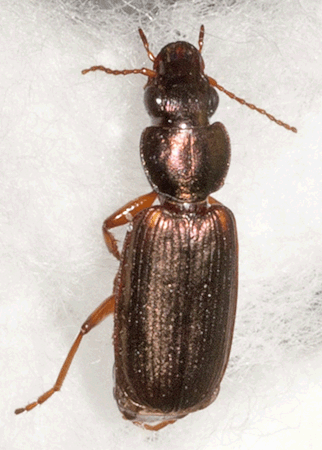
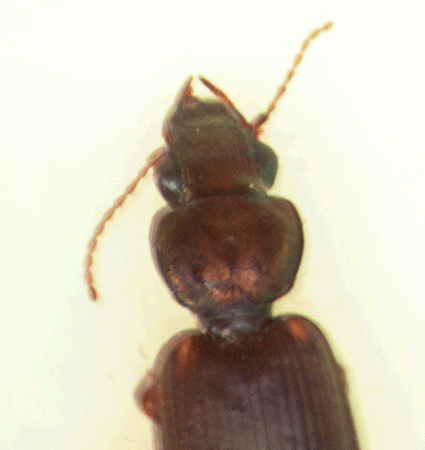
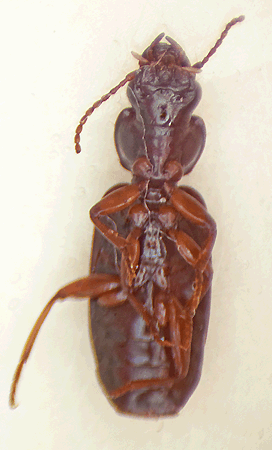
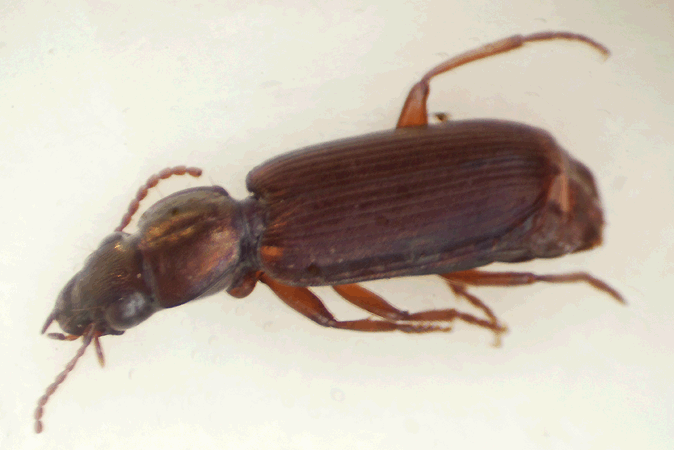

 A Moderately Smooth Warrior Beetle is active both day and night. It is a solitary predator of caterpillars and other larval insects. As shown in these photographs, it has huge jaws.
A Moderately Smooth Warrior Beetle is active both day and night. It is a solitary predator of caterpillars and other larval insects. As shown in these photographs, it has huge jaws. 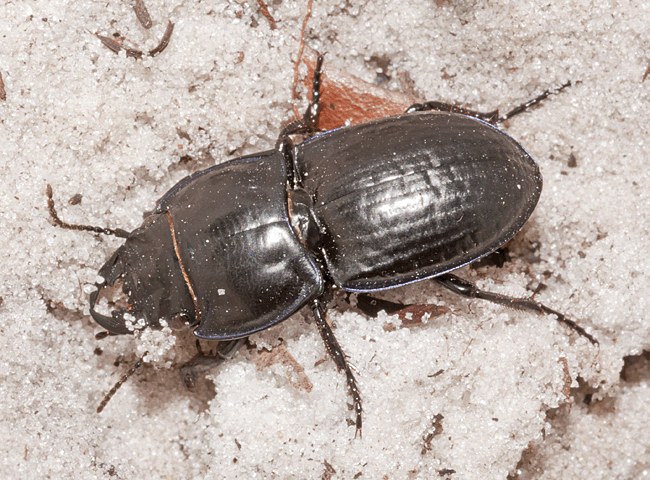
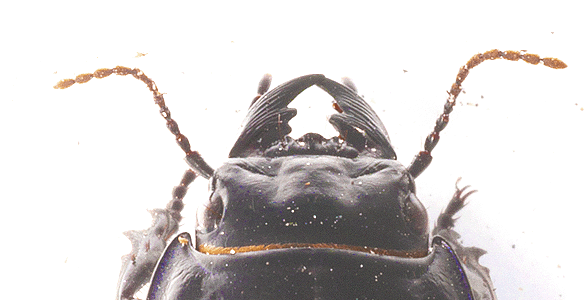
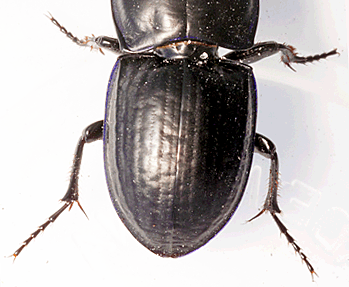

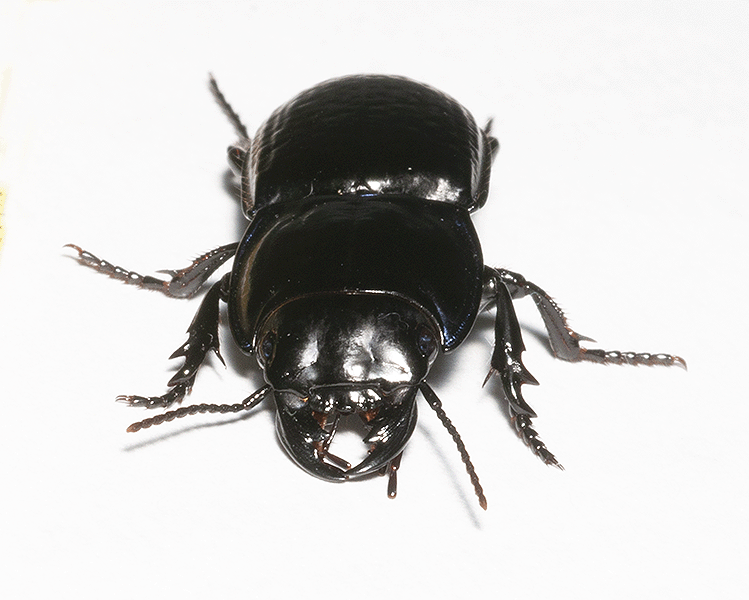
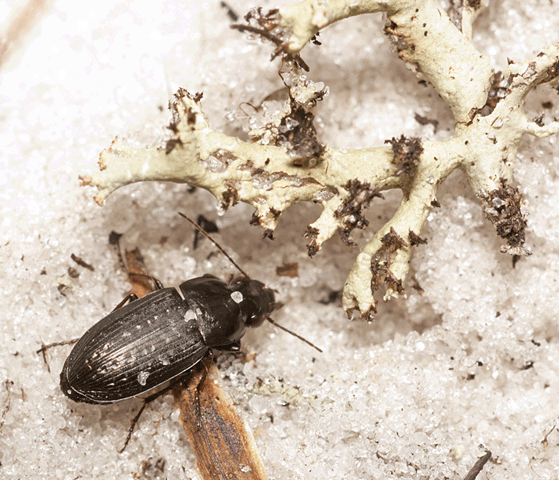
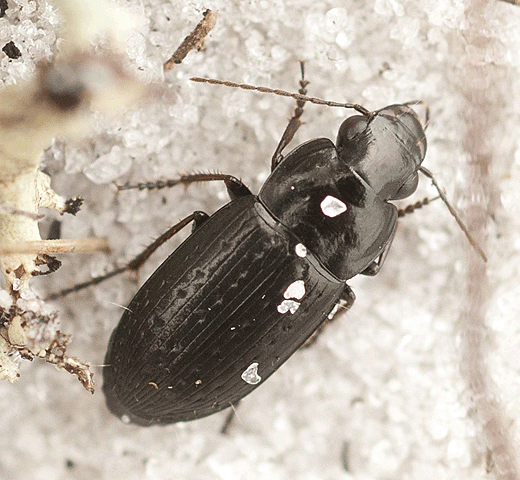
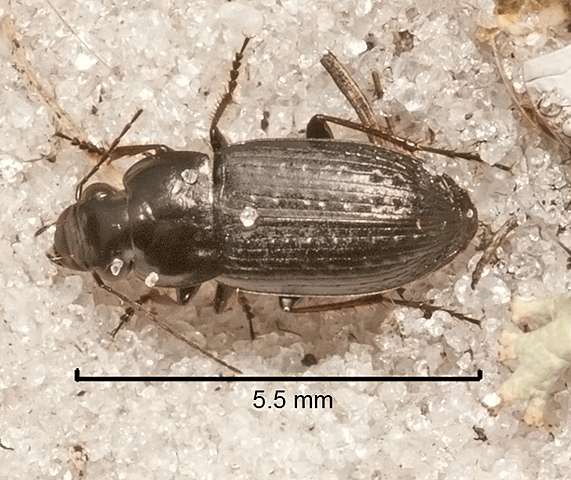
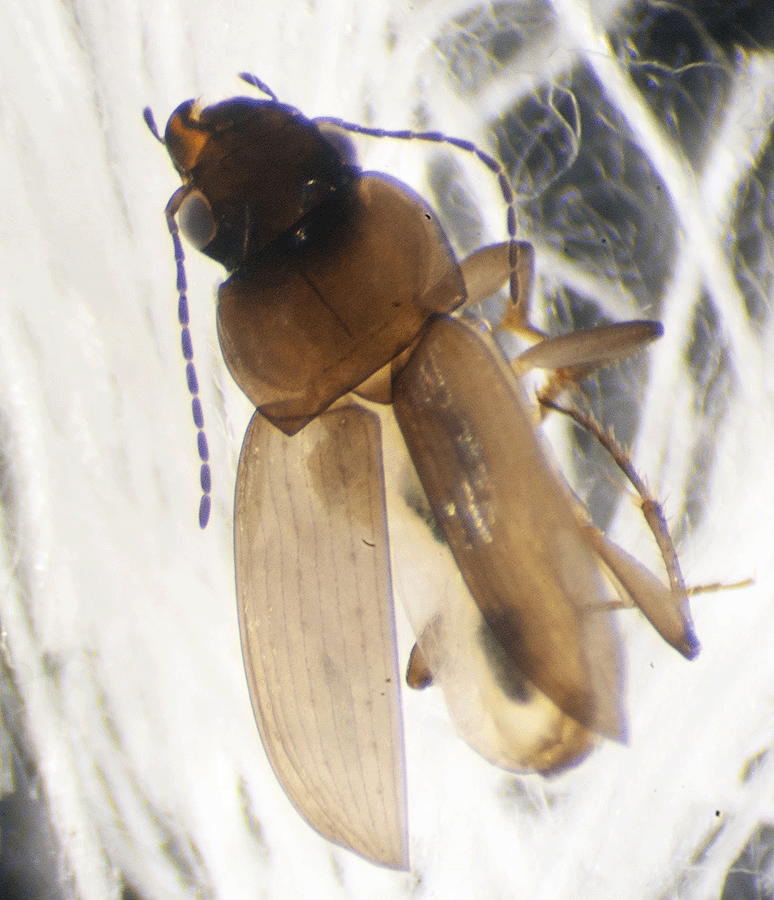
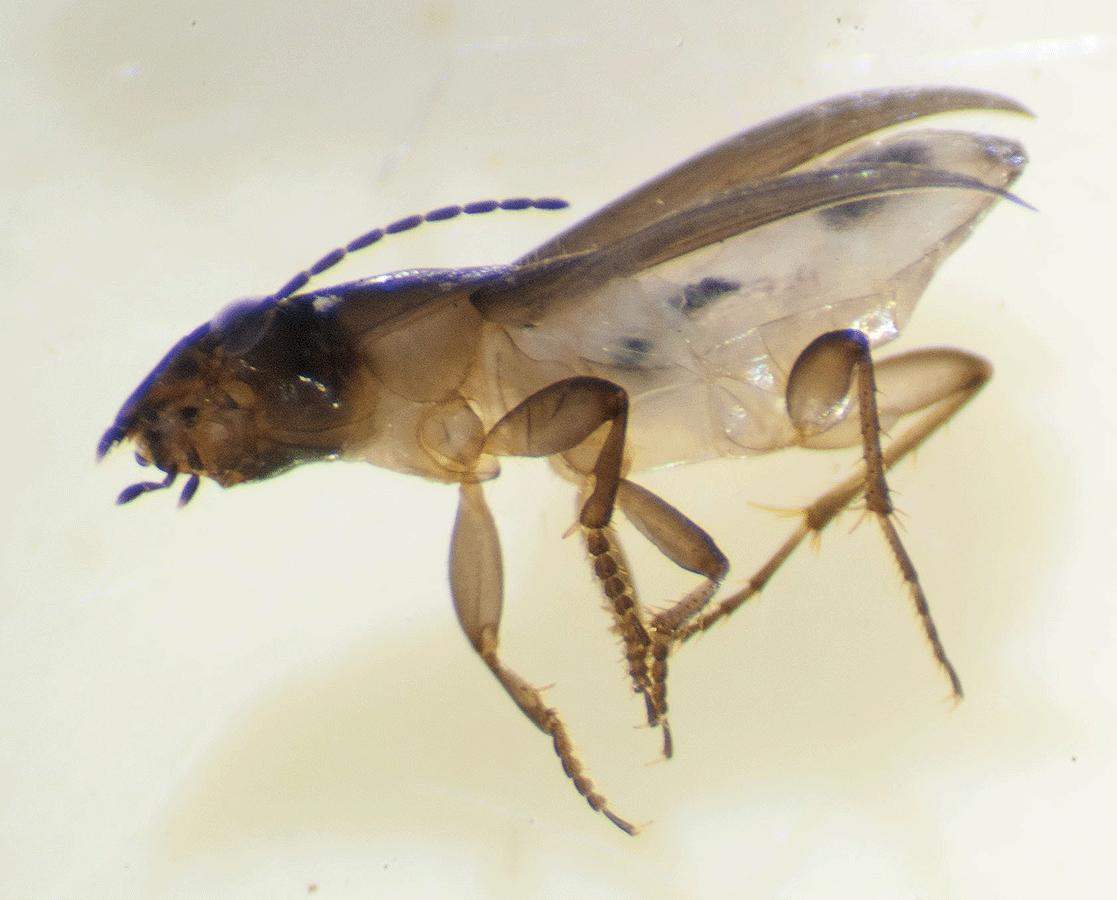
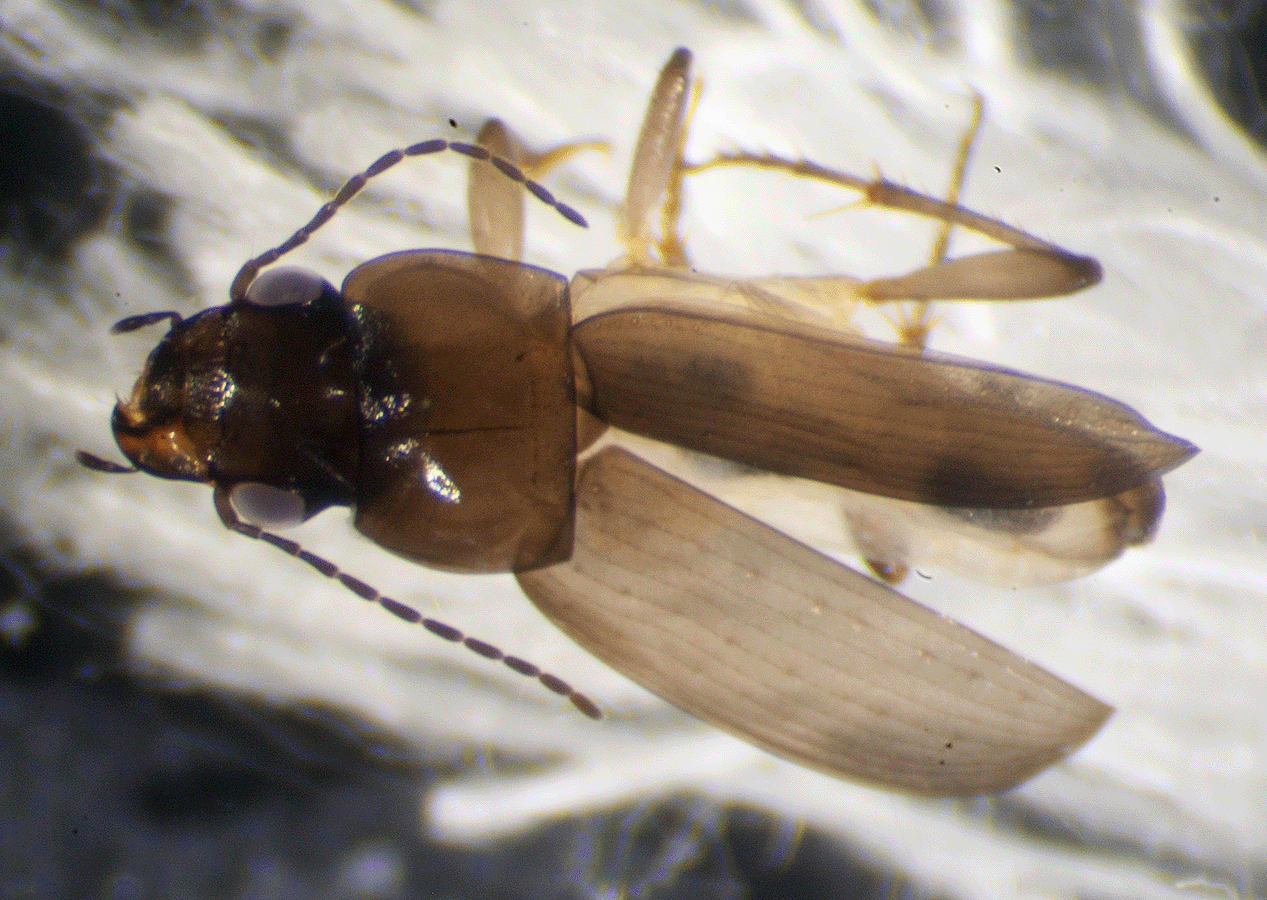
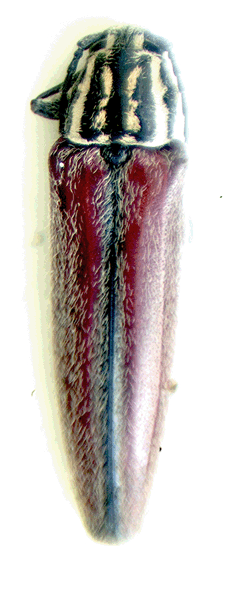
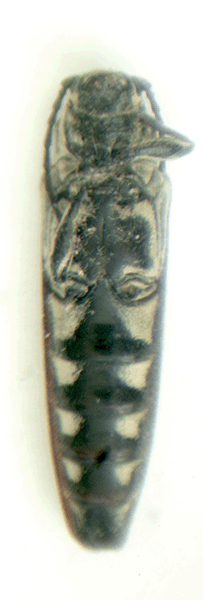
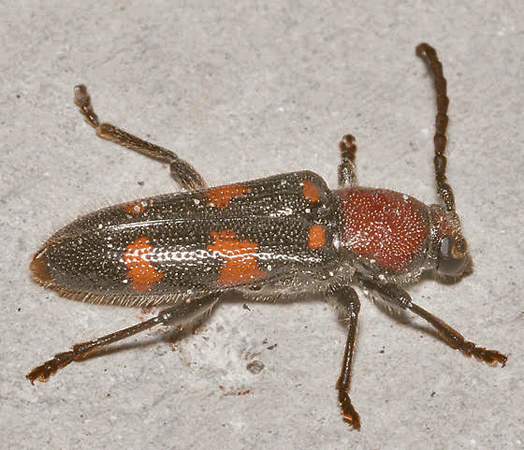 On April 30, 2015, this beetle was crawling on a second floor porch outside a science laboratory door of the Eva Sugden Gomez Environmental Planning Center at the Conservancy of Southwest Florida. Since the door is ~10 m from the eastern edge of the Smith Preserve, it is presumed that the beetle came from the Preserve.
On April 30, 2015, this beetle was crawling on a second floor porch outside a science laboratory door of the Eva Sugden Gomez Environmental Planning Center at the Conservancy of Southwest Florida. Since the door is ~10 m from the eastern edge of the Smith Preserve, it is presumed that the beetle came from the Preserve.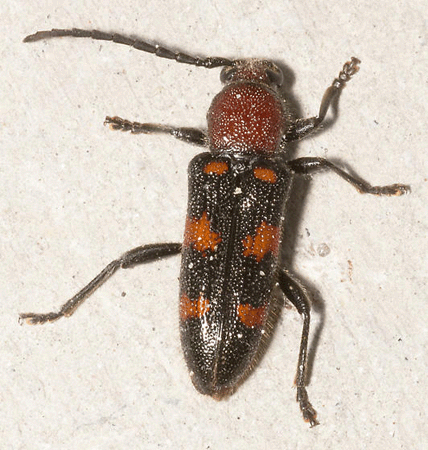 Zagymnus clerinus
Zagymnus clerinus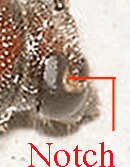 Note: the compound eyes of this adult are notched, the body is covered in many punctations (tiny depressions), and this specimen has very distinctive coloration.
Note: the compound eyes of this adult are notched, the body is covered in many punctations (tiny depressions), and this specimen has very distinctive coloration.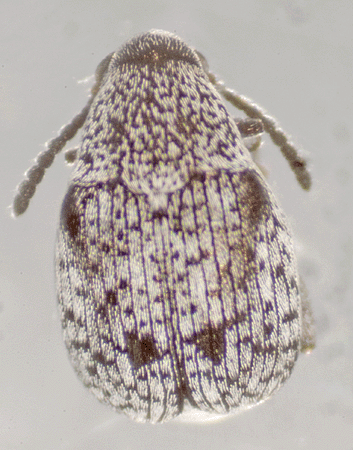 On March 18, 2015, this 1.5 mm long beetle was on a flower of
On March 18, 2015, this 1.5 mm long beetle was on a flower of 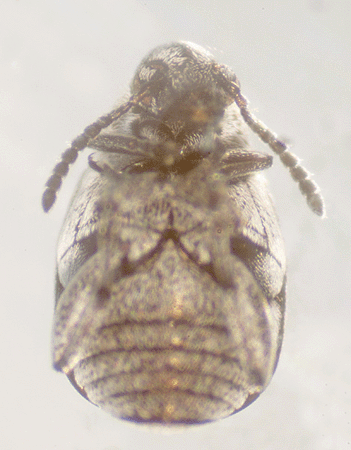 On March 18, 2015, it was identified from these photographs by "v belov", Contributing Editor of <BugGuide.net>, sponsored by Iowa State University Department of Entomology.
On March 18, 2015, it was identified from these photographs by "v belov", Contributing Editor of <BugGuide.net>, sponsored by Iowa State University Department of Entomology. 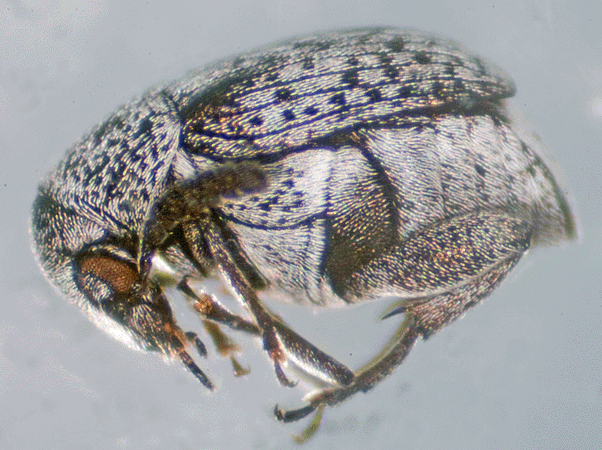
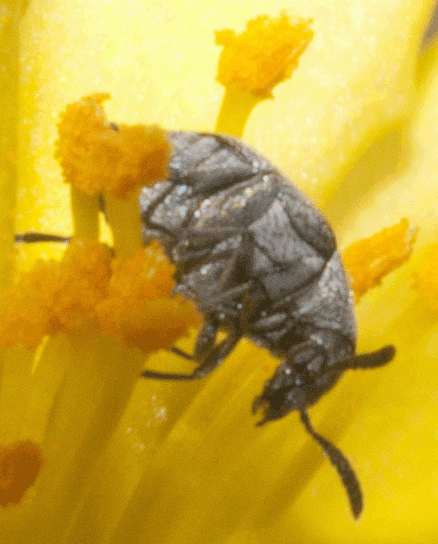
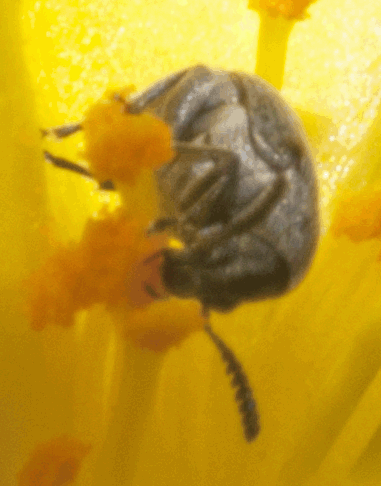
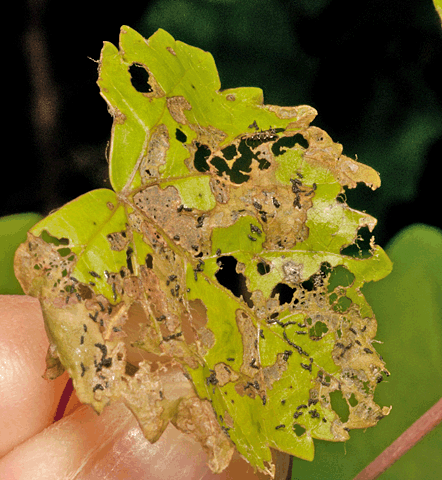 Larvae feed on leaves. On April 14, 2014, grape flea beetle larvae were found devouring leaves of
Larvae feed on leaves. On April 14, 2014, grape flea beetle larvae were found devouring leaves of 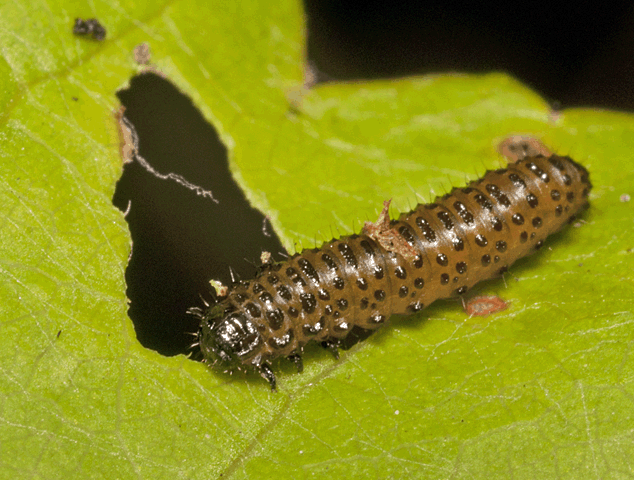 Later, these larvae will pupate just under soil litter. Adults will emerge in late July and August and feed on leaves. They will not mate or lay eggs until the next spring.
Later, these larvae will pupate just under soil litter. Adults will emerge in late July and August and feed on leaves. They will not mate or lay eggs until the next spring. 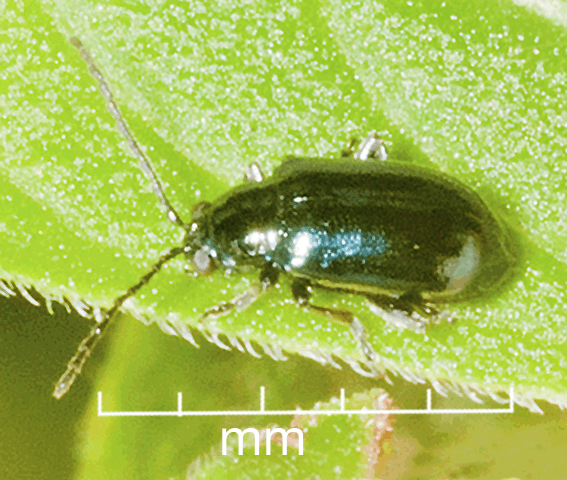
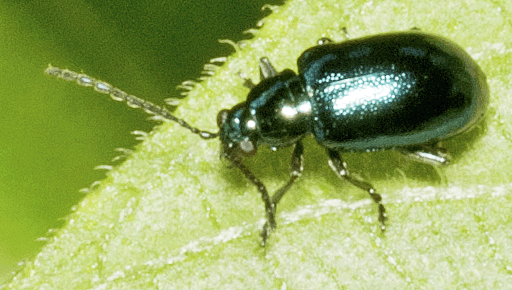
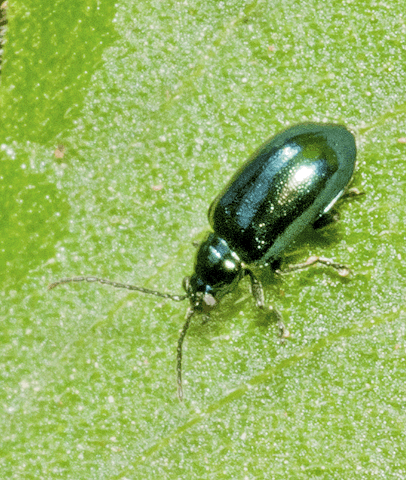
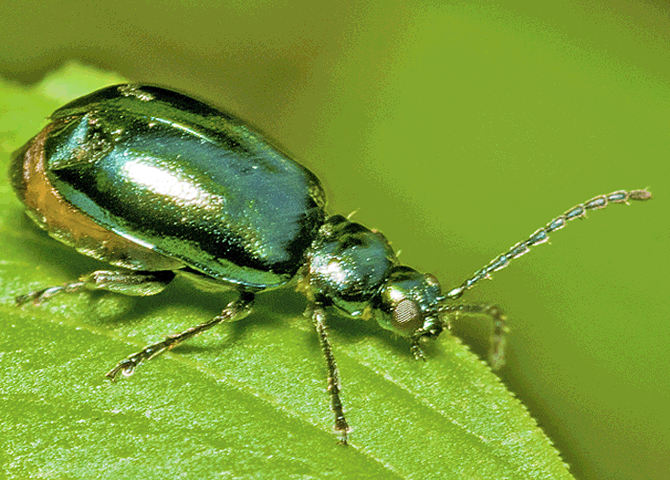
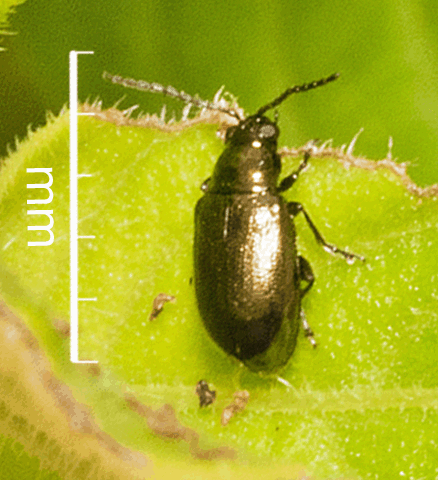
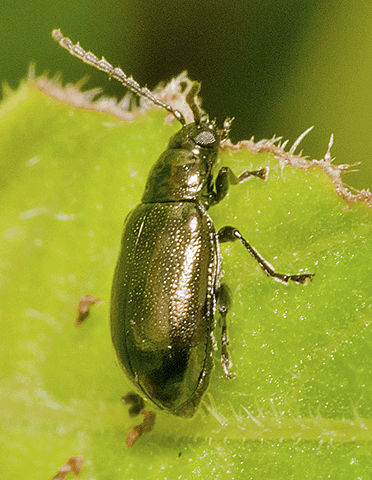
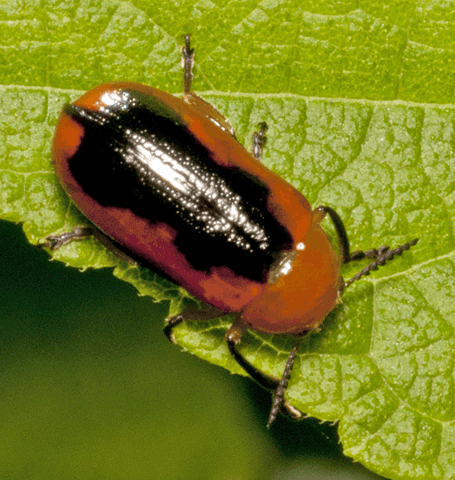
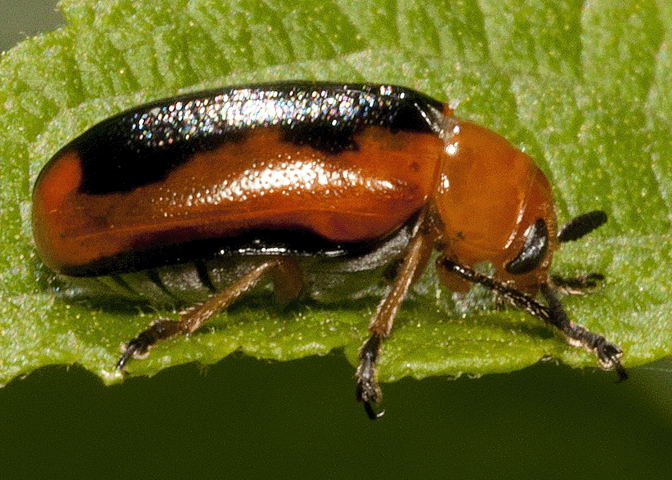

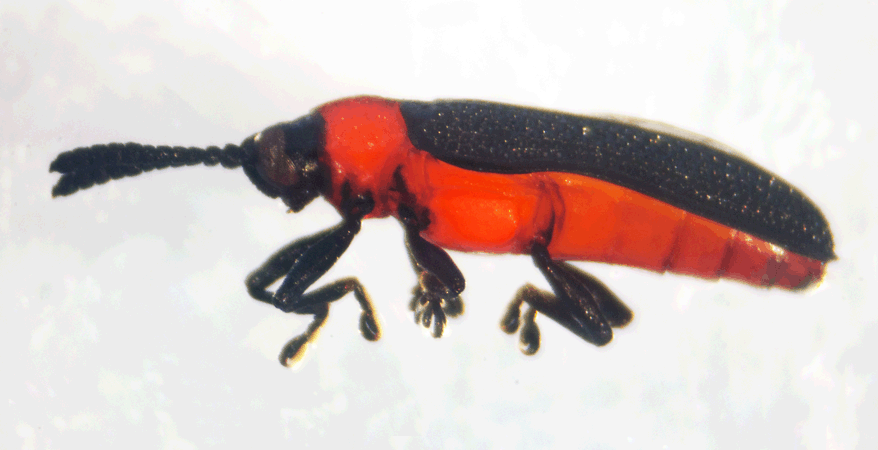
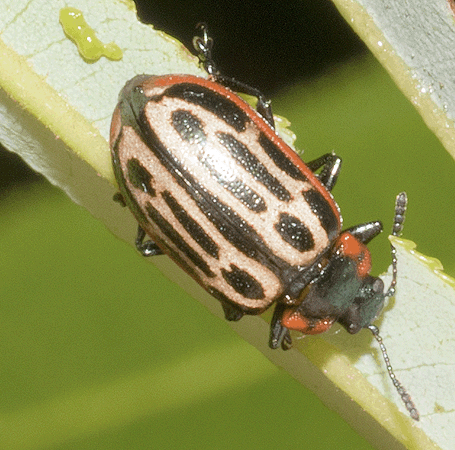
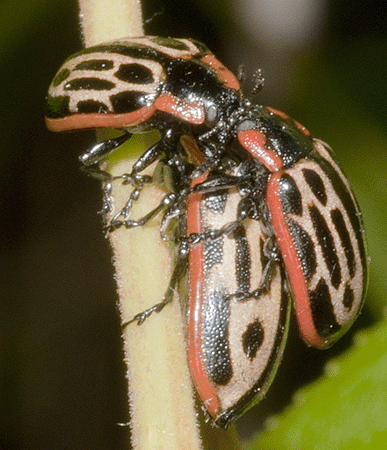 Adults are ~ 6 mm long with a black head and thorax. The margins of the thorax are yellow or red. As can be seen in these photographs, the elytra (first pair of wings) are yellow with broken black stripes. The species name "scripta" means "written over" and may describe the markings on the elytra.
Adults are ~ 6 mm long with a black head and thorax. The margins of the thorax are yellow or red. As can be seen in these photographs, the elytra (first pair of wings) are yellow with broken black stripes. The species name "scripta" means "written over" and may describe the markings on the elytra.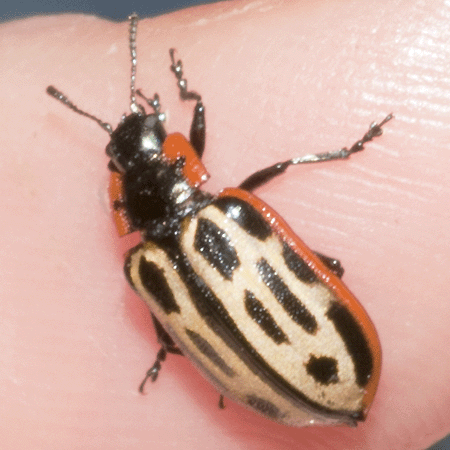 After mating, females lay clusters of 25 or more yellow eggs on the bottom of leaves.
After mating, females lay clusters of 25 or more yellow eggs on the bottom of leaves. 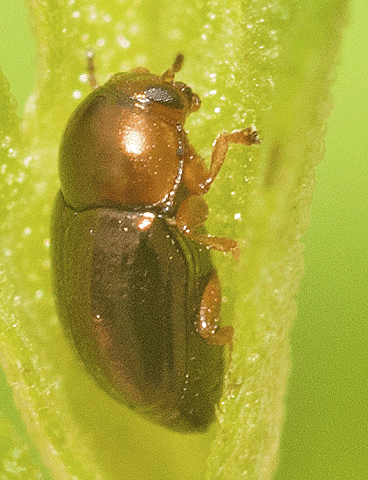
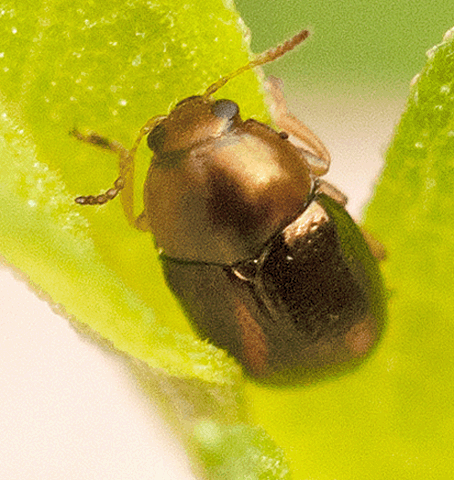
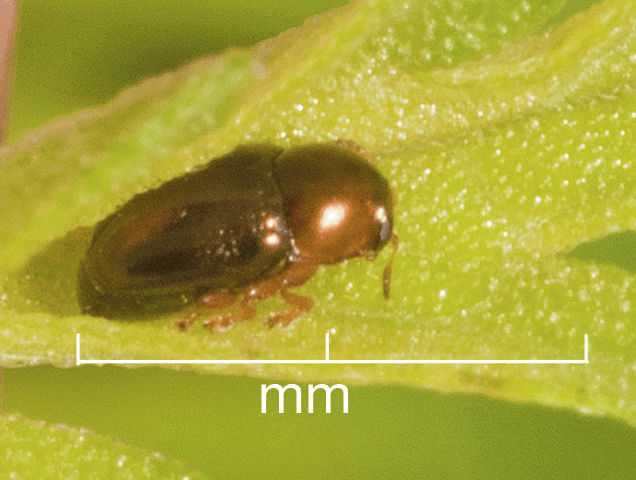
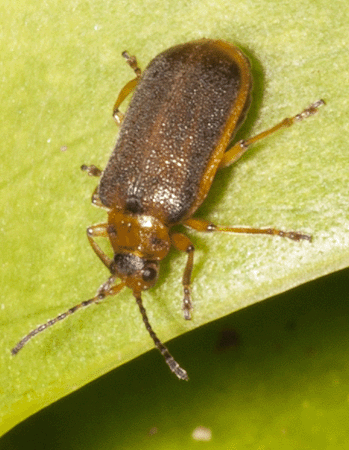 On April 9, 2015, this 3.5 mm beetle was photographed sitting on top of a
On April 9, 2015, this 3.5 mm beetle was photographed sitting on top of a 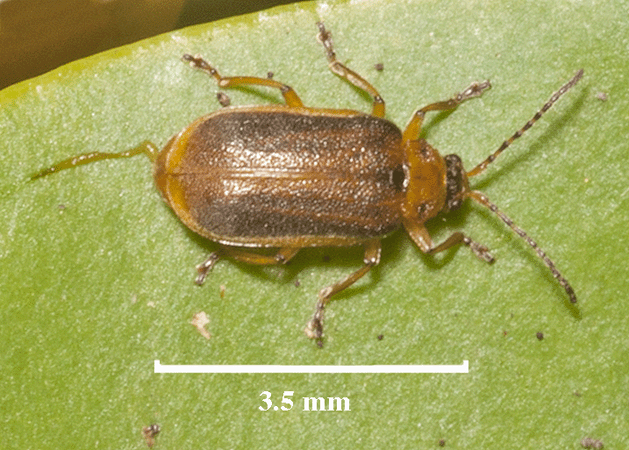
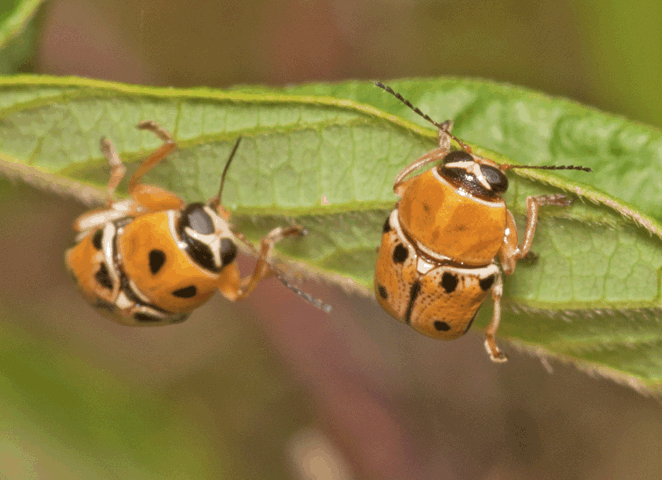
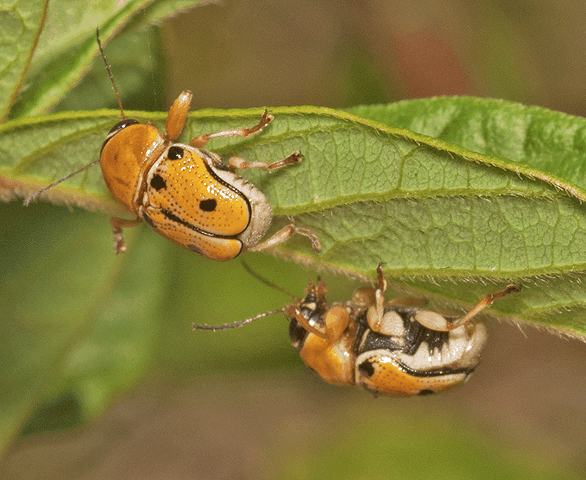
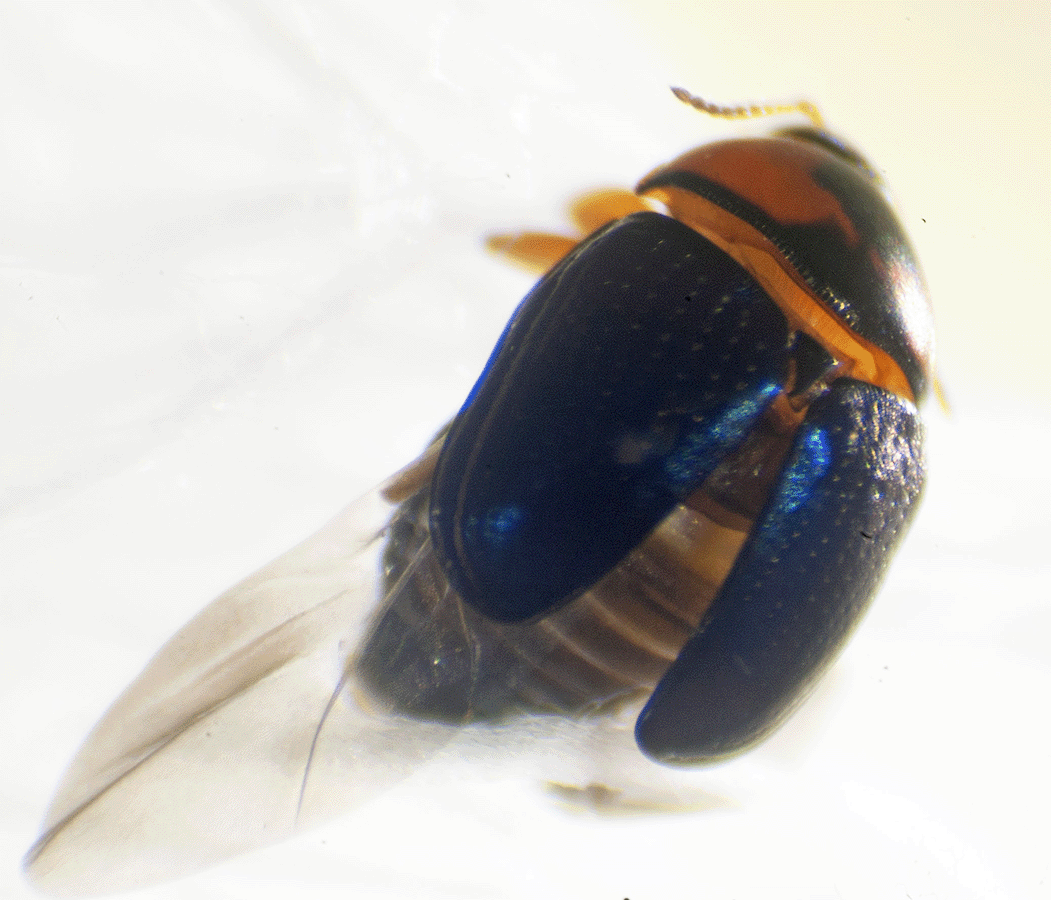
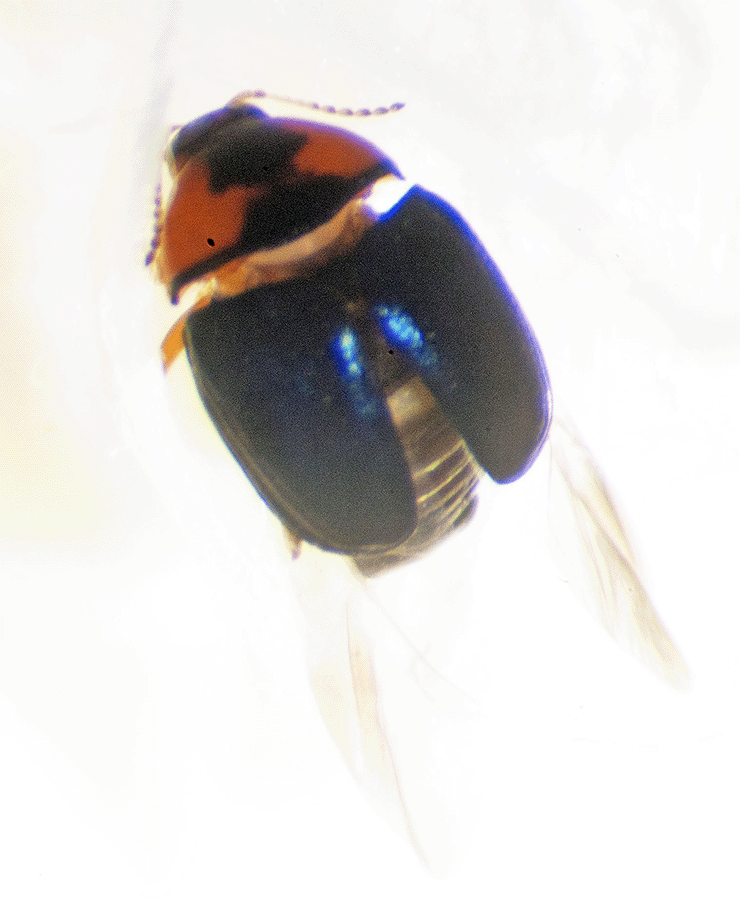
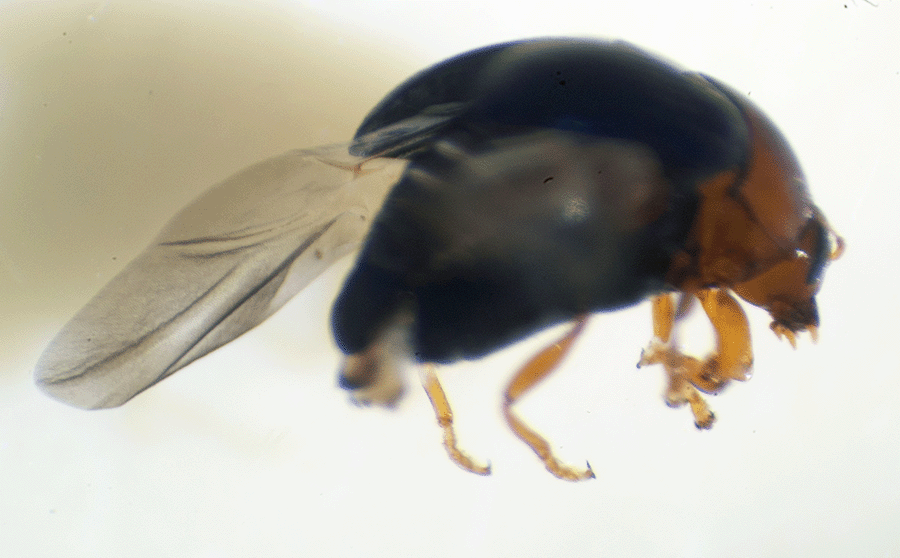

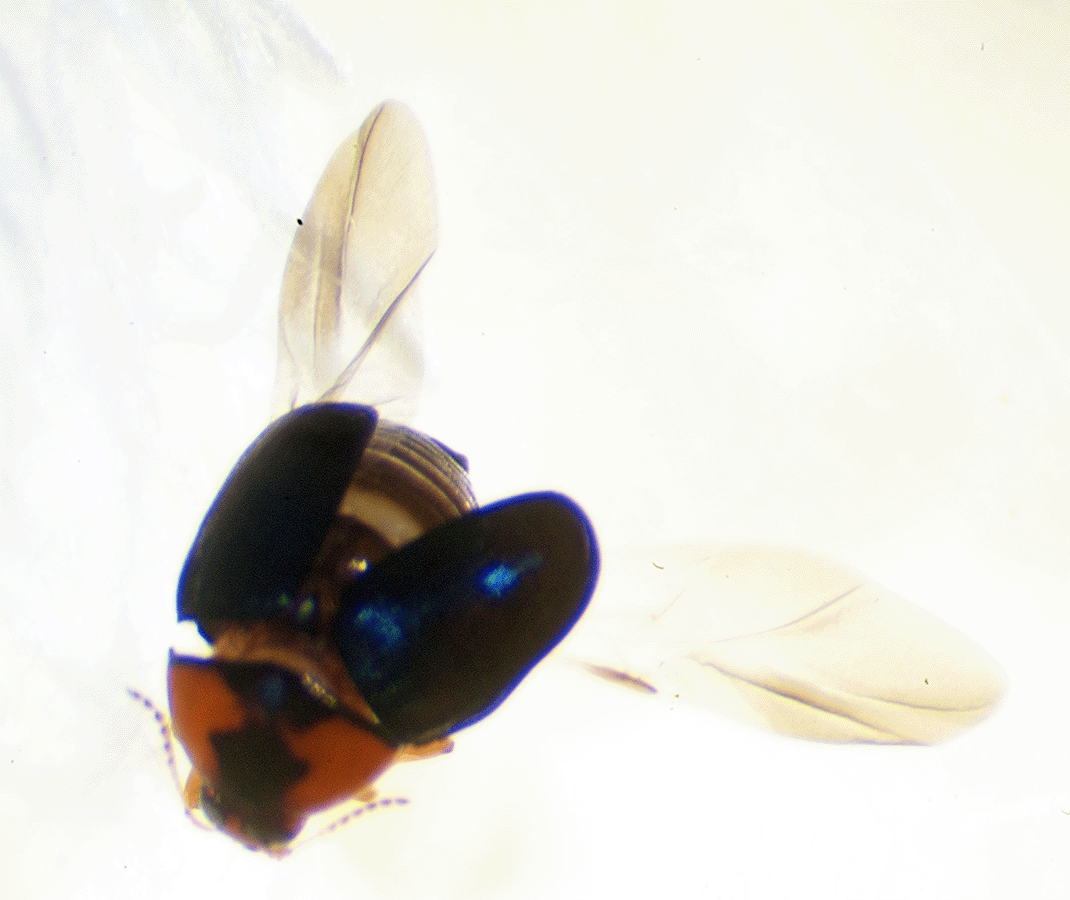
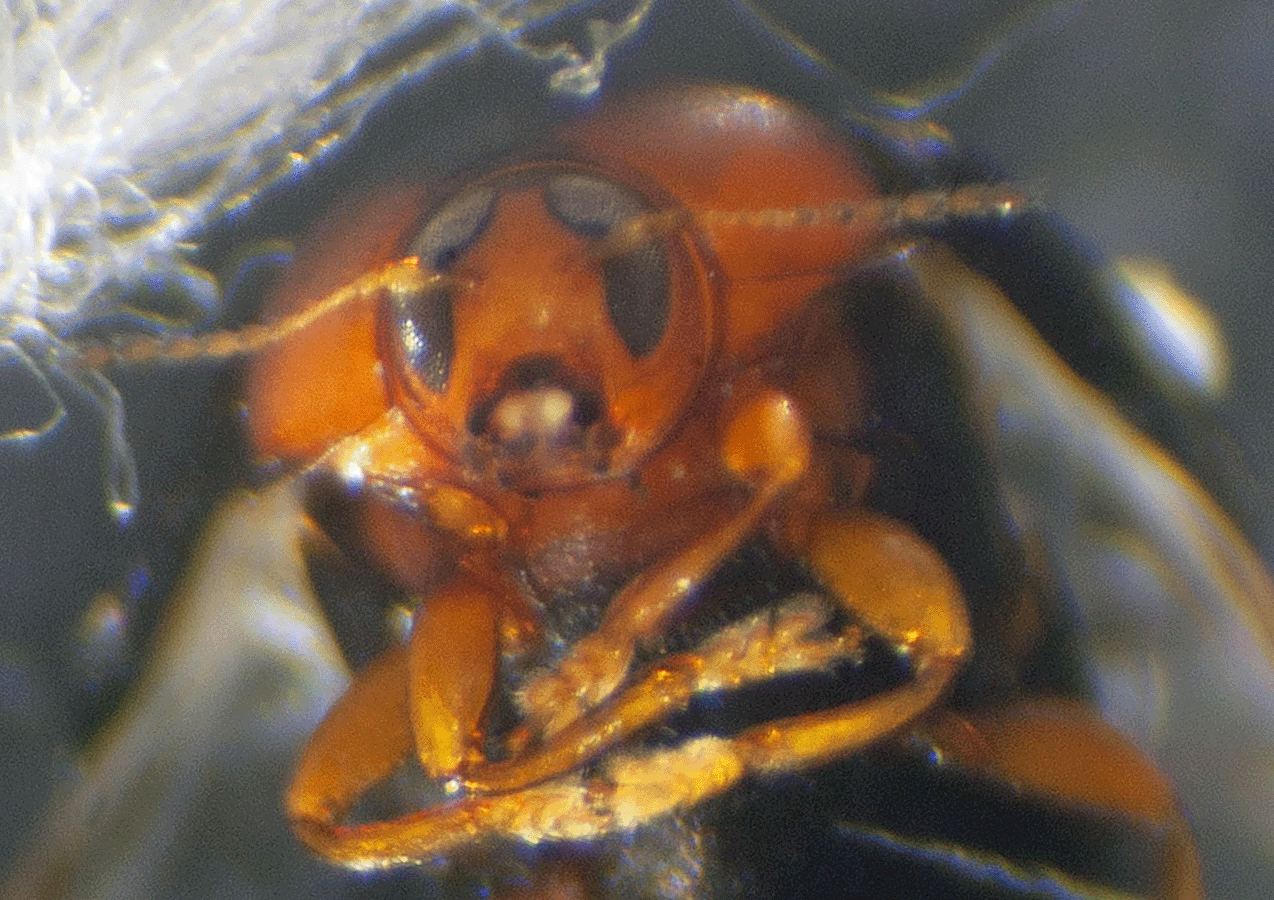
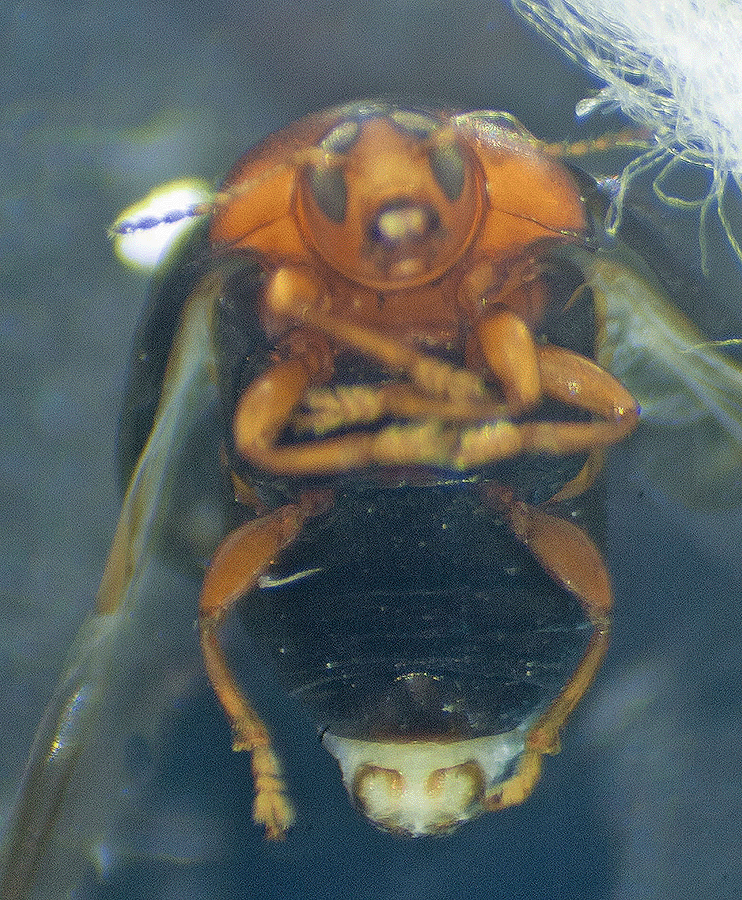
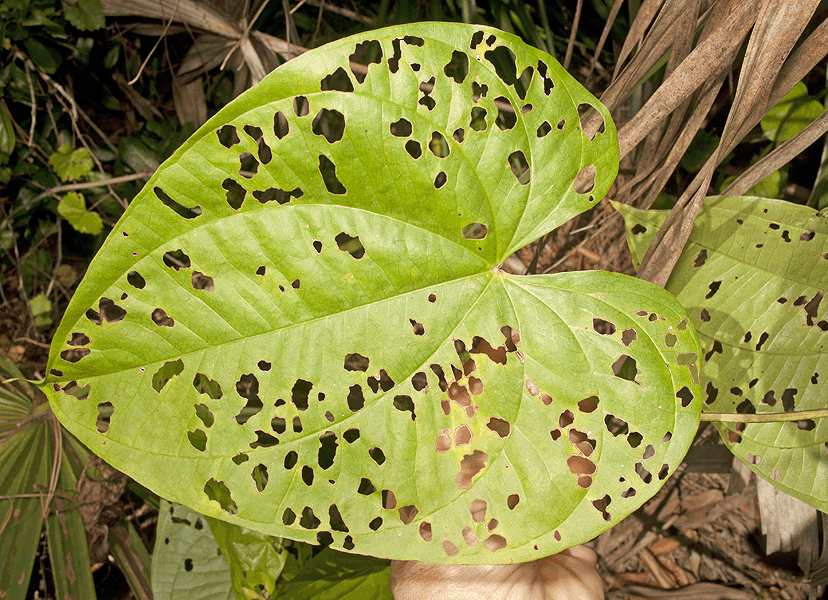
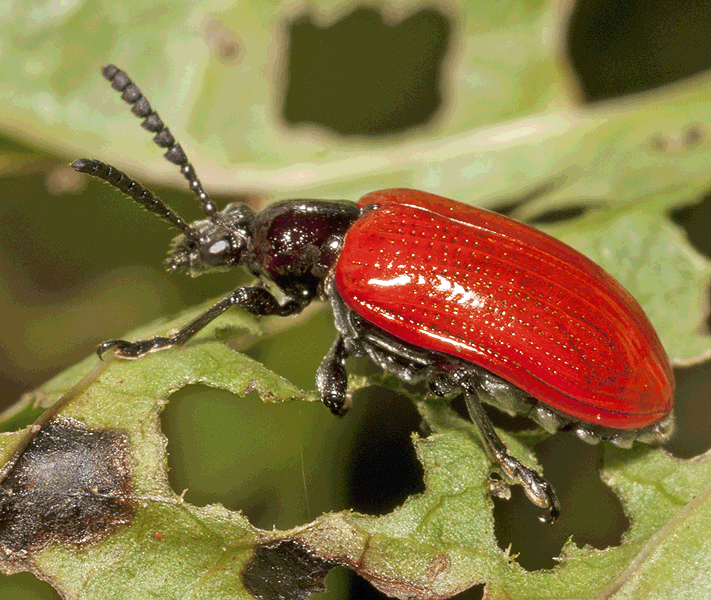 On November 6. 2015, many leaves of
On November 6. 2015, many leaves of 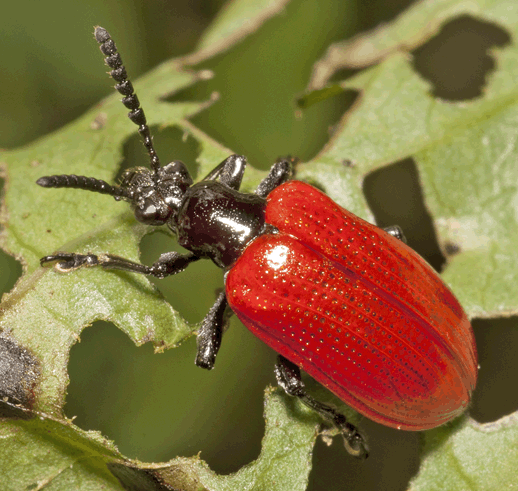 Females lay approximately 1800 eggs on the bottom of leaves. These eggs are white. Eggs hatch in 4 days. Very young larva are yellow to red, turning gray to red as they mature. A full grown larvae pupates in the soil, forming a cocoon. Adults emerge from cocoons in 12 to 16 days and live five or more months. An entire generation takes 30 days.
Females lay approximately 1800 eggs on the bottom of leaves. These eggs are white. Eggs hatch in 4 days. Very young larva are yellow to red, turning gray to red as they mature. A full grown larvae pupates in the soil, forming a cocoon. Adults emerge from cocoons in 12 to 16 days and live five or more months. An entire generation takes 30 days. 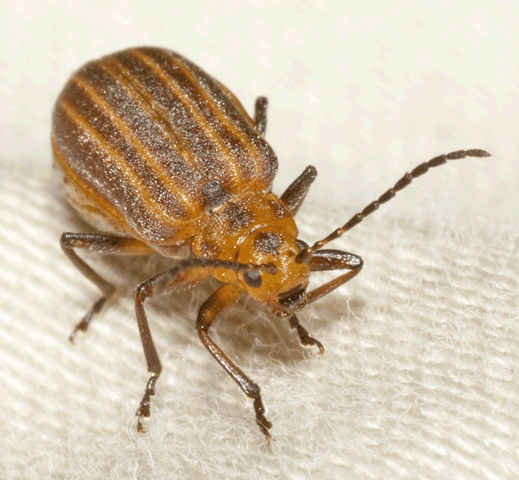
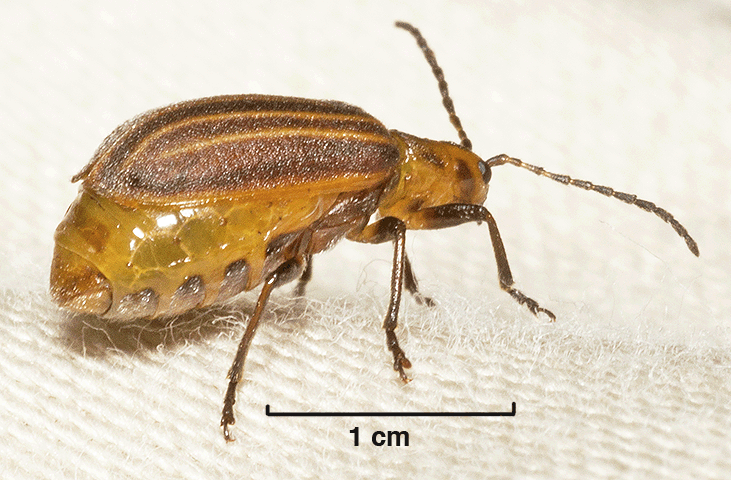
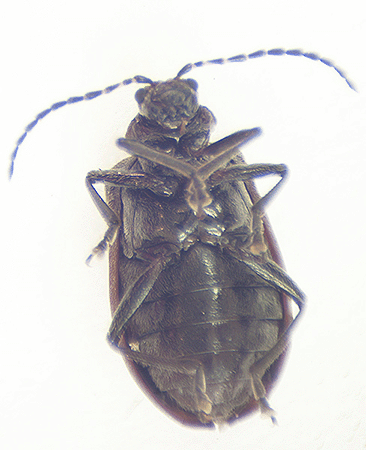
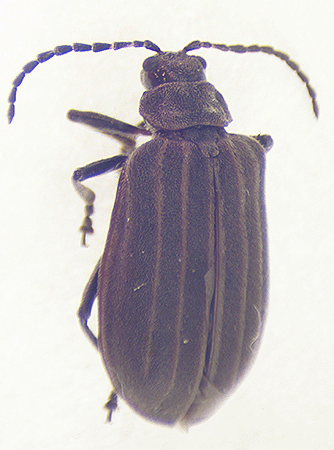
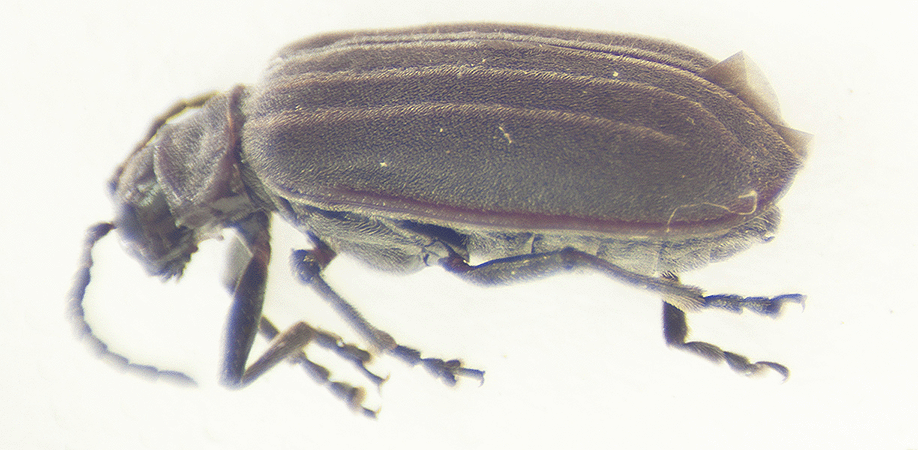
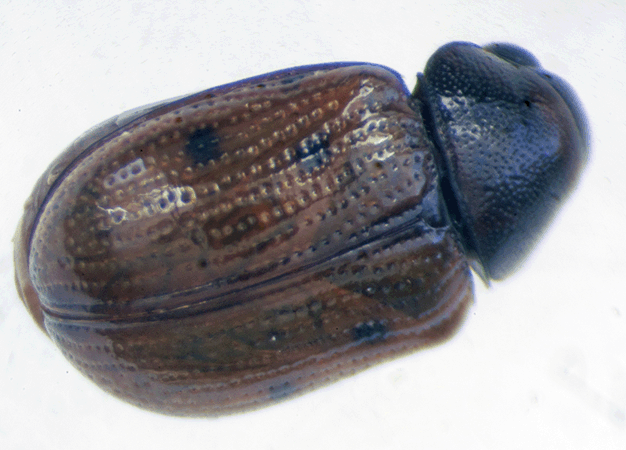
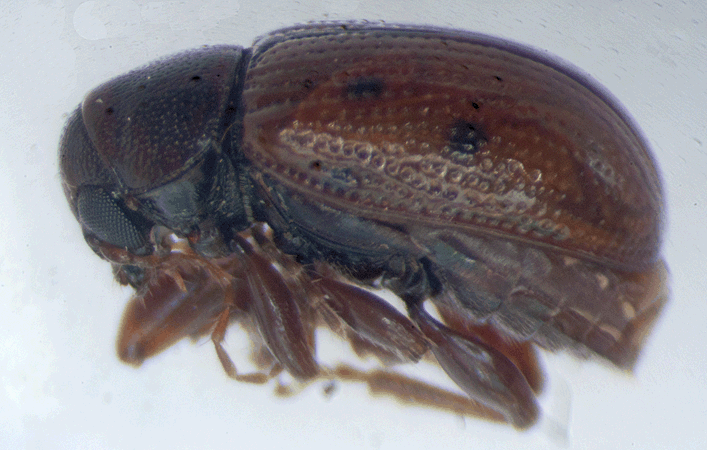
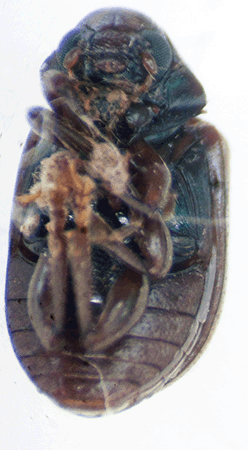
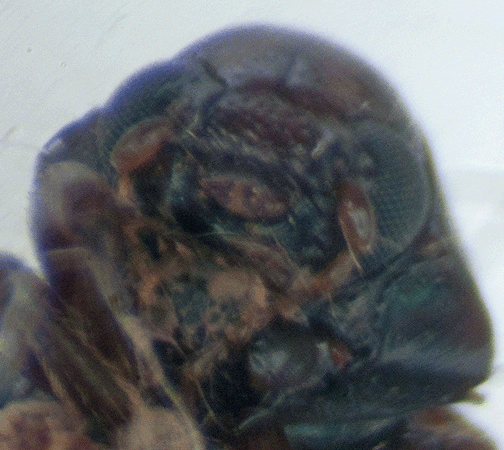
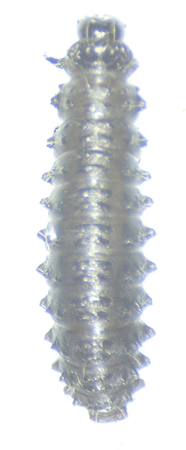
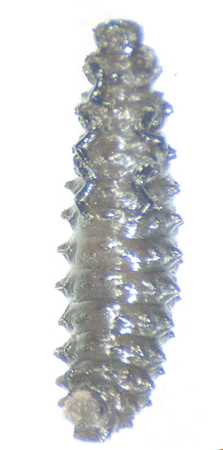
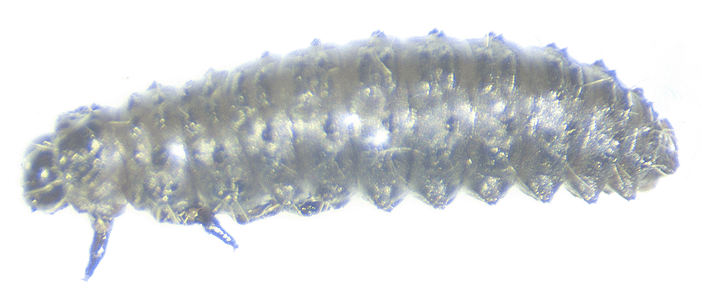
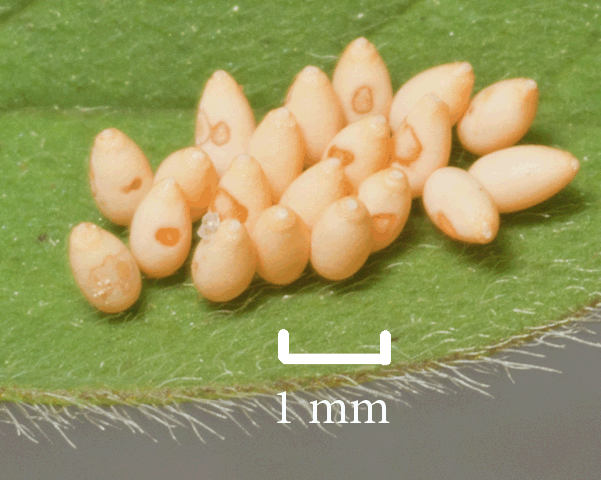
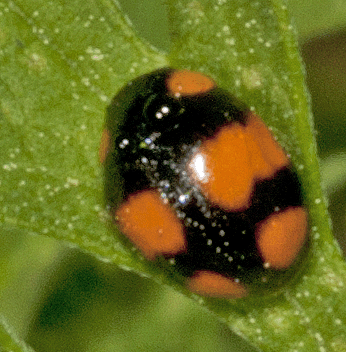
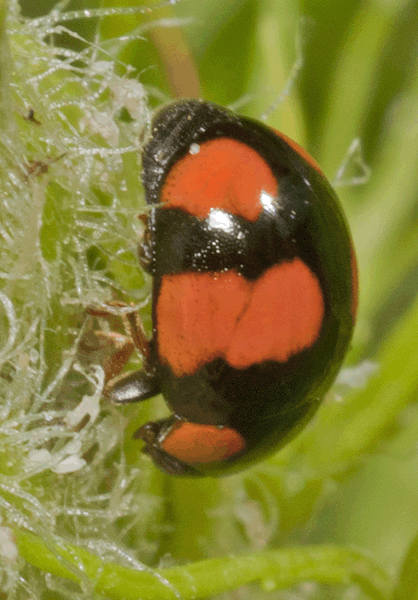
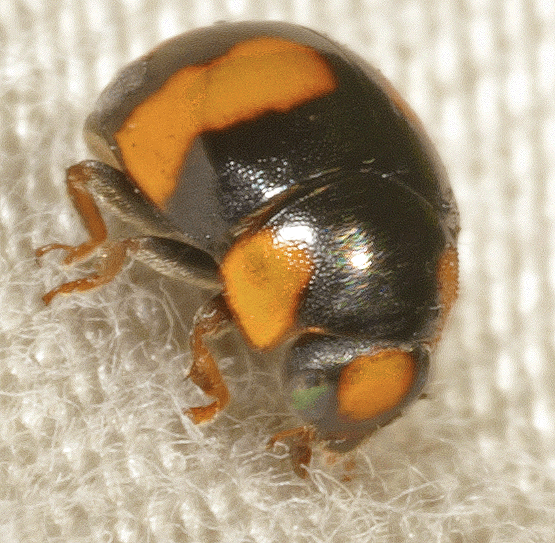
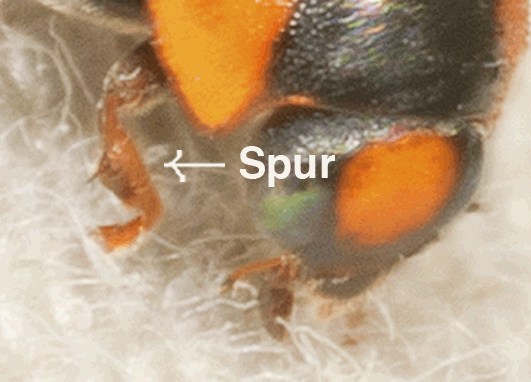
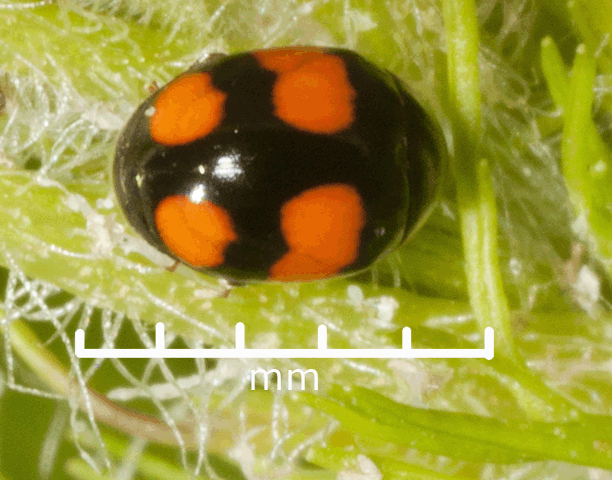
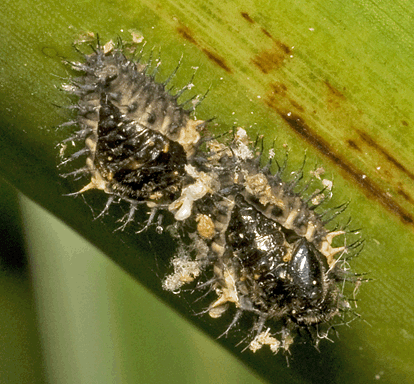
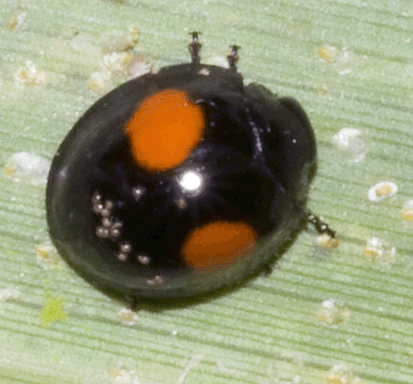
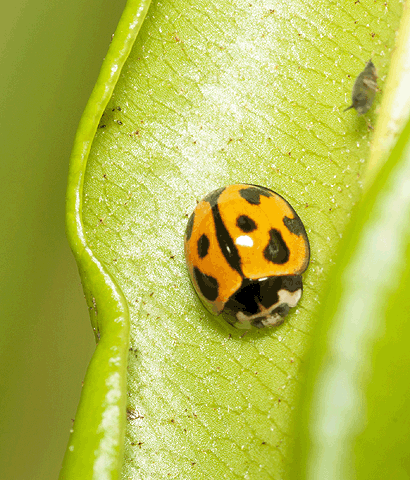
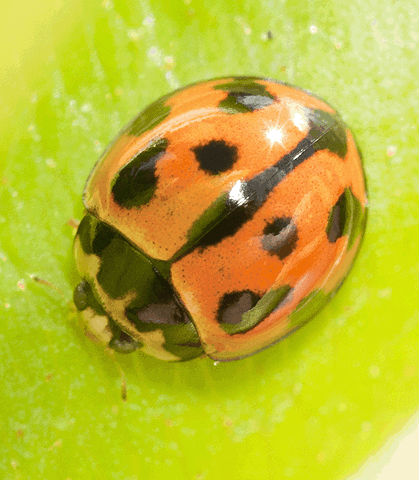
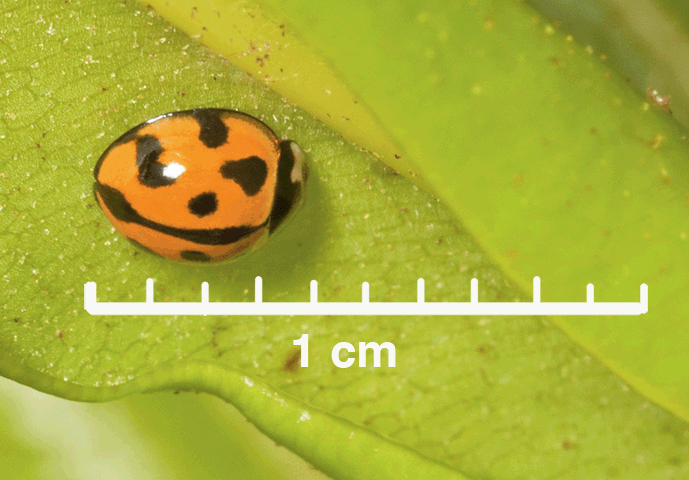
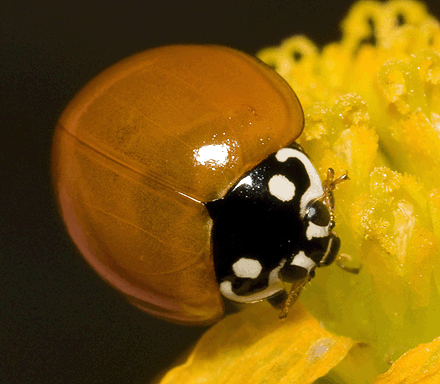
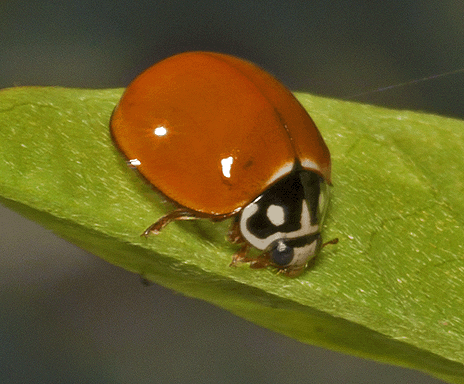
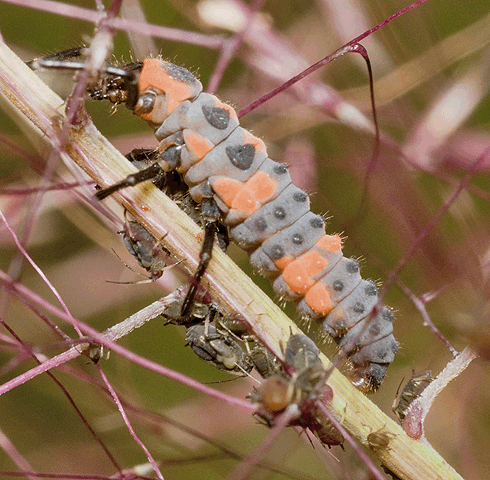 Cyclone
Cyclone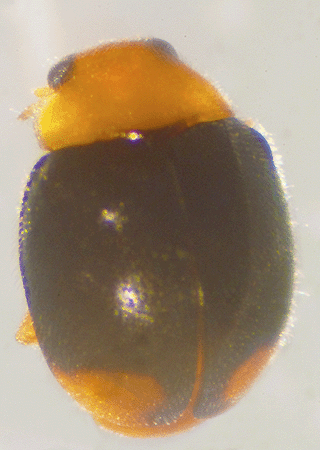 On March 25, 2015, this 1.4 mm long beetle was found on
On March 25, 2015, this 1.4 mm long beetle was found on 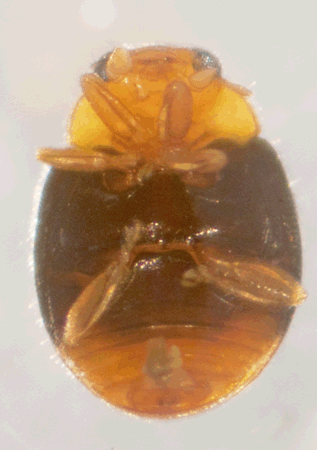
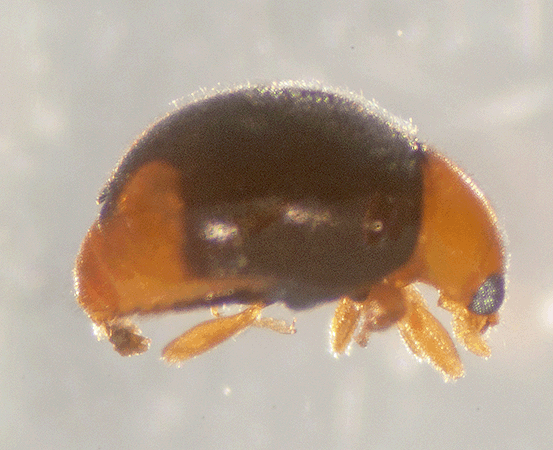
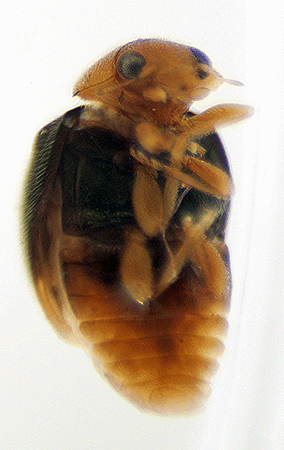
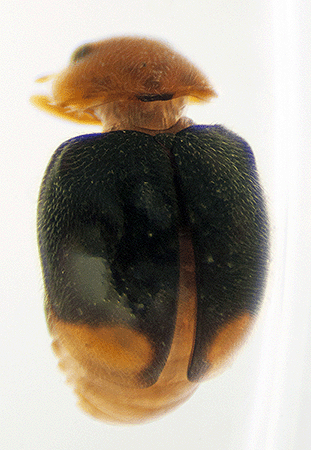
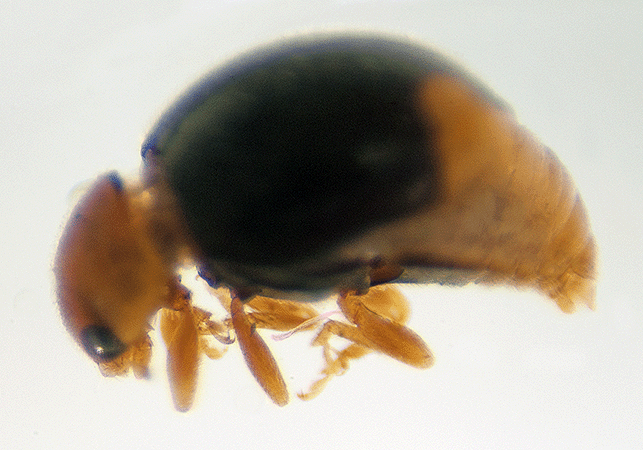
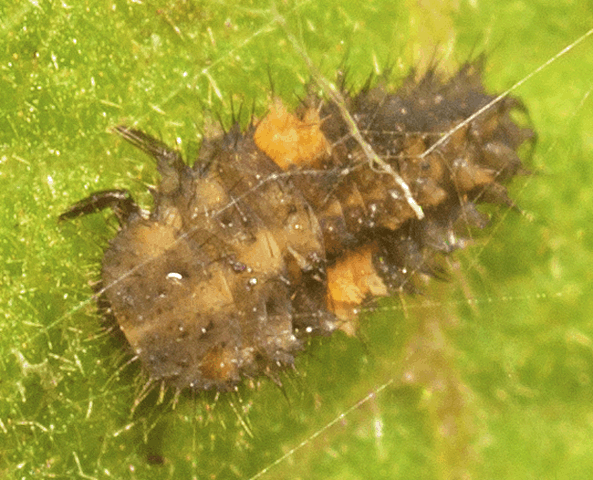
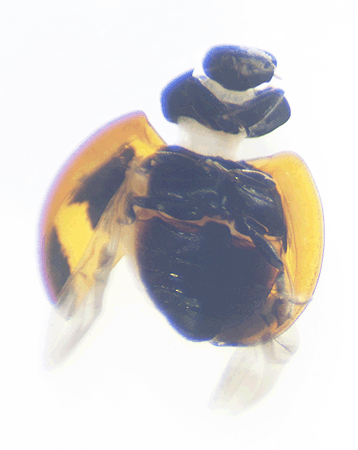
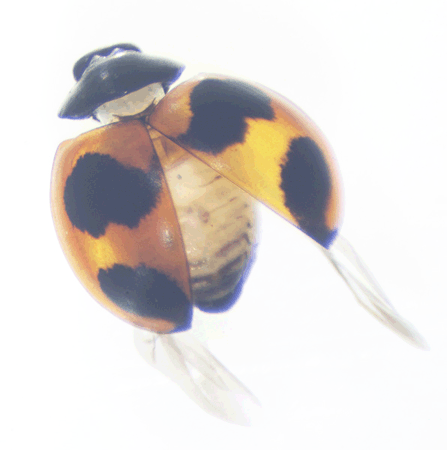
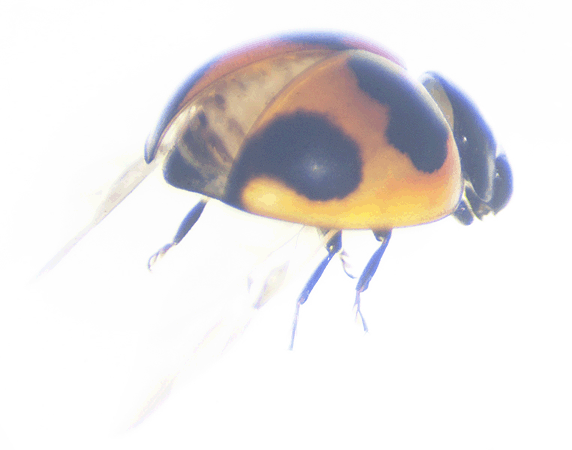
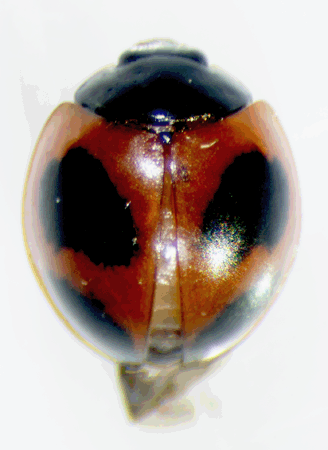
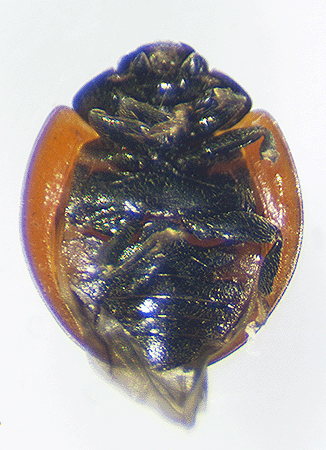
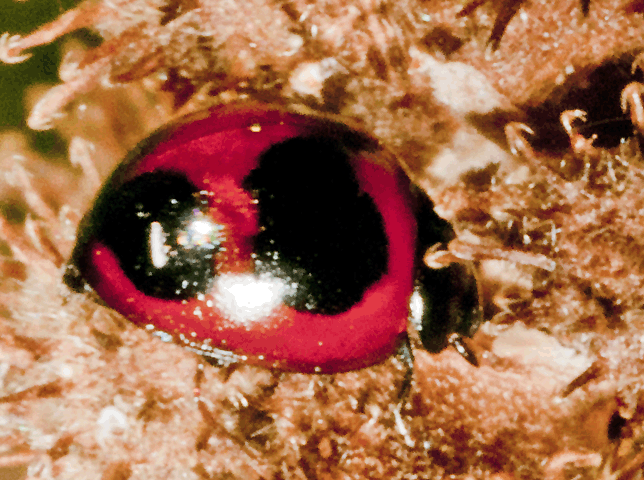
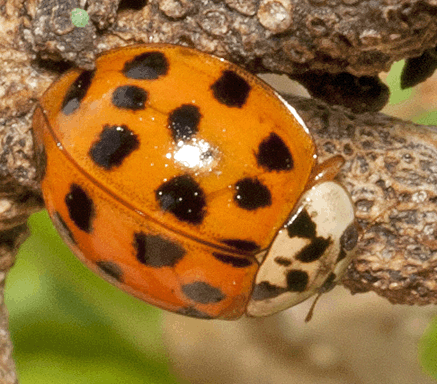
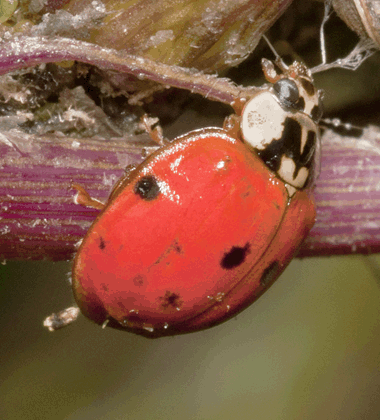
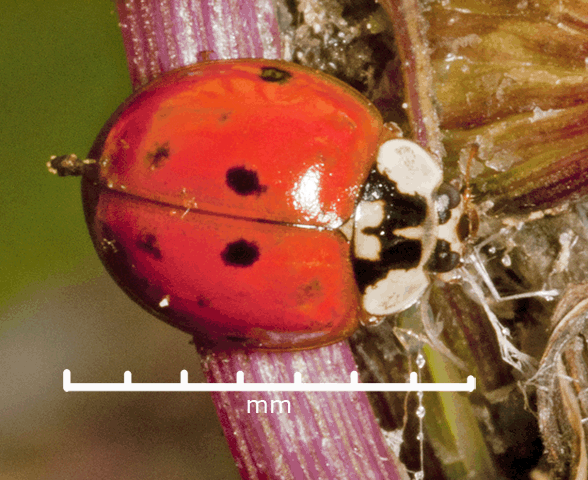 Harmonia axyridis is a large, arboreal (tree-dwelling) member of Family Coccinellidae. This beetle's color ranges from yellow-orange to black. The number of spots ranges from 0 to 22. There is always a "M" or "W" (depending on how it is viewed) marking on its pronotum, and most individuals have brown or reddish legs.
Harmonia axyridis is a large, arboreal (tree-dwelling) member of Family Coccinellidae. This beetle's color ranges from yellow-orange to black. The number of spots ranges from 0 to 22. There is always a "M" or "W" (depending on how it is viewed) marking on its pronotum, and most individuals have brown or reddish legs.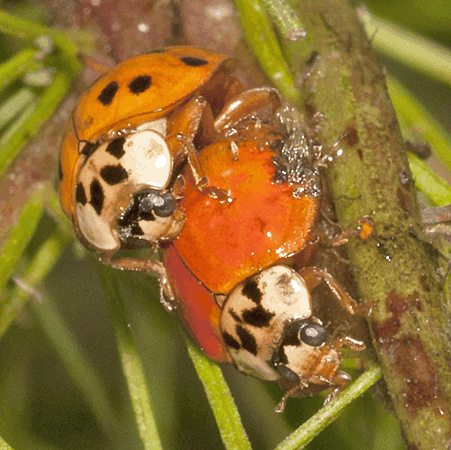 The photograph at left shows two beetles mating on December 23, 2013 in the Smith Preserve. They use pheromones to attract each other.
The photograph at left shows two beetles mating on December 23, 2013 in the Smith Preserve. They use pheromones to attract each other. 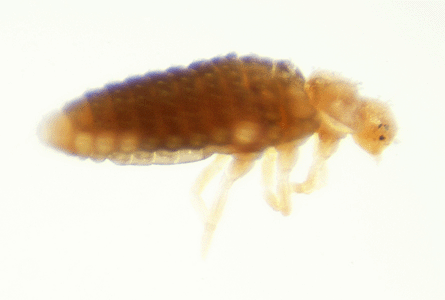 On December 30, 2015, this 1.25 mm long beetle larva was captured in a sweep net sample obtained in low, dry vegetation growing along the northeastern gopher tortoise fence, just north of Smith Preserve Way.
On December 30, 2015, this 1.25 mm long beetle larva was captured in a sweep net sample obtained in low, dry vegetation growing along the northeastern gopher tortoise fence, just north of Smith Preserve Way. 

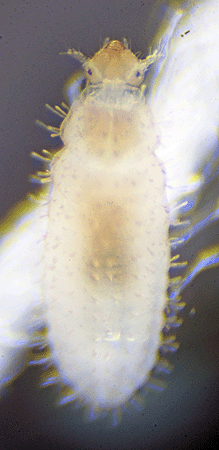
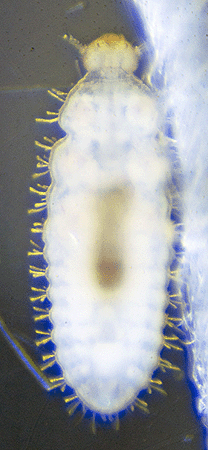
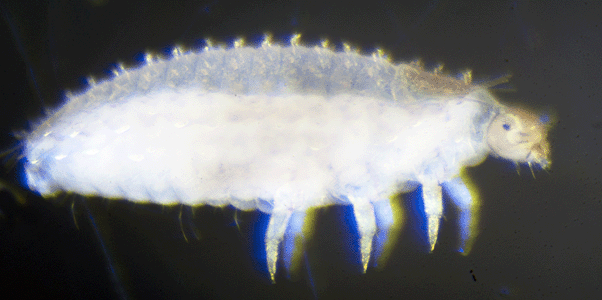 On April 5, 2017, the family was identified by Adam Ślipiński. He stated, "Corylophidae for sure......not sure the genus though. ☺" Dr. Ślipiński is a research scientist and curator at the Australian National Insect Collection.
On April 5, 2017, the family was identified by Adam Ślipiński. He stated, "Corylophidae for sure......not sure the genus though. ☺" Dr. Ślipiński is a research scientist and curator at the Australian National Insect Collection.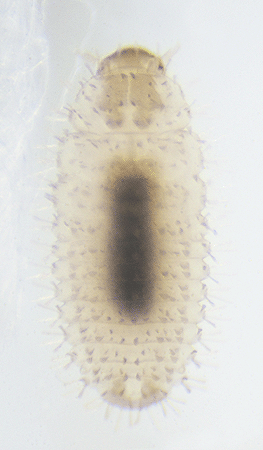
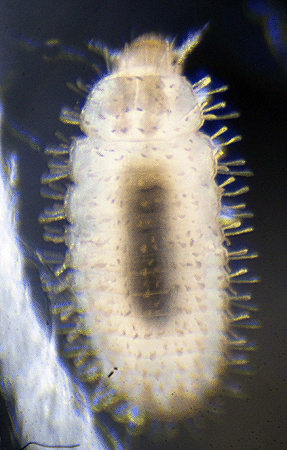
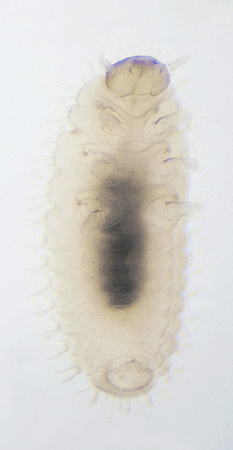
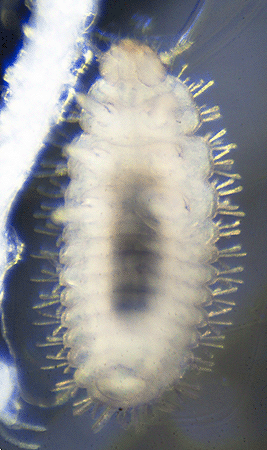
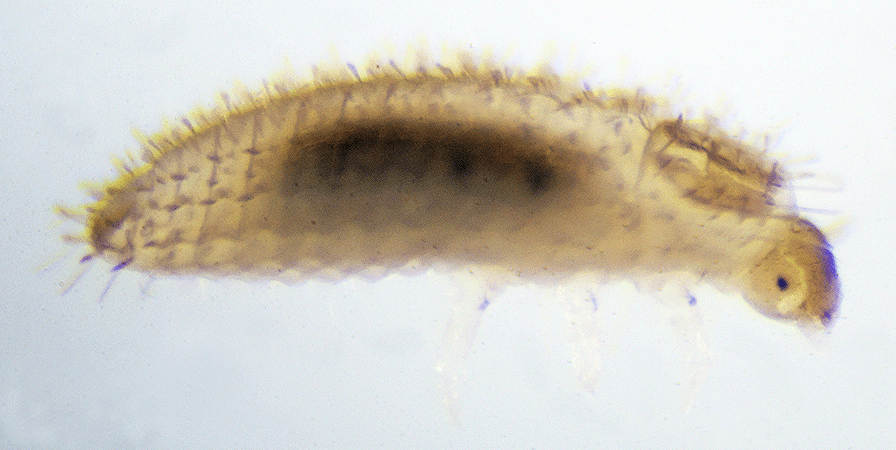
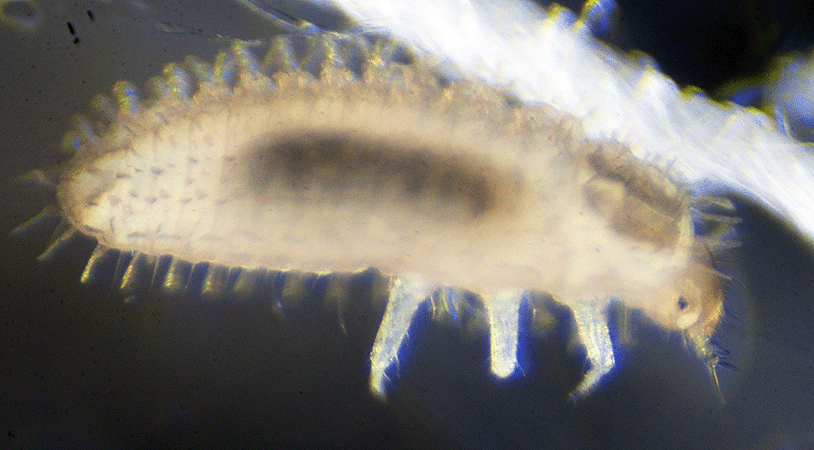
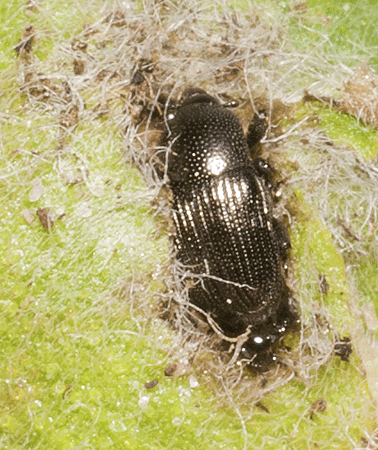
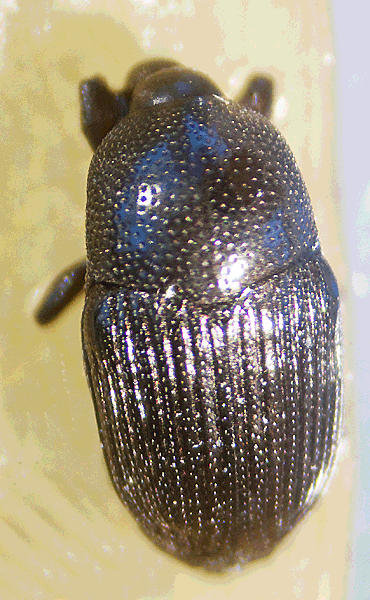 On February 11, 2015, this 5 mm long snout beetle was feasting on the flower head of
On February 11, 2015, this 5 mm long snout beetle was feasting on the flower head of 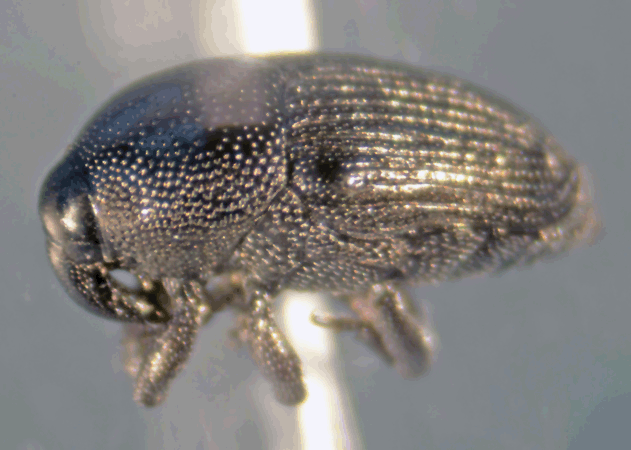

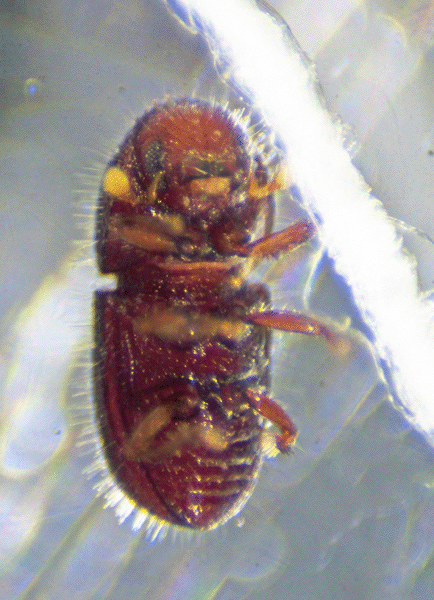
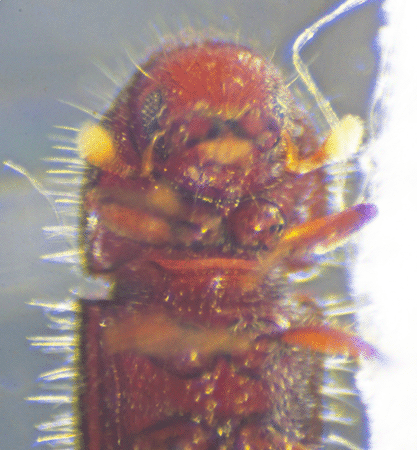
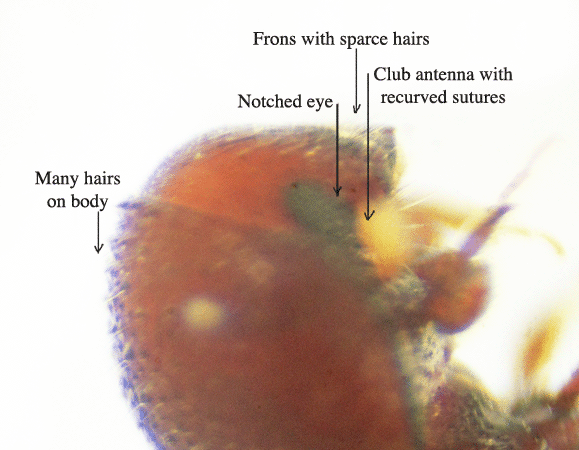 Color ranges from reddish brown to almost black. As shown in the photograph at left, the frons (upper part of insect's face) is covered with sparse hairs. The anterior margin of the compound eye is notched. The club antenna is obliquely truncate with two recurved sutures on the posterior face. This specimen's antennae are a distinctive yellow-orange color. The body is covered by many stiff hairs.
Color ranges from reddish brown to almost black. As shown in the photograph at left, the frons (upper part of insect's face) is covered with sparse hairs. The anterior margin of the compound eye is notched. The club antenna is obliquely truncate with two recurved sutures on the posterior face. This specimen's antennae are a distinctive yellow-orange color. The body is covered by many stiff hairs.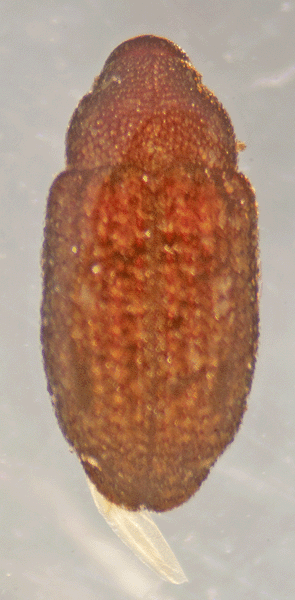
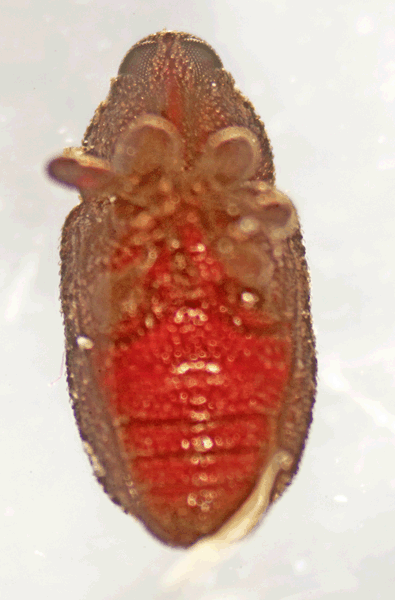 This 4 mm-long weevil was caught in a yellow bowl trap placed beneath a
This 4 mm-long weevil was caught in a yellow bowl trap placed beneath a 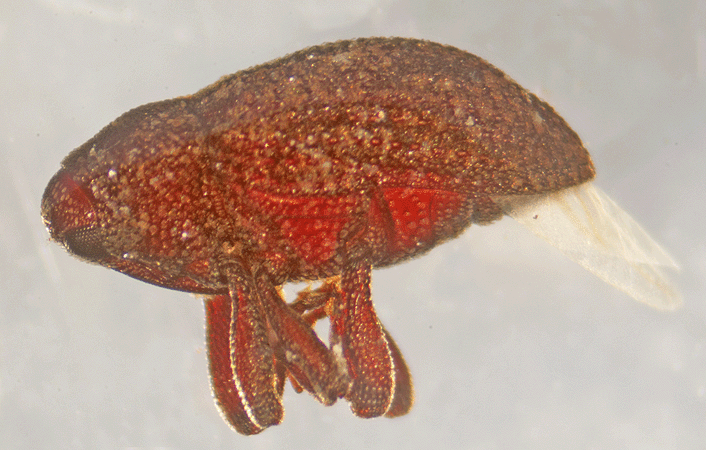
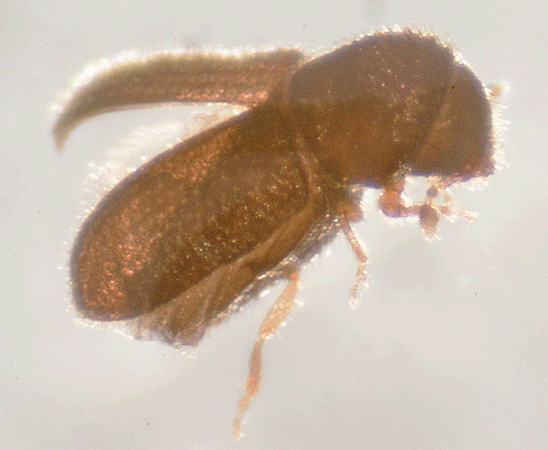 This 1 mm long beetle was collected in leaf litter on December 19, 2014 under a citrus tree in the northeast hammock of the Smith Preserve. It was isolated from the litter using a Berlese funnel. These photographs were produced using photomicroscopy.
This 1 mm long beetle was collected in leaf litter on December 19, 2014 under a citrus tree in the northeast hammock of the Smith Preserve. It was isolated from the litter using a Berlese funnel. These photographs were produced using photomicroscopy.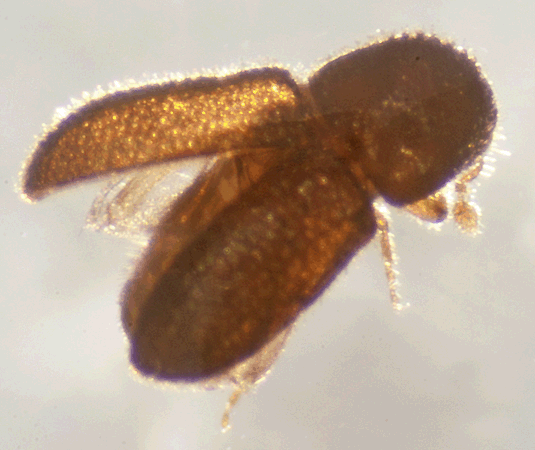 Since that measurement was made with a metric ruler under a microscope, it is accurate.
Since that measurement was made with a metric ruler under a microscope, it is accurate. 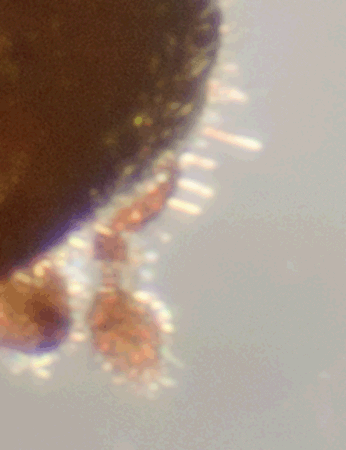 Members of this genus also have erect and light colored thick bristles.
Members of this genus also have erect and light colored thick bristles. 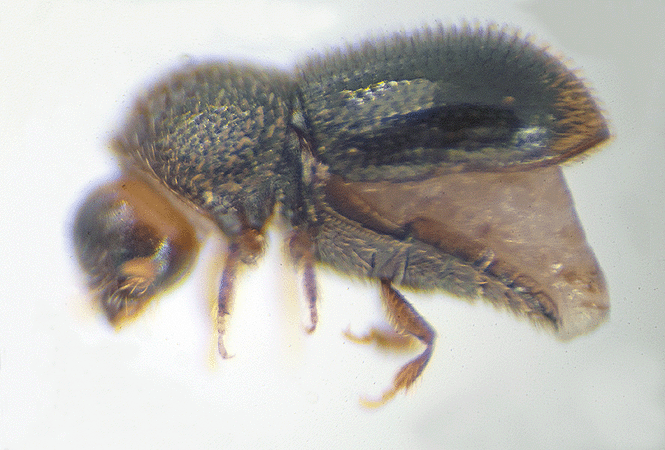
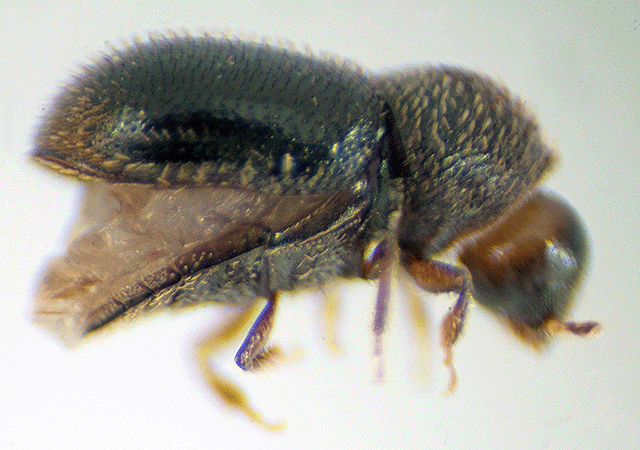 According to <BugGuide.net> there are 14 species in our area and ~180 worldwide. They range in size from 0.6 mm to 2.2 mm.
According to <BugGuide.net> there are 14 species in our area and ~180 worldwide. They range in size from 0.6 mm to 2.2 mm. 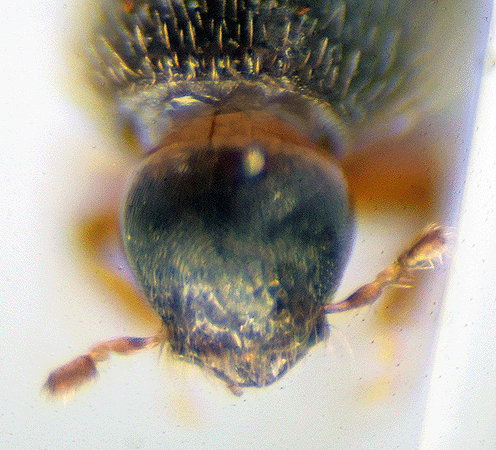
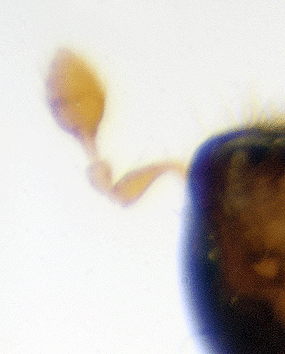
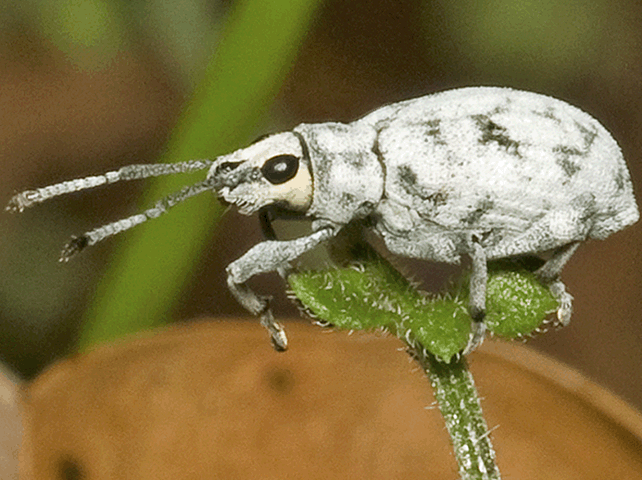
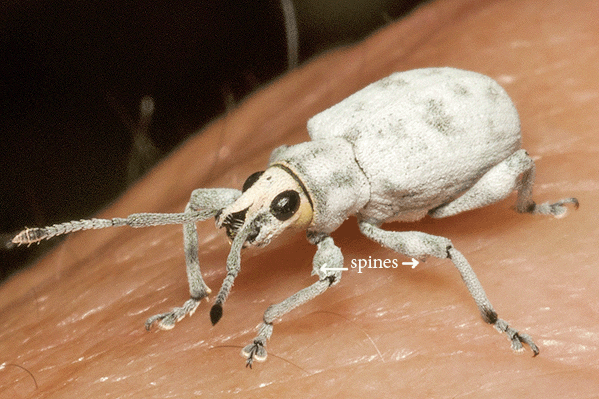
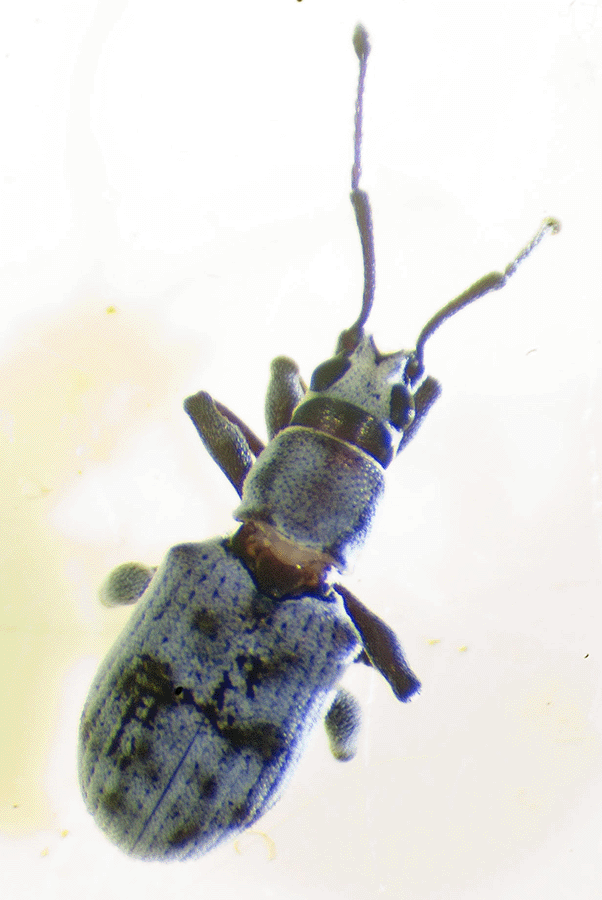

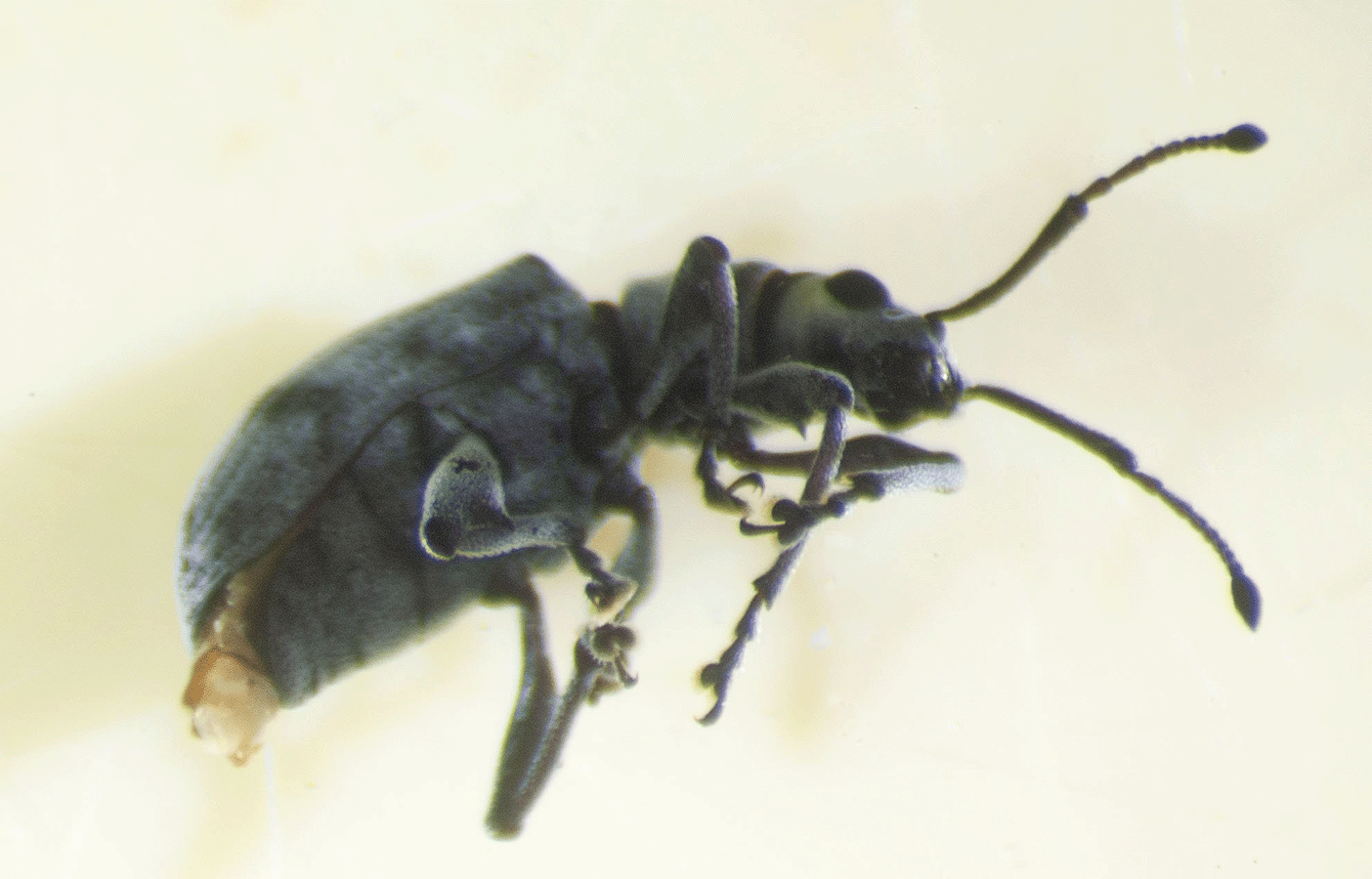 Also according to UF/IFAS, the species first appeared in Sri Lanka and then Pakistan. By 2006, it could be found in 12 counties in Florida. Adults are 6-8.5 mm in length. Females are slightly larger than males.
Also according to UF/IFAS, the species first appeared in Sri Lanka and then Pakistan. By 2006, it could be found in 12 counties in Florida. Adults are 6-8.5 mm in length. Females are slightly larger than males. 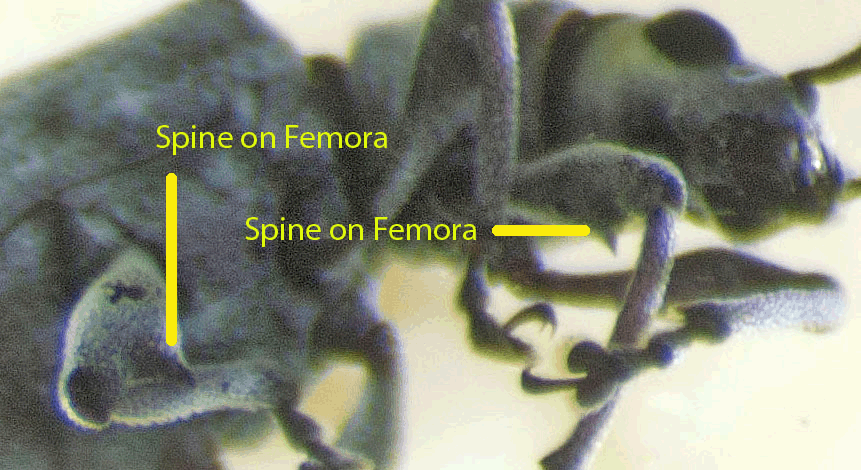
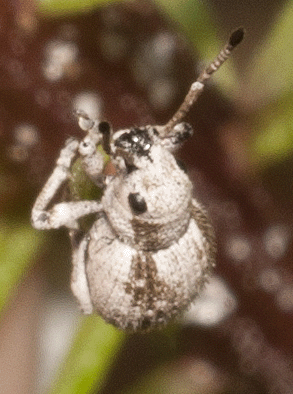 This 4mm-long weevil was observed feeding on a
This 4mm-long weevil was observed feeding on a 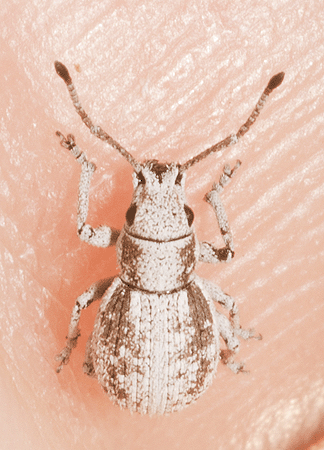
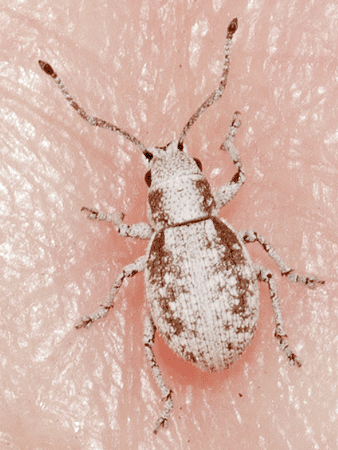
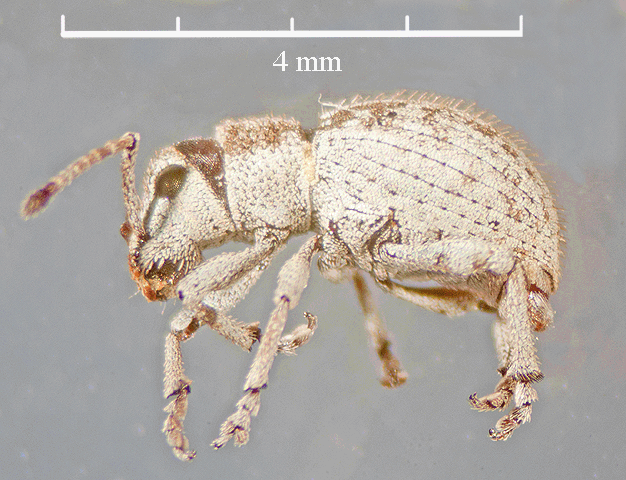 On June 22, 2015, the 3.5 mm broad-nosed weevil shown in photographs 4-6 was collected on a
On June 22, 2015, the 3.5 mm broad-nosed weevil shown in photographs 4-6 was collected on a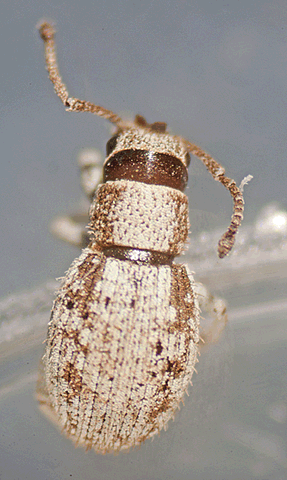
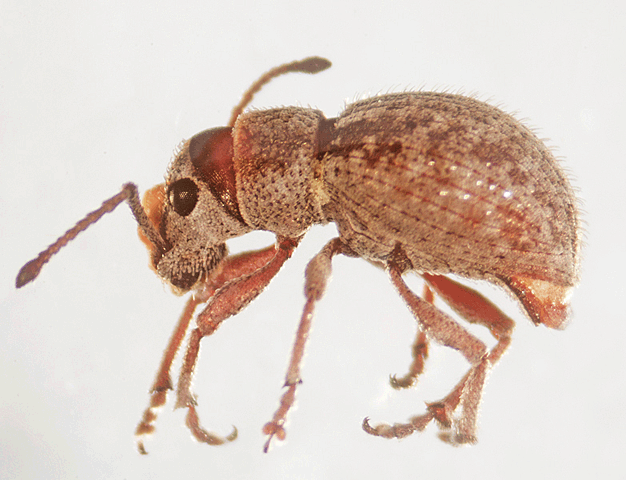

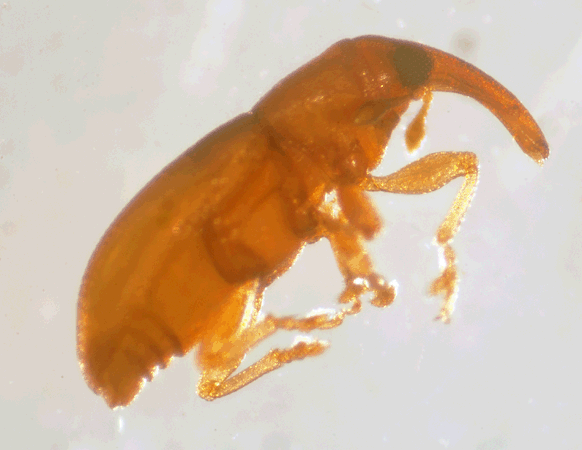
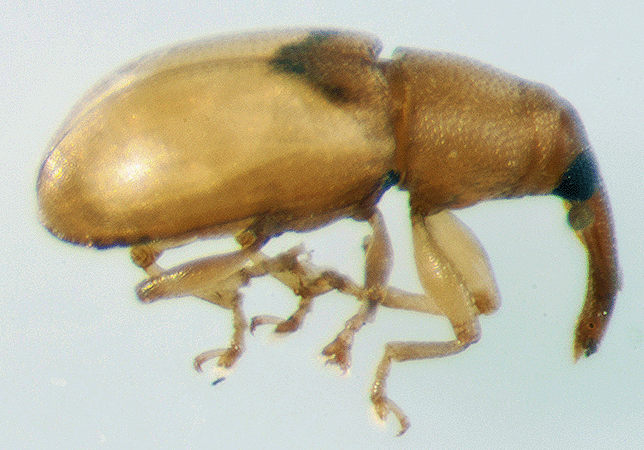
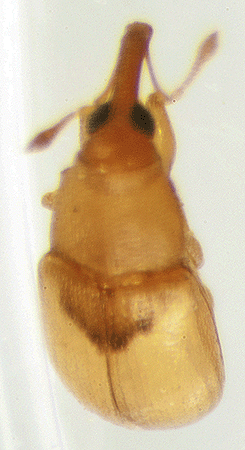

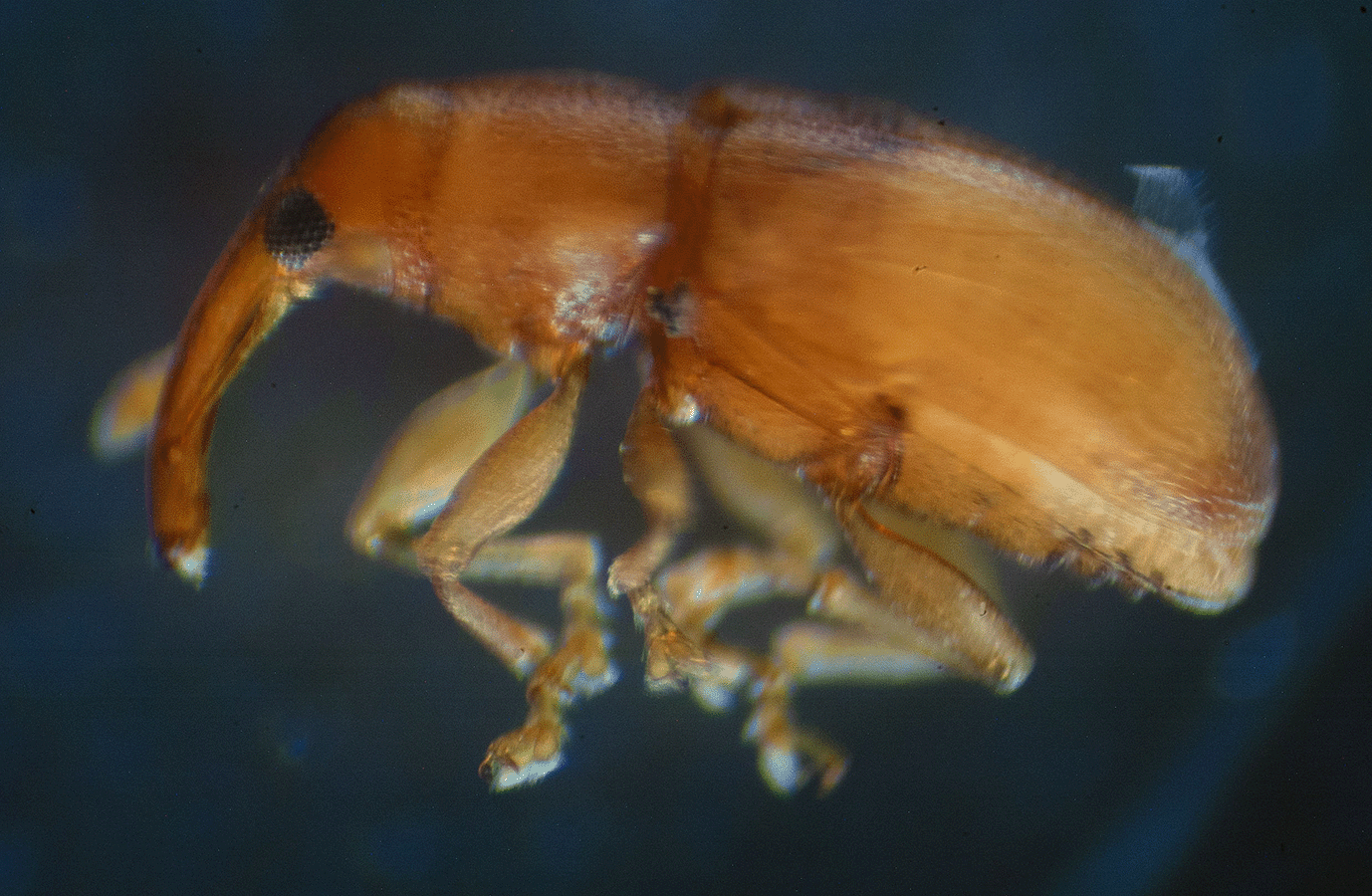
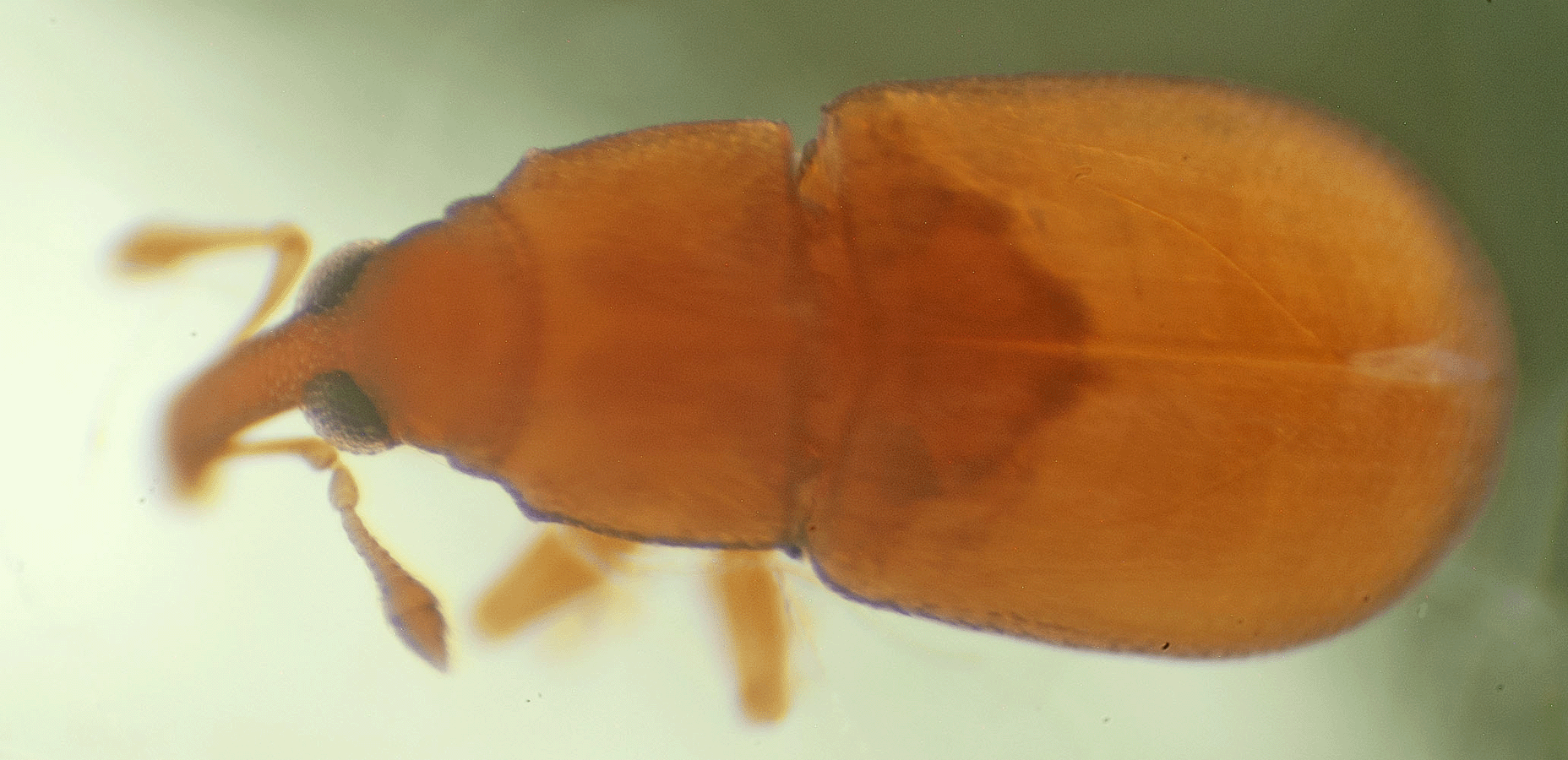

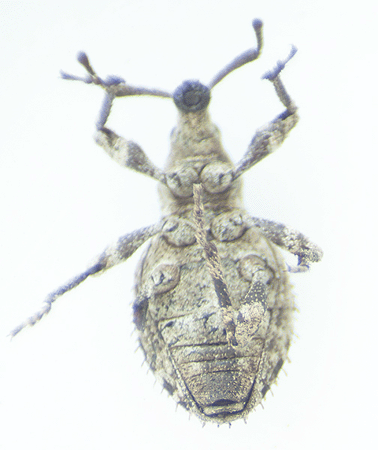 On December 13, 2016, this well-camouflaged, 6 mm long, broad-nosed weevil was captured in a pitfall trap that had been placed overnight in sand and leaf litter adjacent to
On December 13, 2016, this well-camouflaged, 6 mm long, broad-nosed weevil was captured in a pitfall trap that had been placed overnight in sand and leaf litter adjacent to 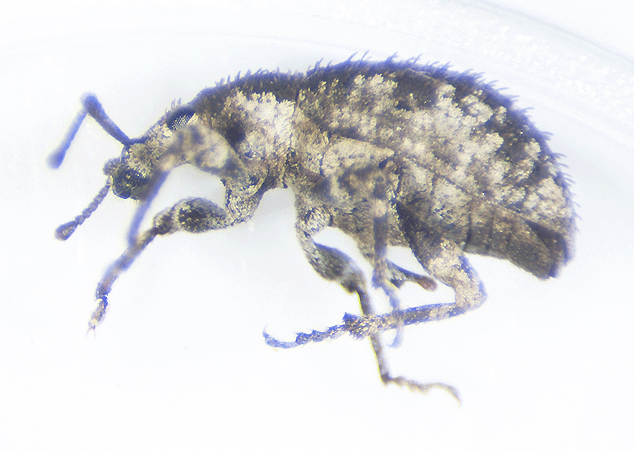
 On June 2, 2014, this weevil was identified from these photographs by Robert Anderson, Contributor to <Bugguide.net>, hosted by Iowa State University Entomology Department.
On June 2, 2014, this weevil was identified from these photographs by Robert Anderson, Contributor to <Bugguide.net>, hosted by Iowa State University Entomology Department. On March 22, 2014, this 3 mm long weevil was found under loose bark of
On March 22, 2014, this 3 mm long weevil was found under loose bark of 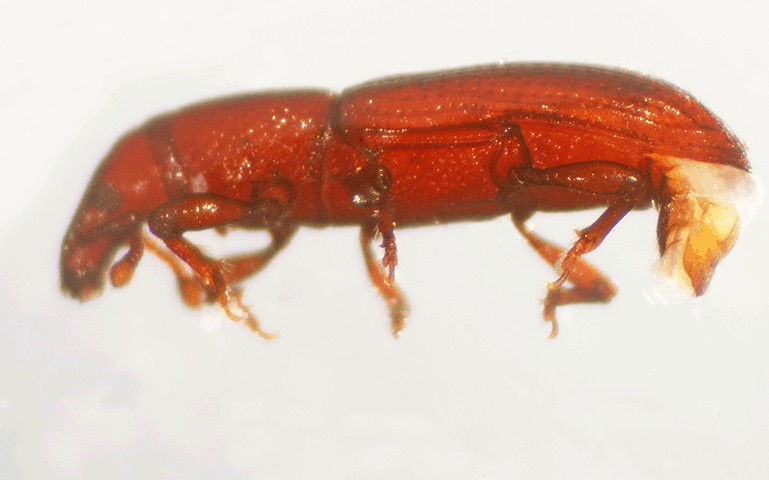
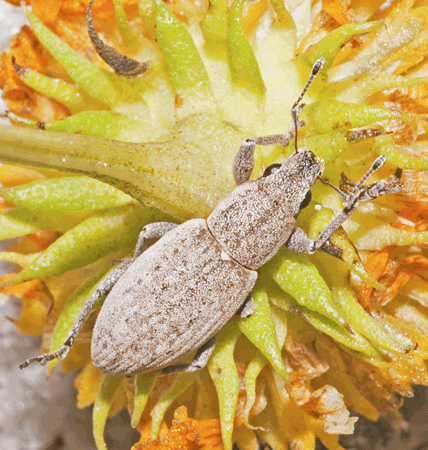

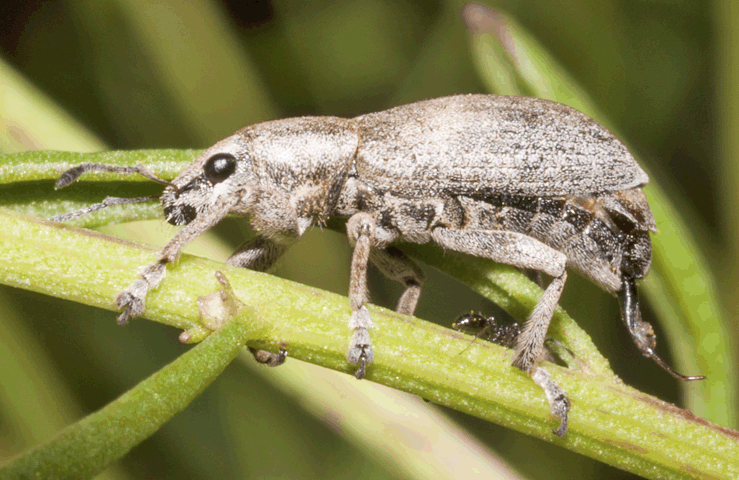
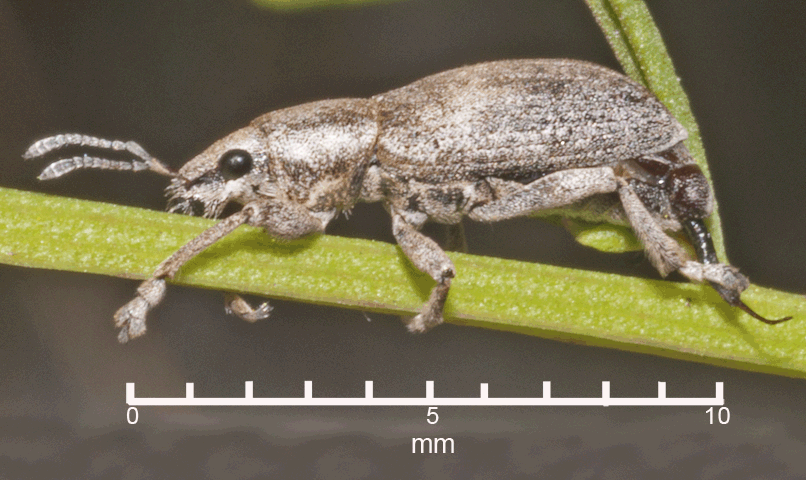
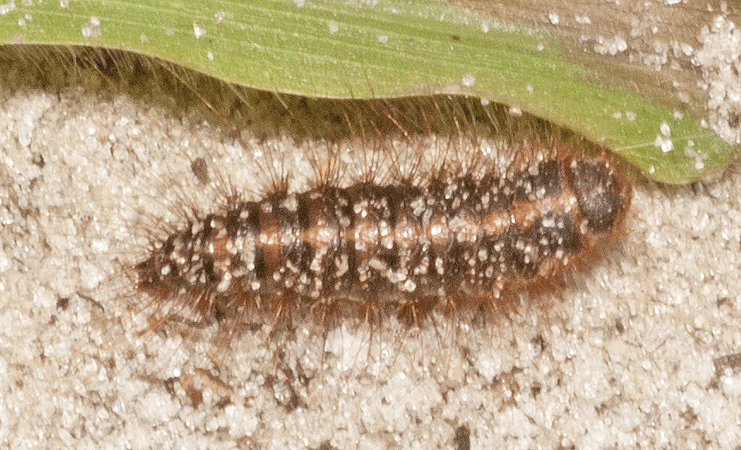
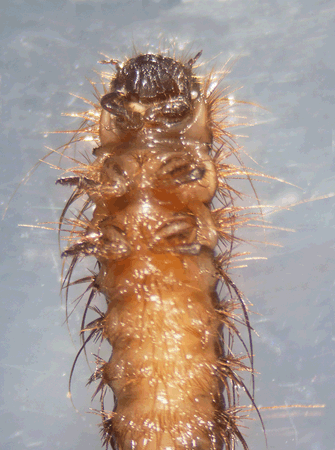 When the carcass was lifted, the larvae scurried away and tried to quickly rebury themselves in the sand.
When the carcass was lifted, the larvae scurried away and tried to quickly rebury themselves in the sand.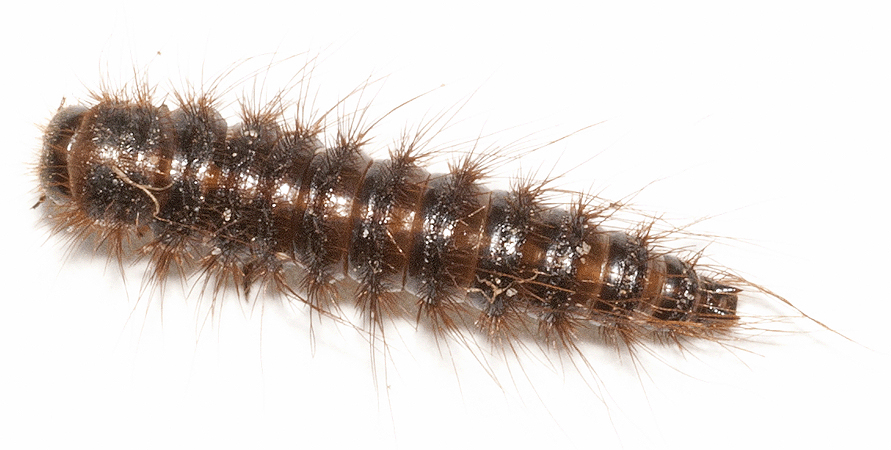
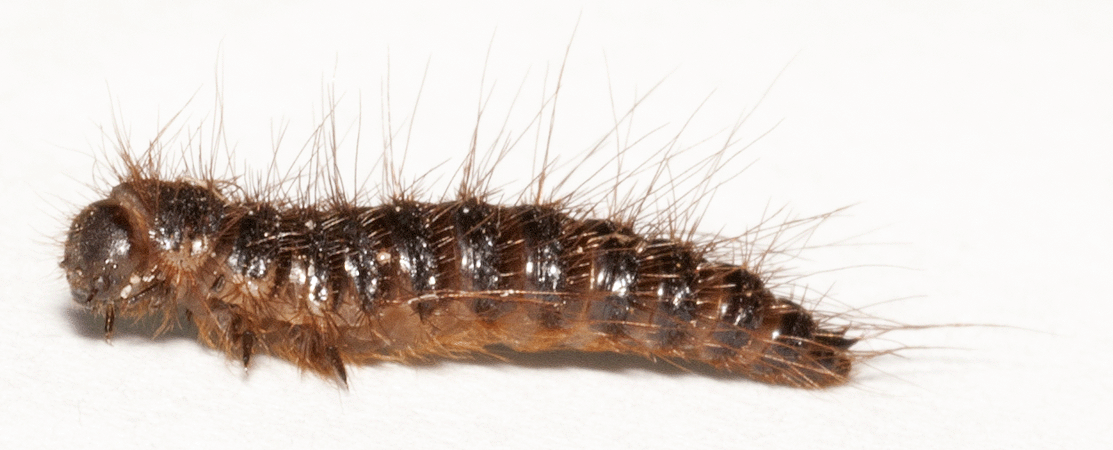
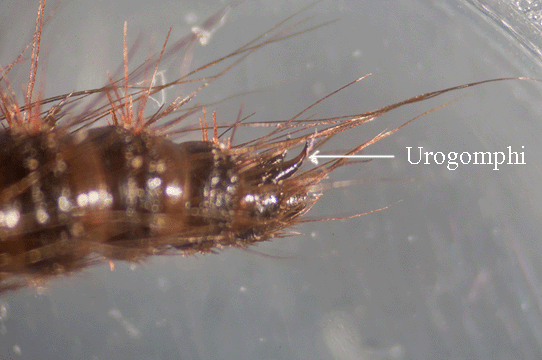
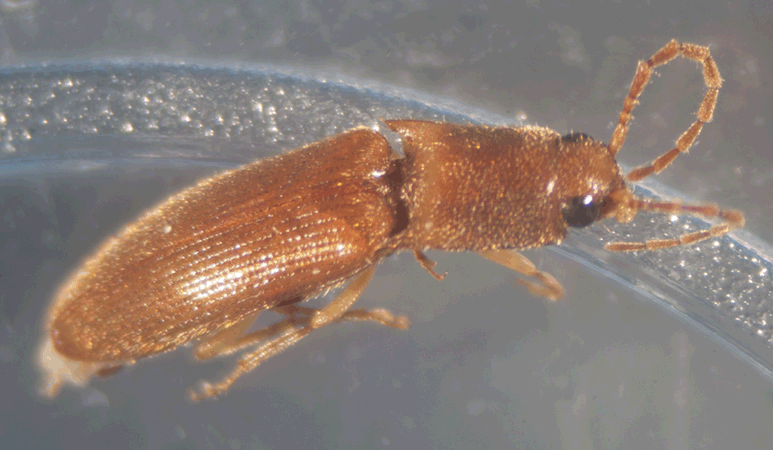
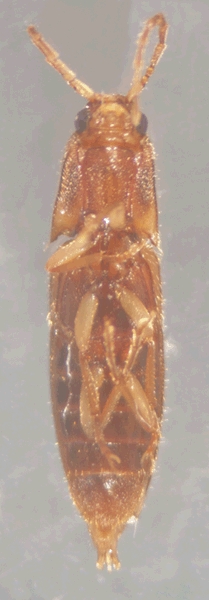 The photos were submitted to <BugGuide.net>, sponsored by Iowa State University's Department of Entomology, for identification. On December 8, 2015, Blaine Mathison, a Contributing Editor of <BugGuide.net> identified the species.
The photos were submitted to <BugGuide.net>, sponsored by Iowa State University's Department of Entomology, for identification. On December 8, 2015, Blaine Mathison, a Contributing Editor of <BugGuide.net> identified the species.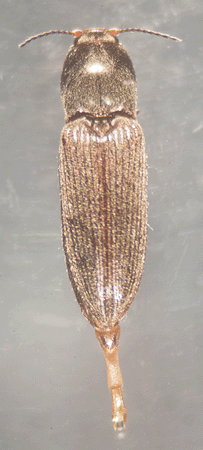
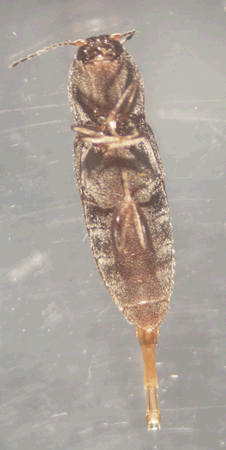 On April 15, 2015, this 10.5 mm (body length without genitalia) female click beetle was crawling among the developing leaves of a
On April 15, 2015, this 10.5 mm (body length without genitalia) female click beetle was crawling among the developing leaves of a 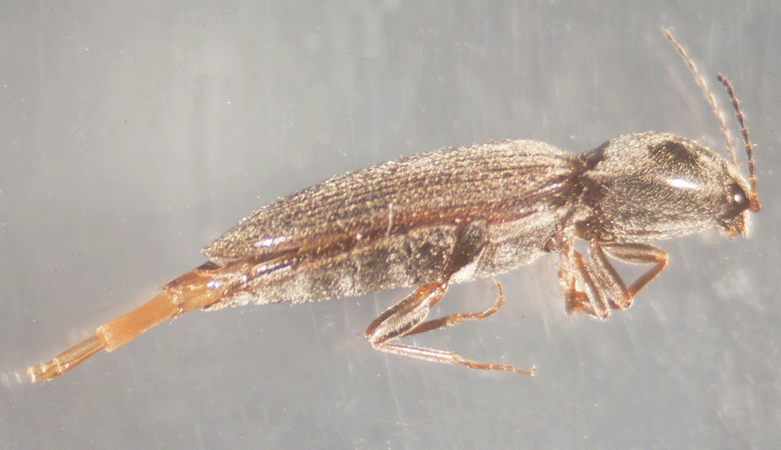 The geographic range for this species is Eastern North America. According to <BugGuide.net> the size range for this species is normally 8.5 mm to 9.5 mm, so this specimen seems rather large.
The geographic range for this species is Eastern North America. According to <BugGuide.net> the size range for this species is normally 8.5 mm to 9.5 mm, so this specimen seems rather large. 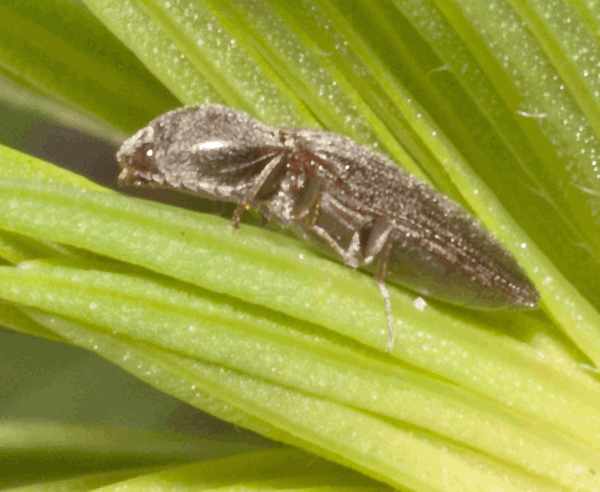 As with all adult click beetles, the connecton between the first and second segments of the thorax is flexible, allowing the beetle to move its head and first pair of legs separately from the rest of the body. This allows the beetle to snap the two sectons, to create a loud click sound, and to flip itself over if it is upside down.
As with all adult click beetles, the connecton between the first and second segments of the thorax is flexible, allowing the beetle to move its head and first pair of legs separately from the rest of the body. This allows the beetle to snap the two sectons, to create a loud click sound, and to flip itself over if it is upside down. 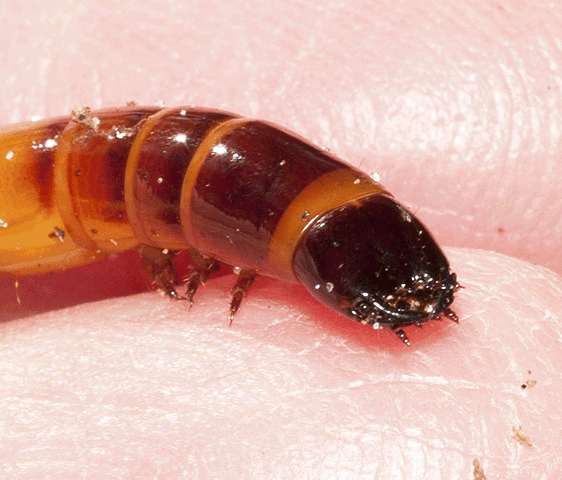
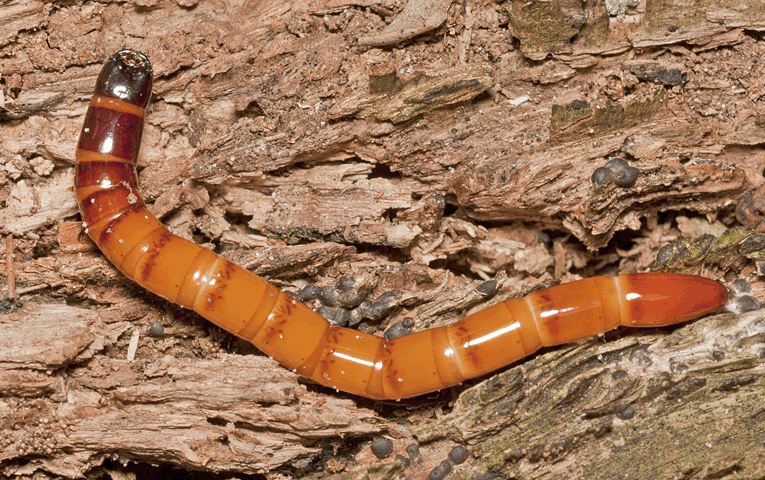



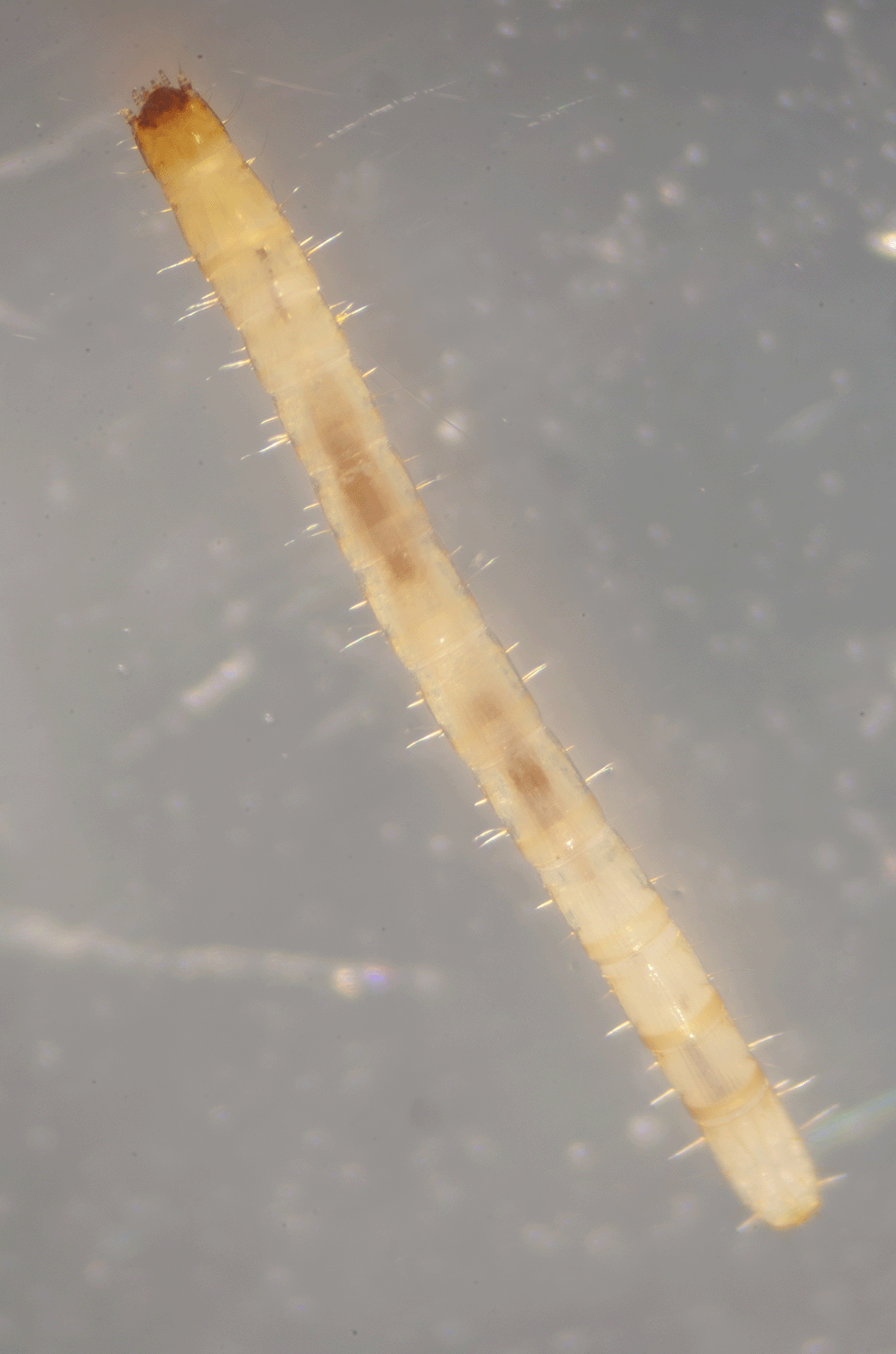 On December 29, 2015, this 6 mm long click beetle was living in pine needle litter under
On December 29, 2015, this 6 mm long click beetle was living in pine needle litter under 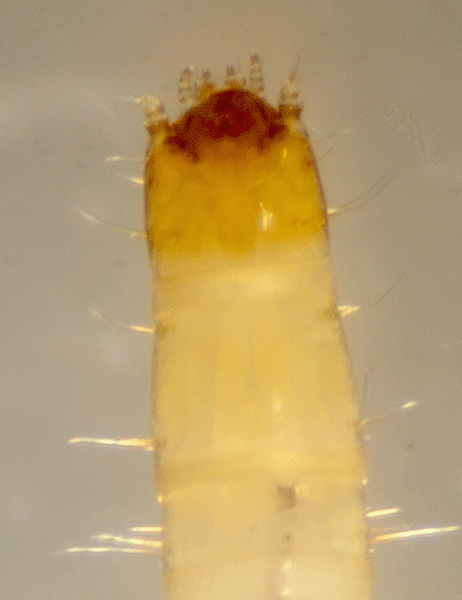
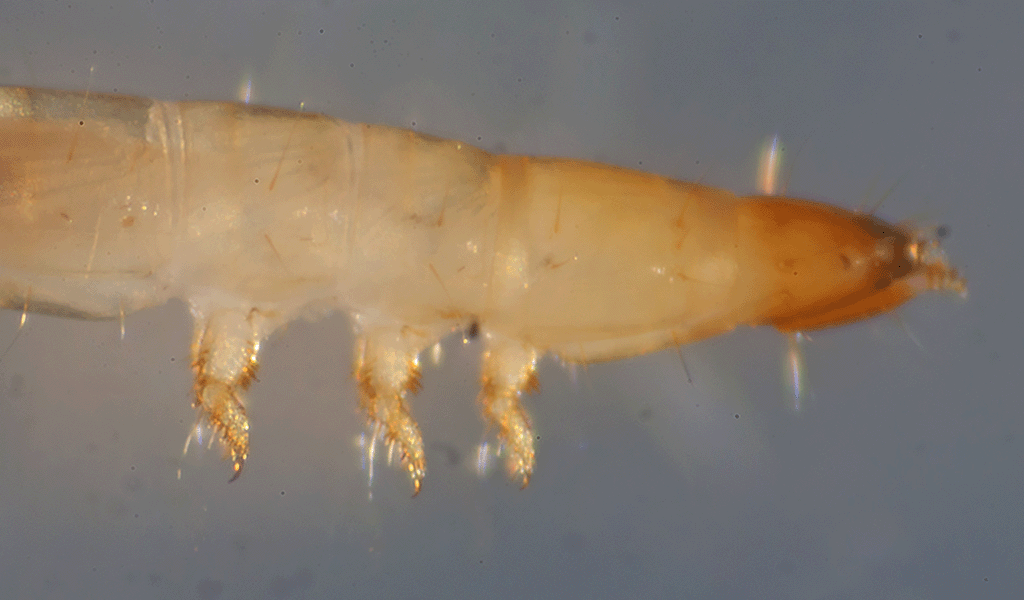
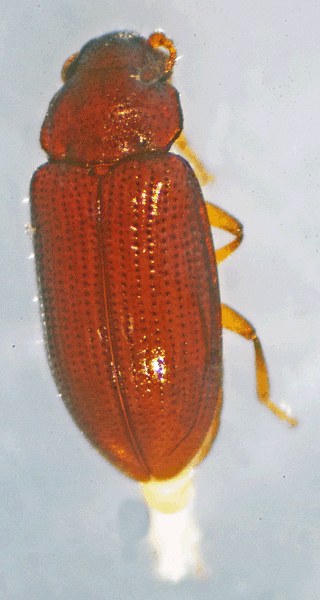 On December 8, 2014, this 2 mm long beetle was collected in a sweep net sample obtained in the dry, seasonal marsh, dominated by grasses and sedges.
On December 8, 2014, this 2 mm long beetle was collected in a sweep net sample obtained in the dry, seasonal marsh, dominated by grasses and sedges. 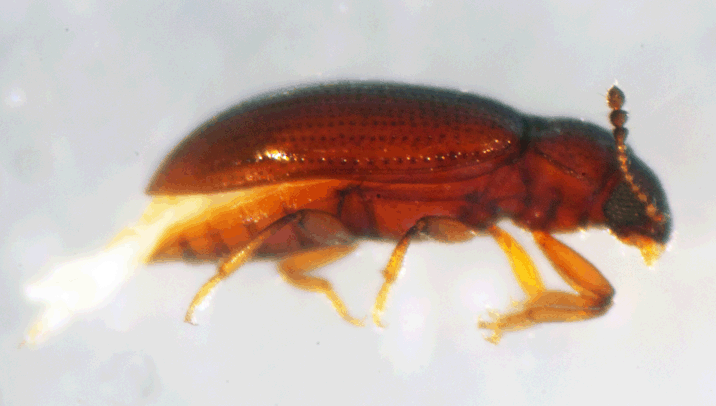


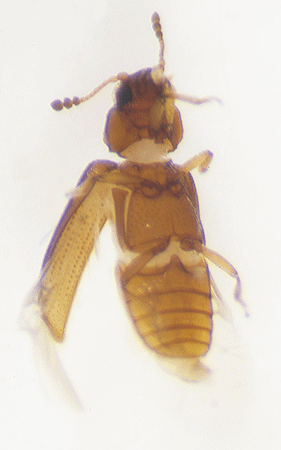
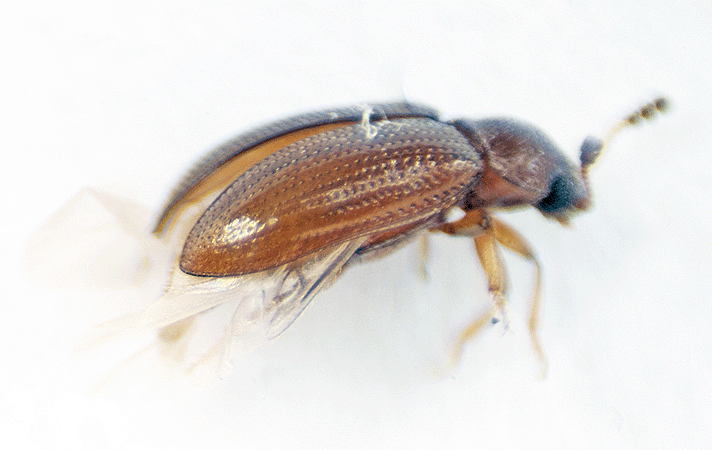
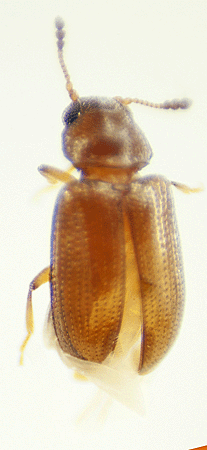
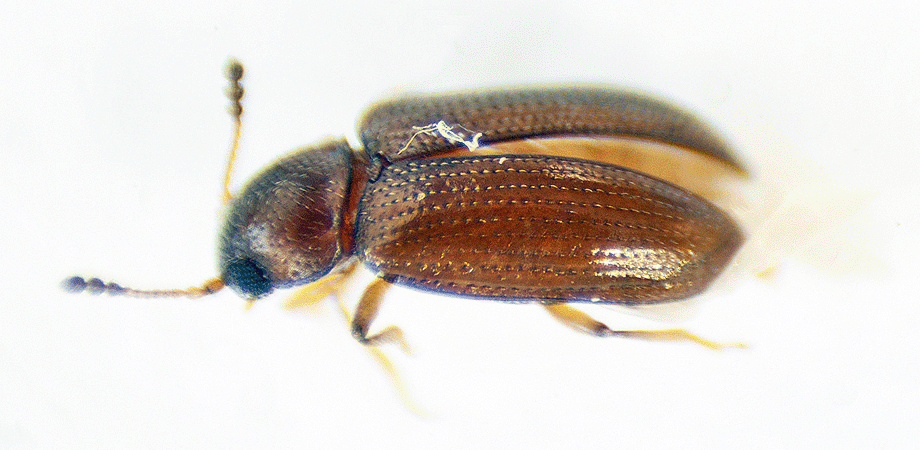
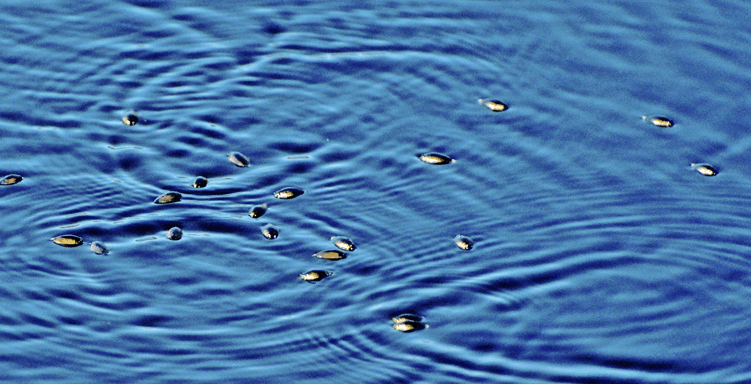
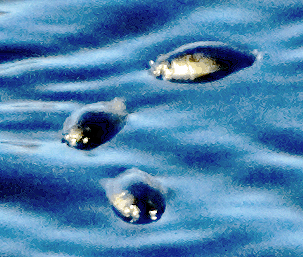
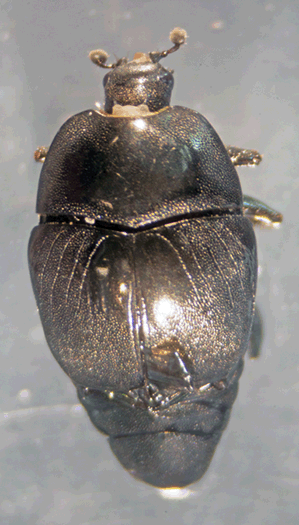 On December 15, 2015, this 12 mm beetle was found near the carcass of a dead python that had been placed in the Smith Preserve. These photos were sent to <BugGuide.net>, sponsored by Iowa State University Department of Entomology, for identification.
On December 15, 2015, this 12 mm beetle was found near the carcass of a dead python that had been placed in the Smith Preserve. These photos were sent to <BugGuide.net>, sponsored by Iowa State University Department of Entomology, for identification.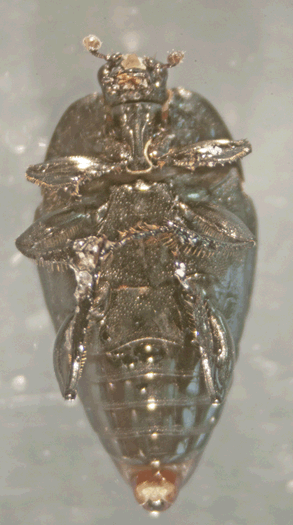 As seen in these photographs, species have elbowed antennae with clubbed ends. The head of hister beetles can retract into their prothorax.
As seen in these photographs, species have elbowed antennae with clubbed ends. The head of hister beetles can retract into their prothorax.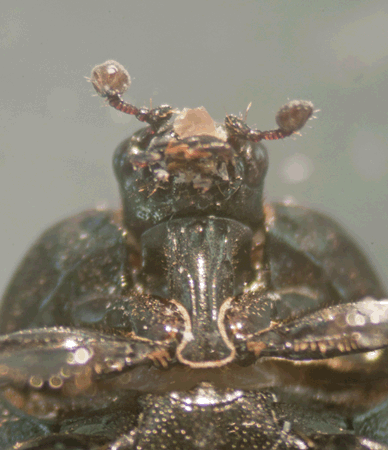
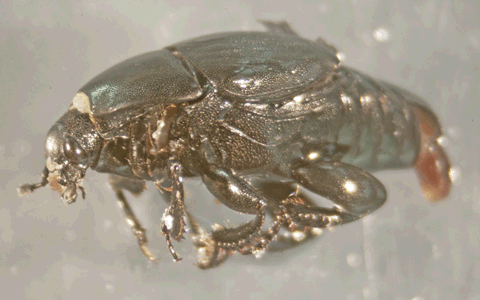
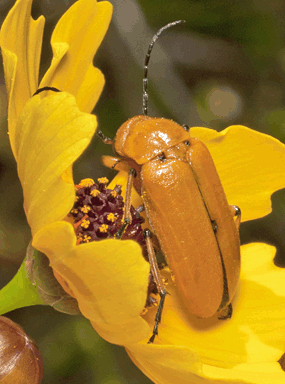
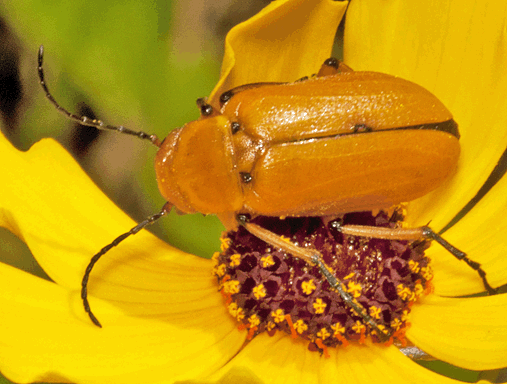
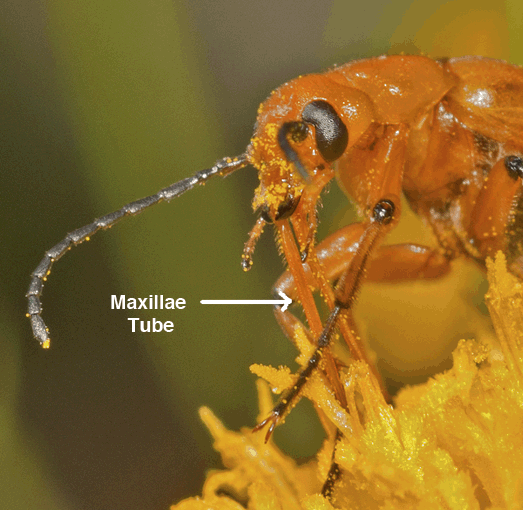
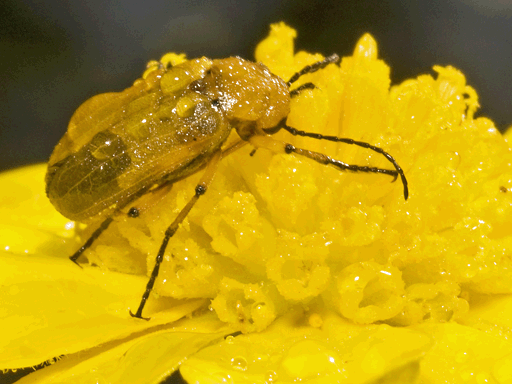
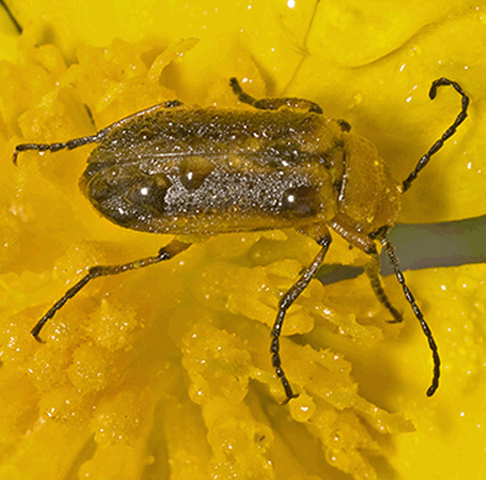
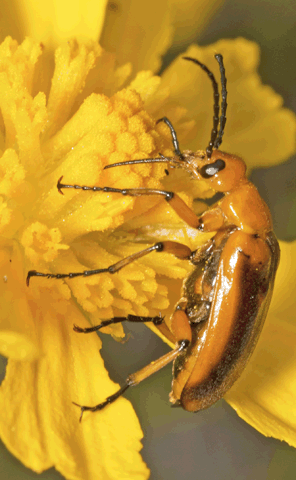 The two blister beetles shown in the last four photographs had black stripes along the dorsal surface of the top wings. The first of these beetles (photographs 6 and 7) was photographed on November 12, 2012. The second individual (photographs 8 and 9) was photographed on November 28, 2012. This second individual was confirmed as Nemognatha sp. on September 5, 2013 by "v belov", Contributing Editor of <bugguide.net>, hosted by Iowa
The two blister beetles shown in the last four photographs had black stripes along the dorsal surface of the top wings. The first of these beetles (photographs 6 and 7) was photographed on November 12, 2012. The second individual (photographs 8 and 9) was photographed on November 28, 2012. This second individual was confirmed as Nemognatha sp. on September 5, 2013 by "v belov", Contributing Editor of <bugguide.net>, hosted by Iowa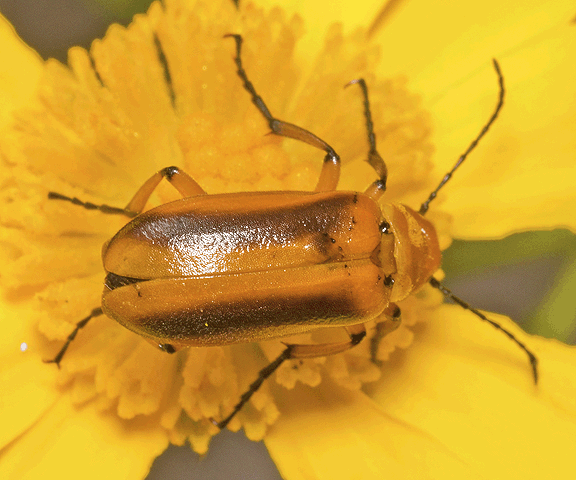 The male Nemognatha sp. beetle is the one that produces cantharidin. When he mates, he transfers some of this toxin to the female. She lays her eggs on flowers and coats each egg with the toxin to protect it from egg-eating insects.( One wonders how a toxin that will create severe blisters on human skin does not hurt the skin of the blister beetle or its eggs.)
The male Nemognatha sp. beetle is the one that produces cantharidin. When he mates, he transfers some of this toxin to the female. She lays her eggs on flowers and coats each egg with the toxin to protect it from egg-eating insects.( One wonders how a toxin that will create severe blisters on human skin does not hurt the skin of the blister beetle or its eggs.)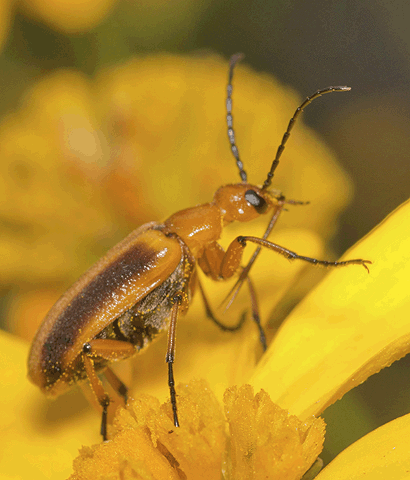

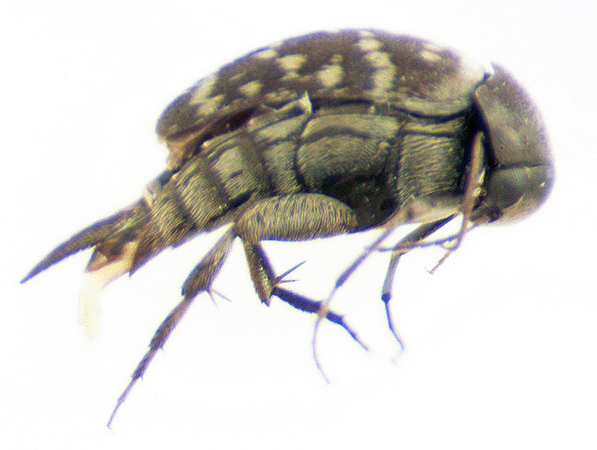
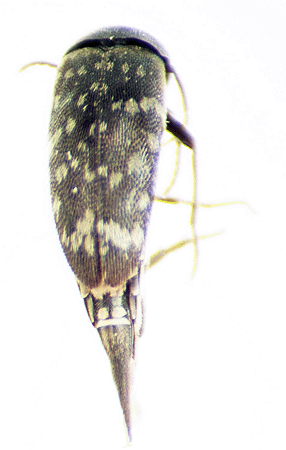
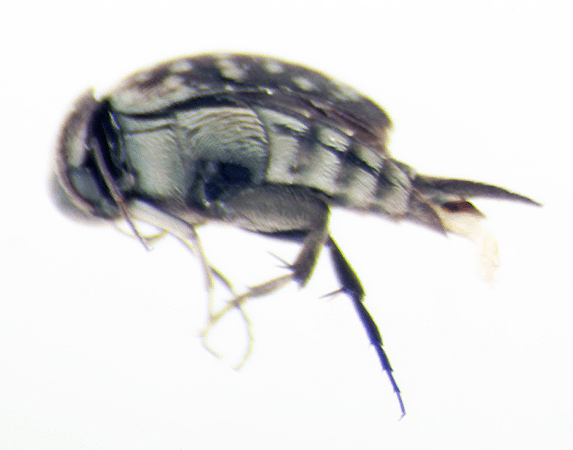 November, 2012, this 3 mm long beetle was captured with a sweep net in the Smith Preserve scrub. These photographs were submitted to <BugGuide.net>, sponsored by Iowa State University's Department of Entomology, and a request was made for confirmation that the family was Mordellidae.
November, 2012, this 3 mm long beetle was captured with a sweep net in the Smith Preserve scrub. These photographs were submitted to <BugGuide.net>, sponsored by Iowa State University's Department of Entomology, and a request was made for confirmation that the family was Mordellidae. 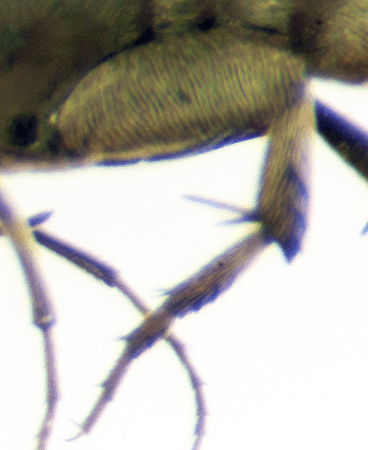 According to <BugGuide.net>, there are over 200 species in 17 genera north of Mexico. Thirty-eight of these are in Florida.
According to <BugGuide.net>, there are over 200 species in 17 genera north of Mexico. Thirty-eight of these are in Florida. 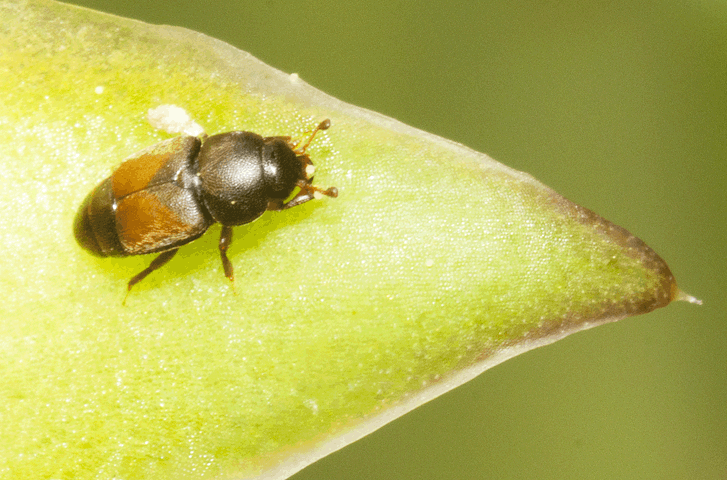
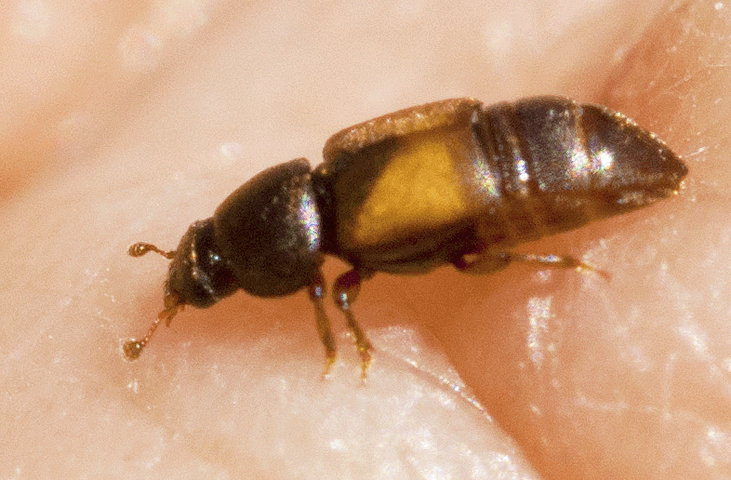 As a family, nitidulids vary a great deal in size, shape, and habits.
As a family, nitidulids vary a great deal in size, shape, and habits. 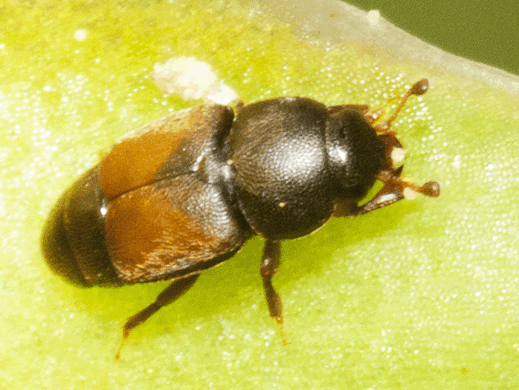
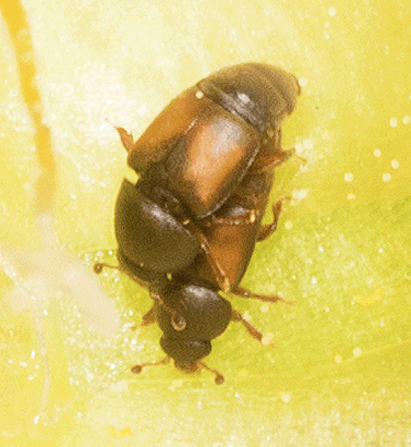
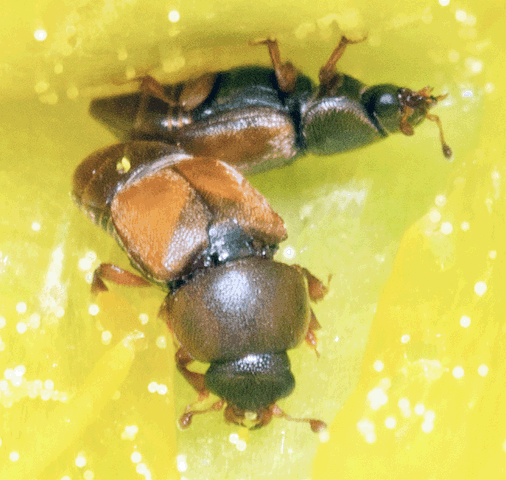
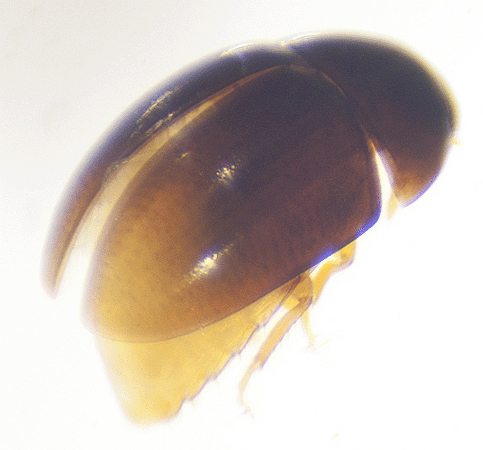 On December 30, 2015, this 1.5 mm long beetle was captured in a sweep net in low vegetation that was growing along the gopher tortoise fence just South of Smith Preserve Way.
On December 30, 2015, this 1.5 mm long beetle was captured in a sweep net in low vegetation that was growing along the gopher tortoise fence just South of Smith Preserve Way. 
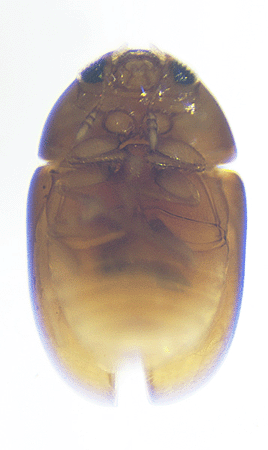
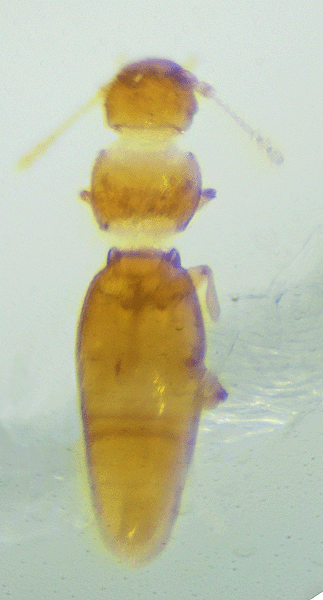
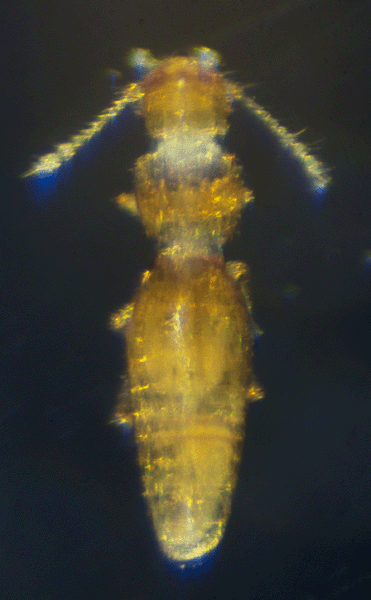
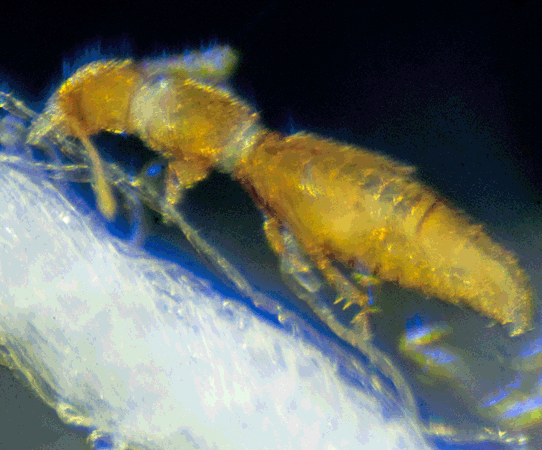 These photographs were created using photomicroscopy.
These photographs were created using photomicroscopy. 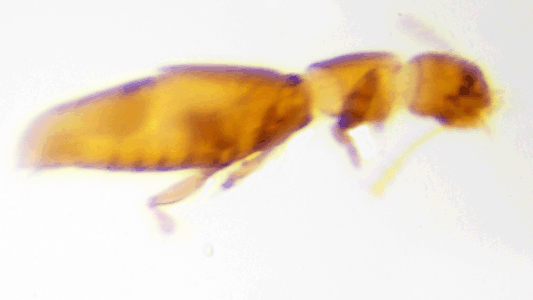
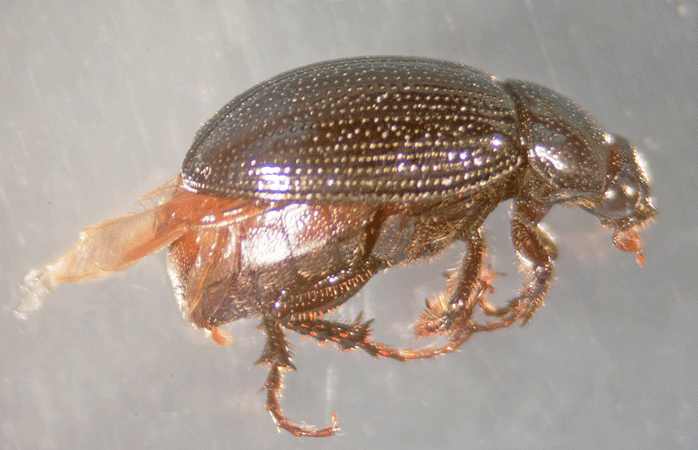
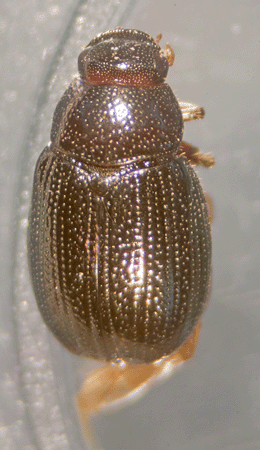
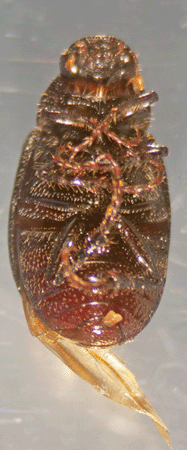
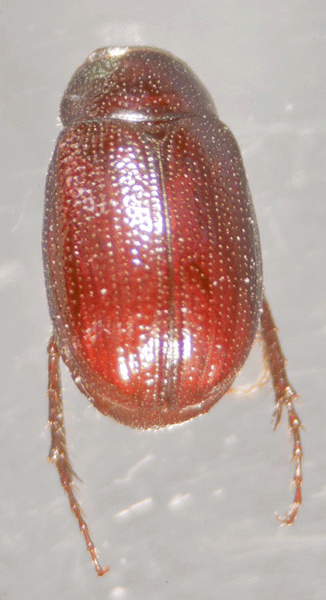 On April 2, 2015, the 6.75 mm beetle shown in the next four photographs was caught in a pit trap placed in sand in an area of ground lichens and oak leaves adjacent to
On April 2, 2015, the 6.75 mm beetle shown in the next four photographs was caught in a pit trap placed in sand in an area of ground lichens and oak leaves adjacent to 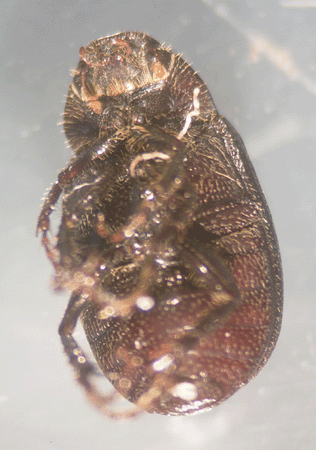 On May 14, 2015, the beetle was identified as Diplotaxis sp. by Blaine Mathison, Contributing Editor of <BugGuide.net>. It may be the same species as the first individual shown above, but it is .75 mm larger.
On May 14, 2015, the beetle was identified as Diplotaxis sp. by Blaine Mathison, Contributing Editor of <BugGuide.net>. It may be the same species as the first individual shown above, but it is .75 mm larger.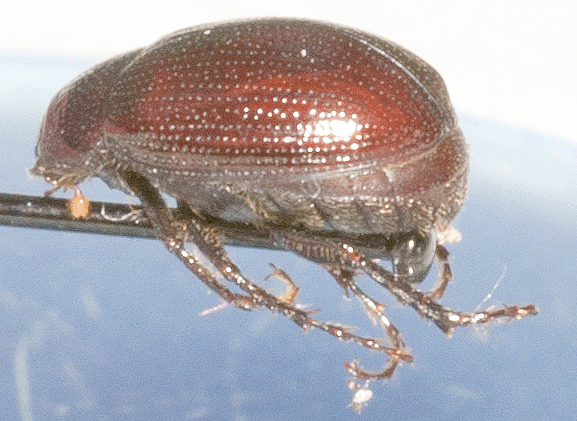
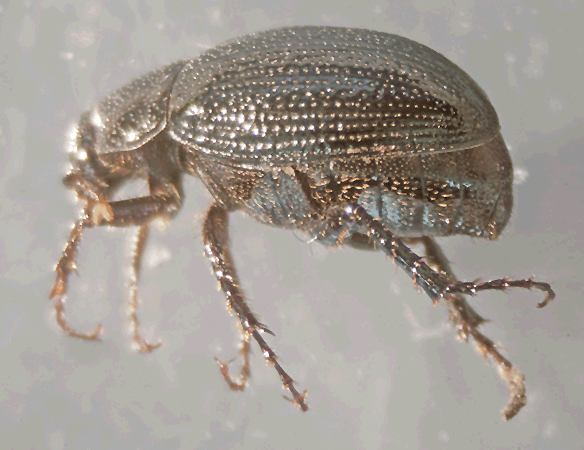 On November 24, 2015, a 7 mm long beetle (shown at right), was caught in a pitfall trap placed in the middle of the Smith Preserve in a scrub area covered with
On November 24, 2015, a 7 mm long beetle (shown at right), was caught in a pitfall trap placed in the middle of the Smith Preserve in a scrub area covered with 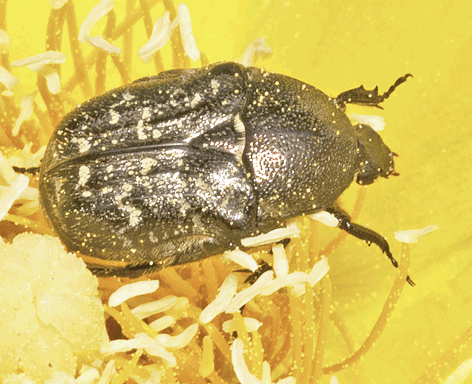
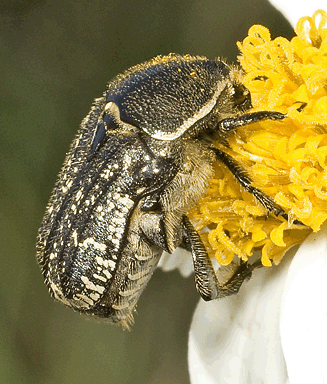
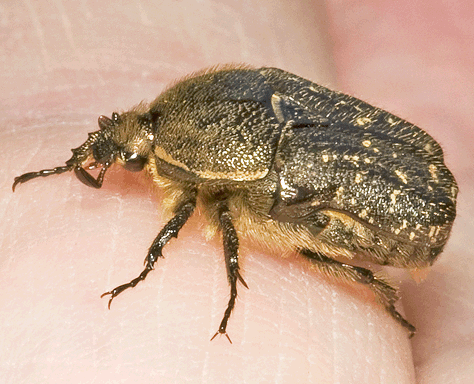
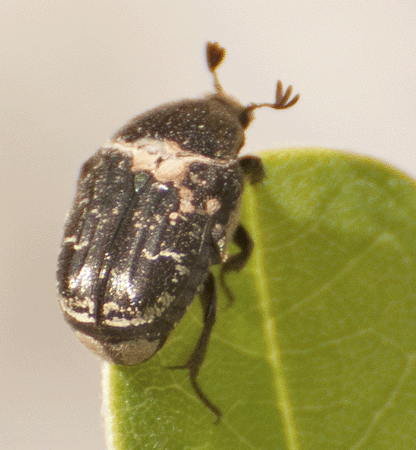
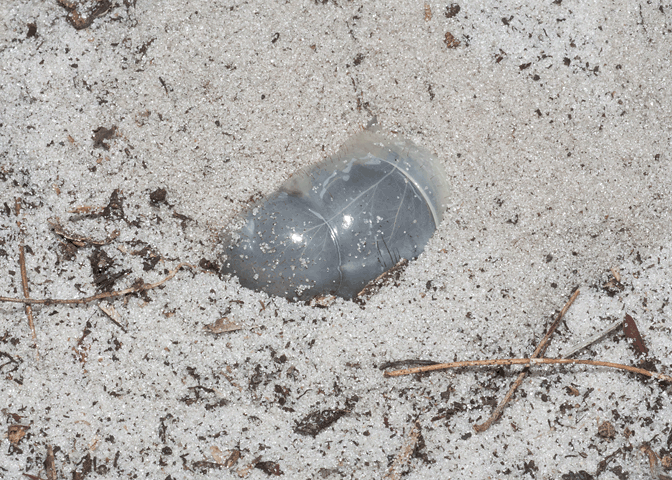
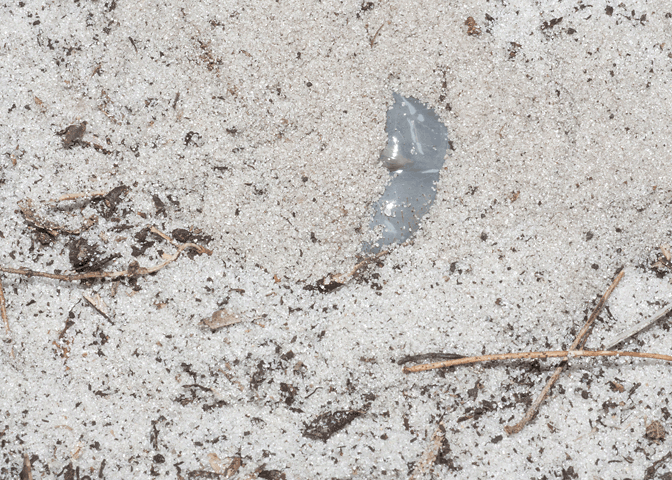
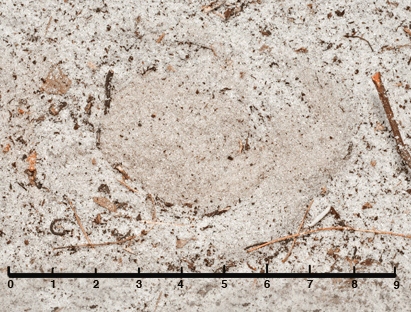
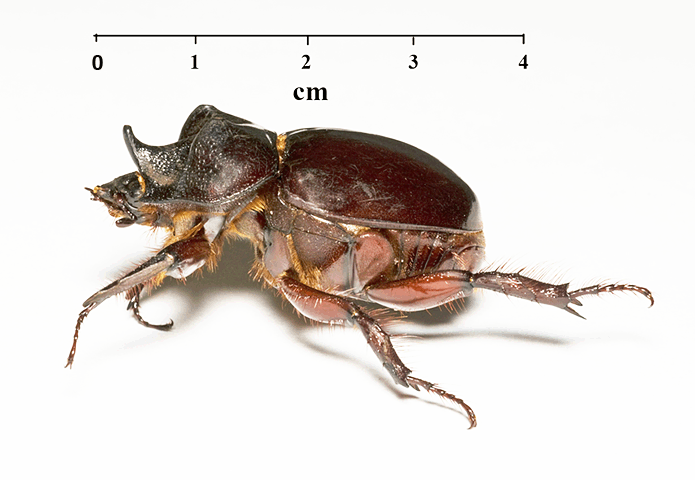
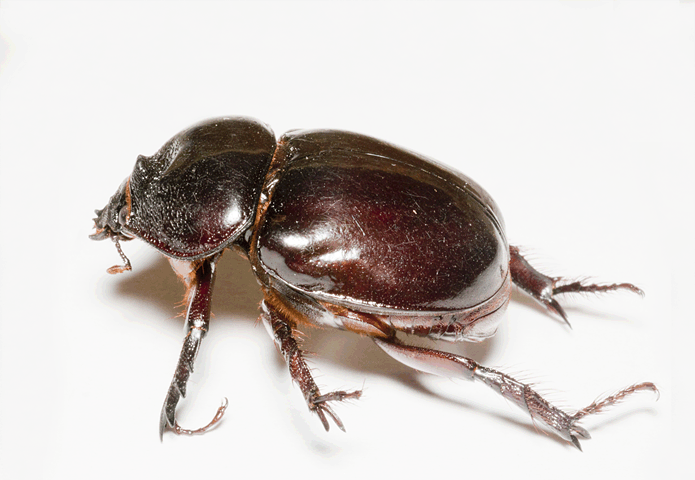

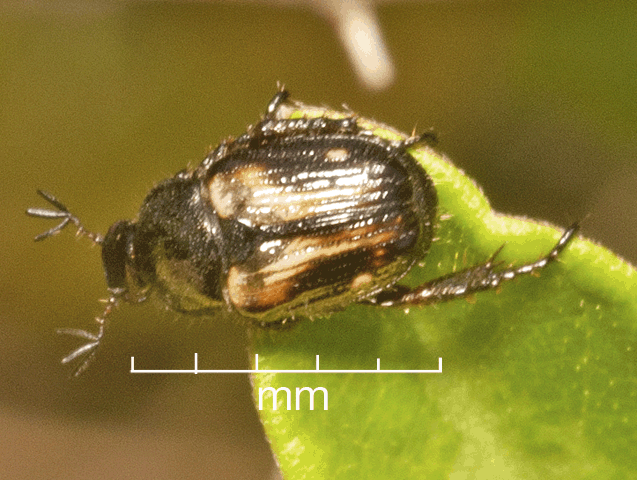
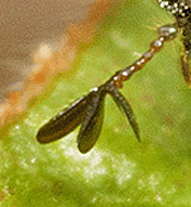
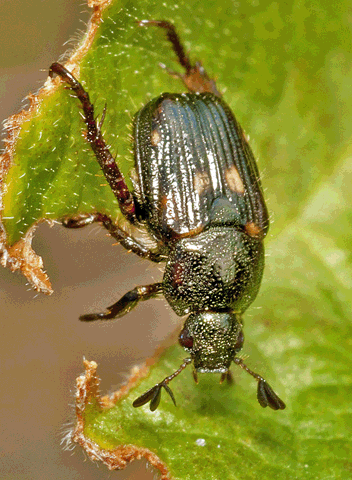 The third photograph is an individual chewing the leaf of
The third photograph is an individual chewing the leaf of 

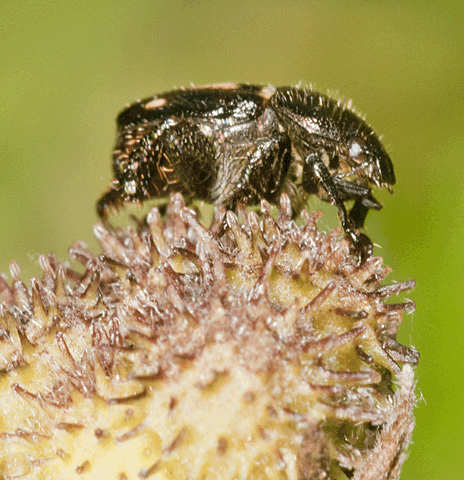
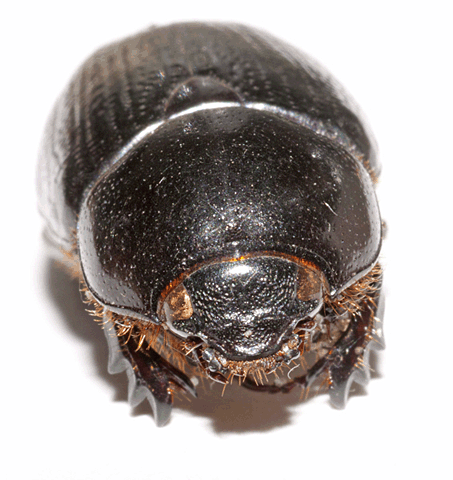
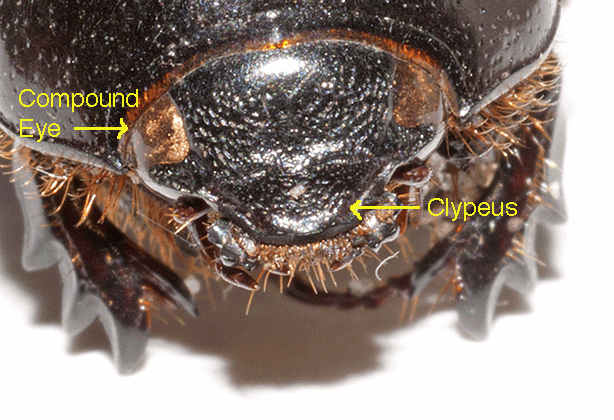
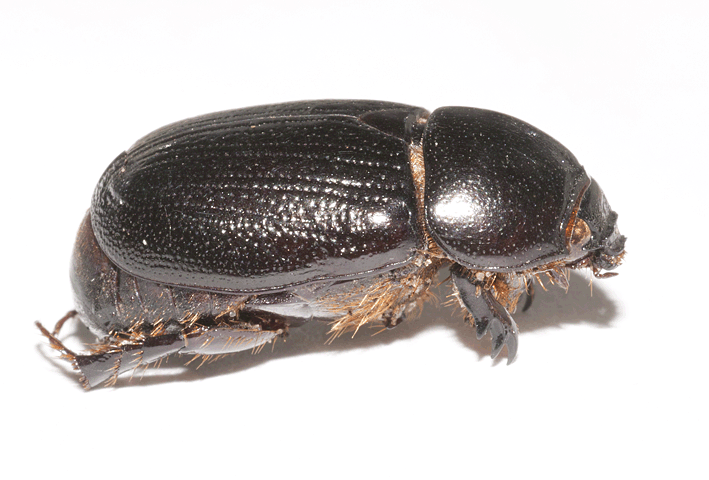
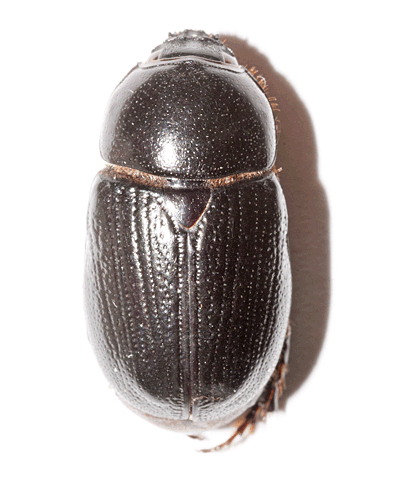
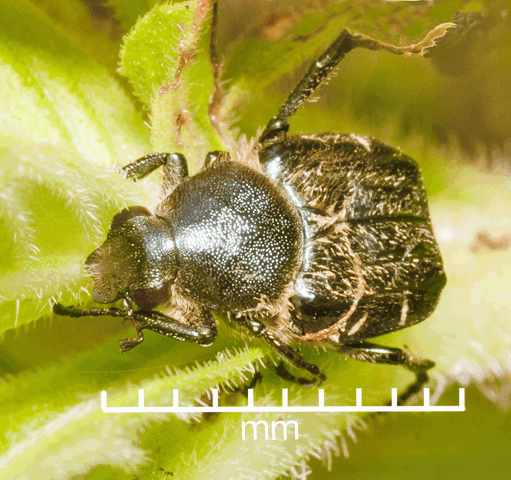
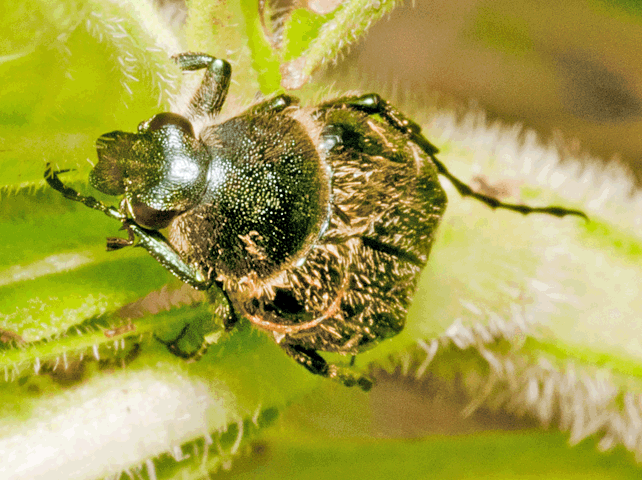
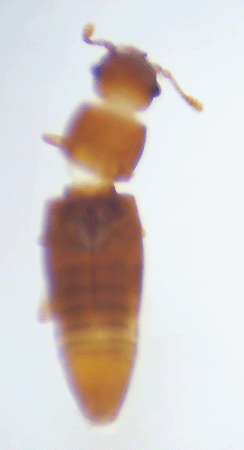
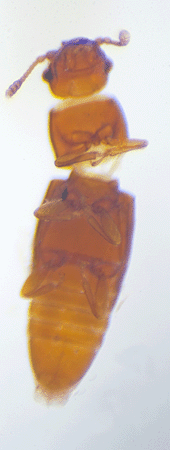
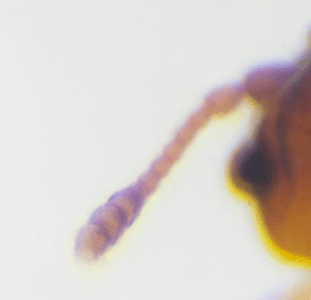 On March 4, 2015, this 2 mm long beetle was living in leaf litter beneath a sand live oak tree in the middle of the Smith Preserve.
On March 4, 2015, this 2 mm long beetle was living in leaf litter beneath a sand live oak tree in the middle of the Smith Preserve. 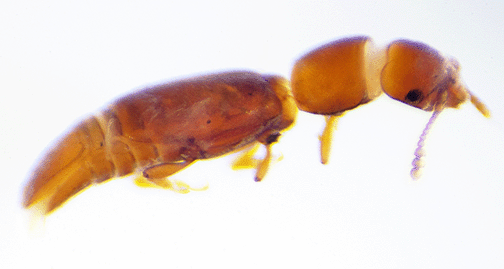
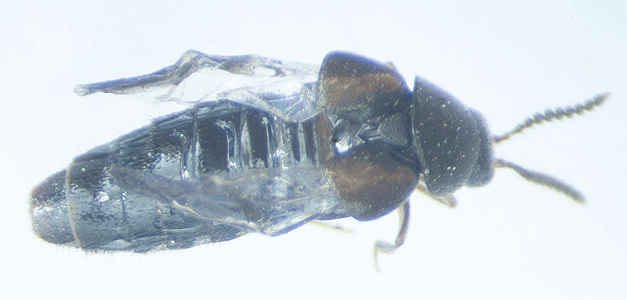
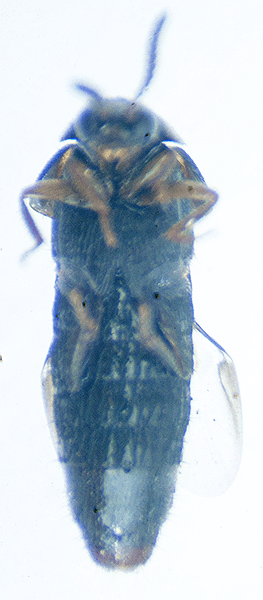 On April 5, 2019, this 5 mm long rove beetle was collected beneath the carcass of a Burmese python that had been placed in the Smith Preserve to decompose.
On April 5, 2019, this 5 mm long rove beetle was collected beneath the carcass of a Burmese python that had been placed in the Smith Preserve to decompose. 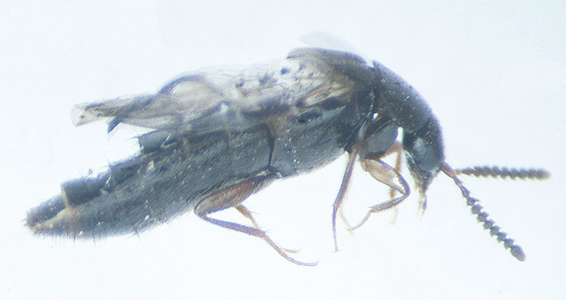 Adults are primarily predators of dipteran eggs, larvae, and pupae in dung, carrion, and rotting vegetation. When this adult beetle was captured, there were many fly maggots and fly pupae nearby.
Adults are primarily predators of dipteran eggs, larvae, and pupae in dung, carrion, and rotting vegetation. When this adult beetle was captured, there were many fly maggots and fly pupae nearby. 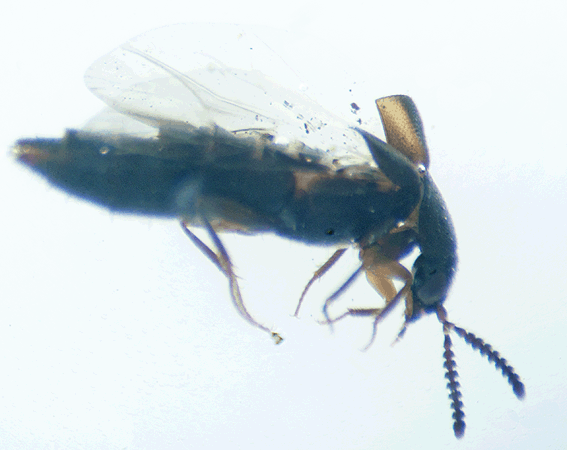
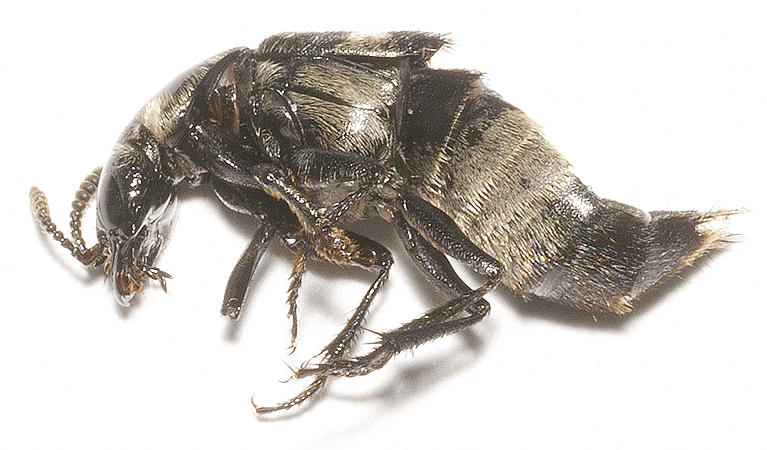

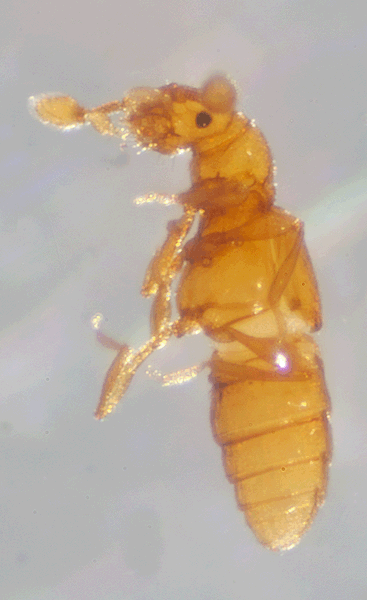
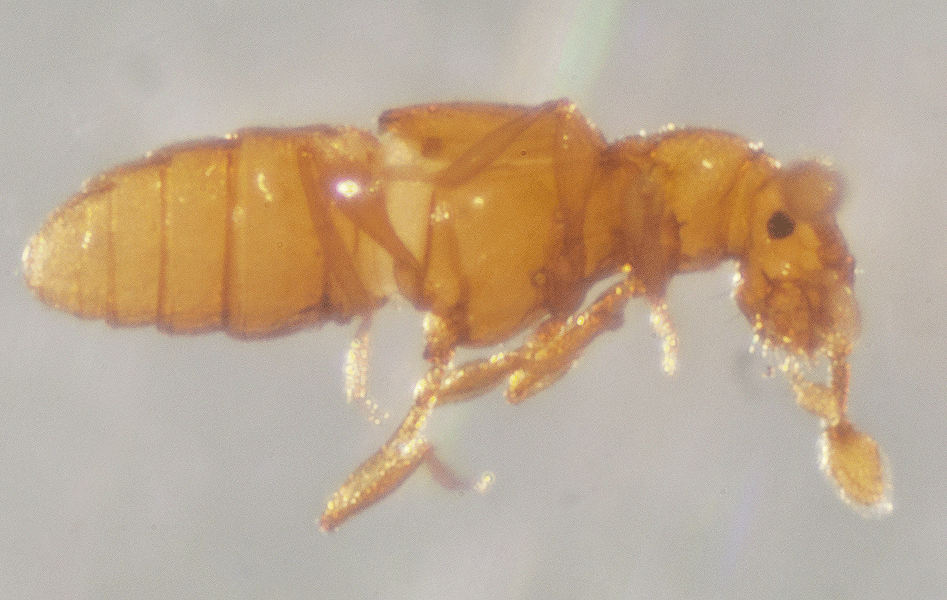
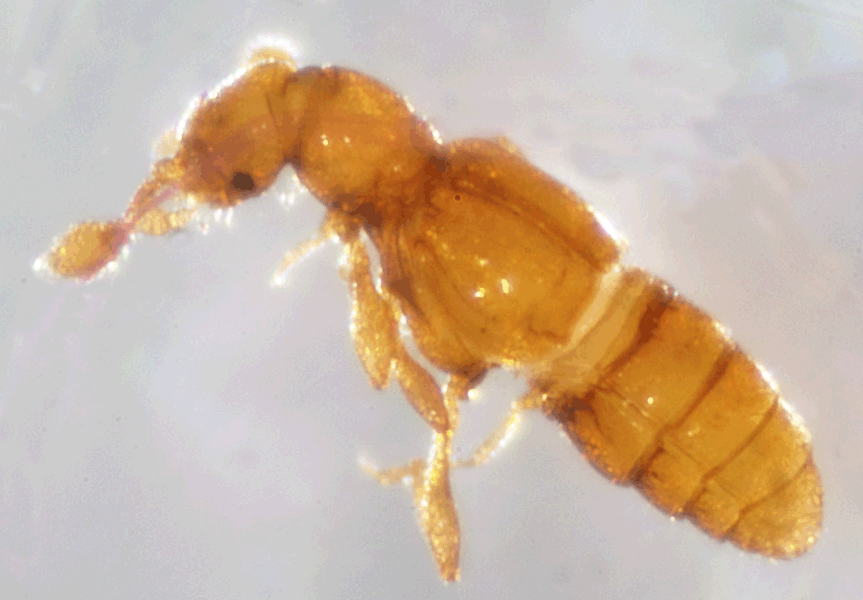
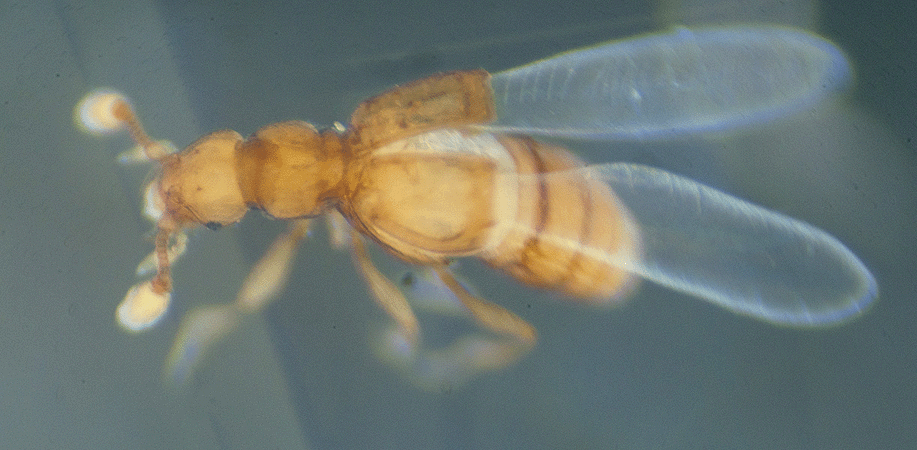
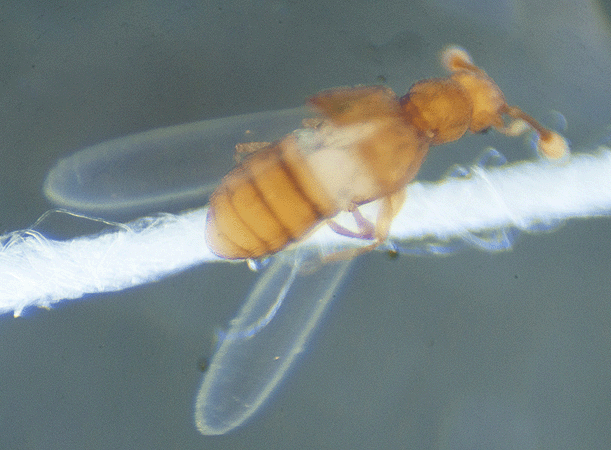
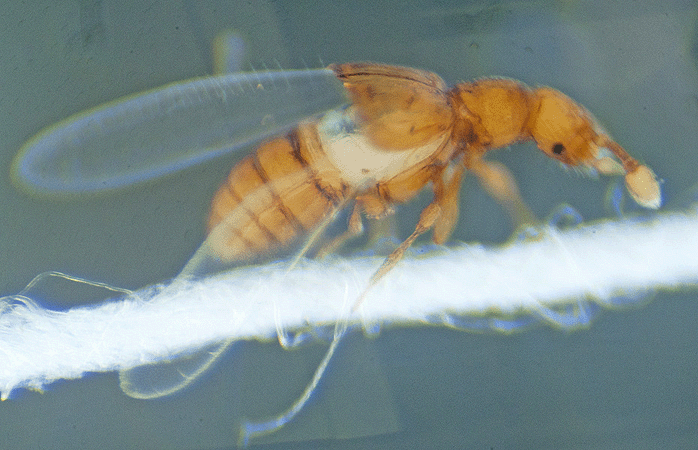
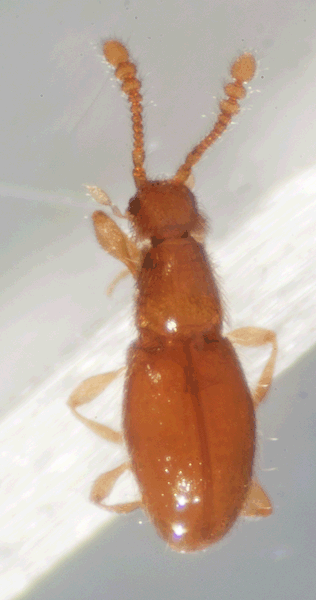 On December 29, 2014, this 1 mm long beetle was living in pine needle litter beneath a
On December 29, 2014, this 1 mm long beetle was living in pine needle litter beneath a 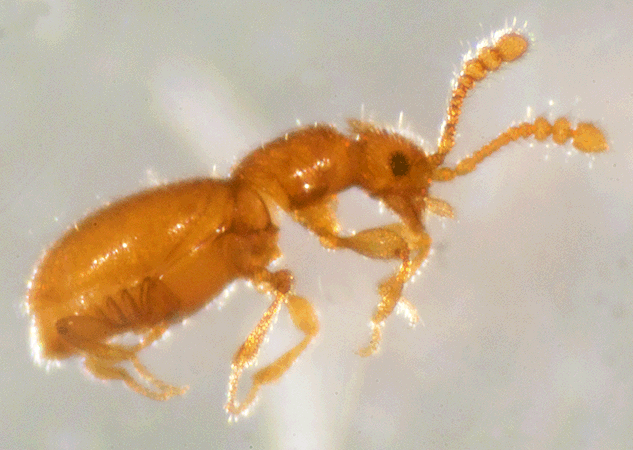 Webmaster note: apparently there is still some debate about the placement of these beetles and there are many species of this genus yet to be described. Perhaps this is one of those undescribed species.
Webmaster note: apparently there is still some debate about the placement of these beetles and there are many species of this genus yet to be described. Perhaps this is one of those undescribed species.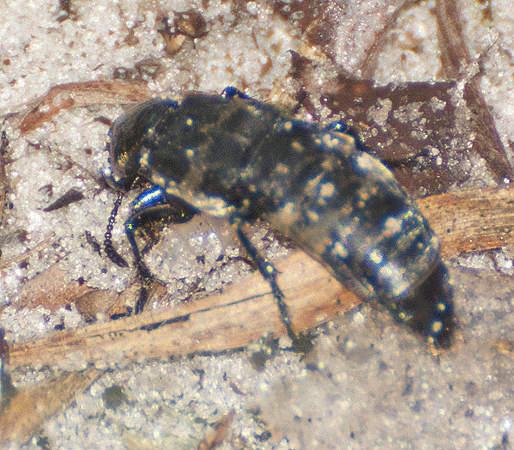 On December 16, 2015, this ~1.5 cm rove beetle was spotted moving quickly along the ground, much of the time with the tip of its abdomen pointed into the air.
On December 16, 2015, this ~1.5 cm rove beetle was spotted moving quickly along the ground, much of the time with the tip of its abdomen pointed into the air. 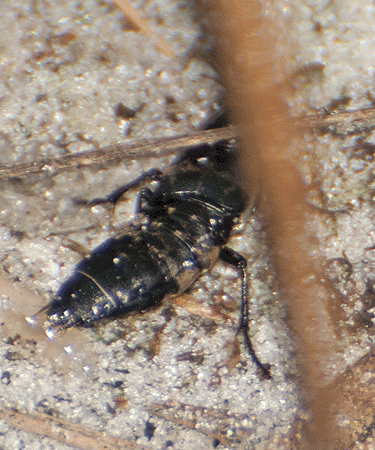
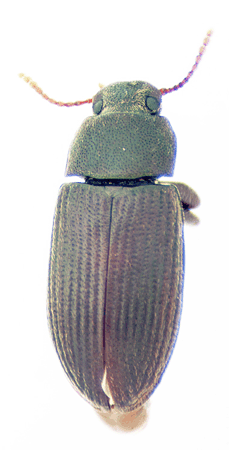
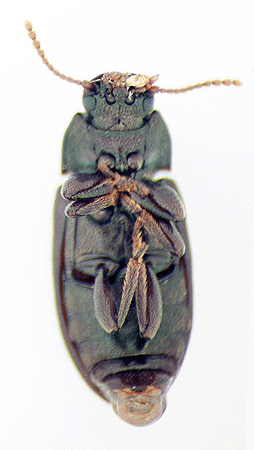
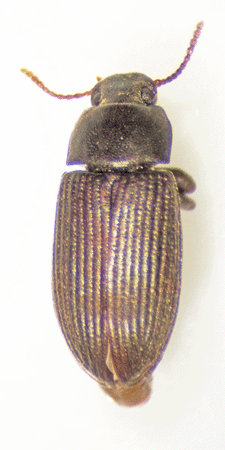 These photographs were created using photomicroscopy and sent for identification to <BugGuide.net>.
These photographs were created using photomicroscopy and sent for identification to <BugGuide.net>. 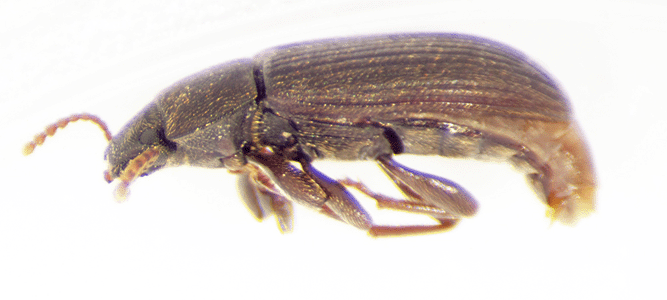
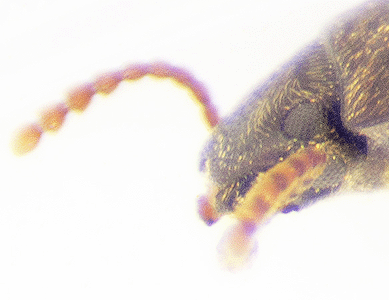 According to the Entomology and Nematology Department of the University of Florida, this species is possibly an immigrant that arrived on shipments of date palms.
According to the Entomology and Nematology Department of the University of Florida, this species is possibly an immigrant that arrived on shipments of date palms.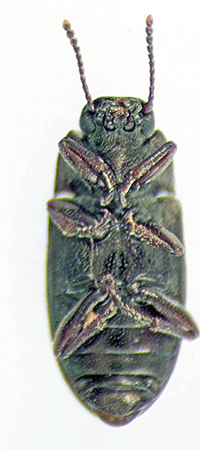
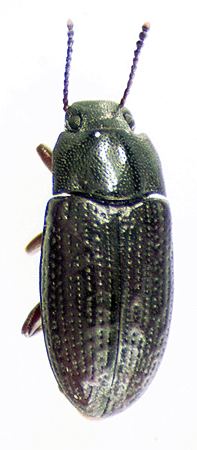
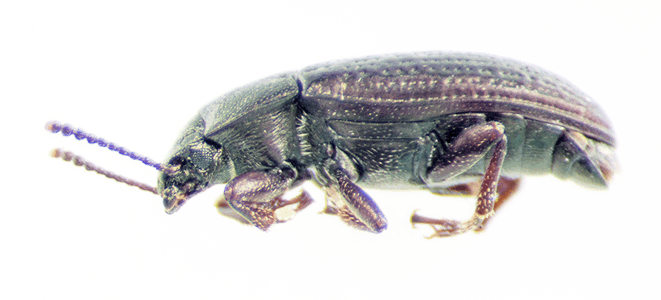
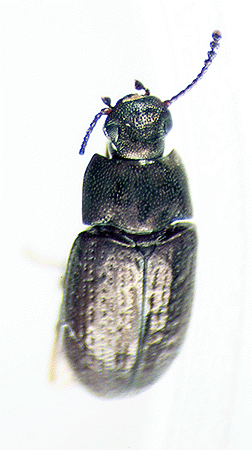
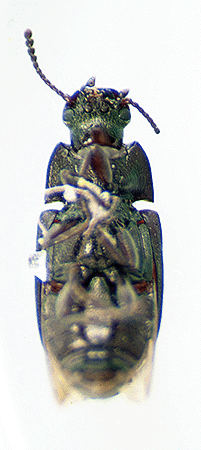
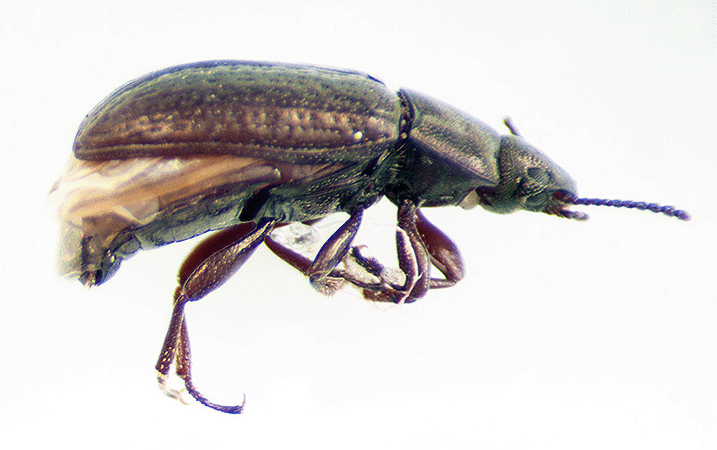
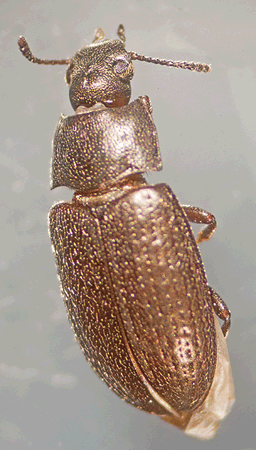
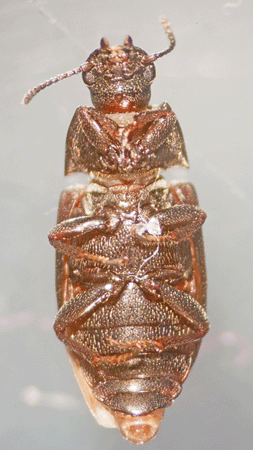 On April 2, 2015, this 5.5 mm long beetle was caught in a pit trap placed in sand near
On April 2, 2015, this 5.5 mm long beetle was caught in a pit trap placed in sand near 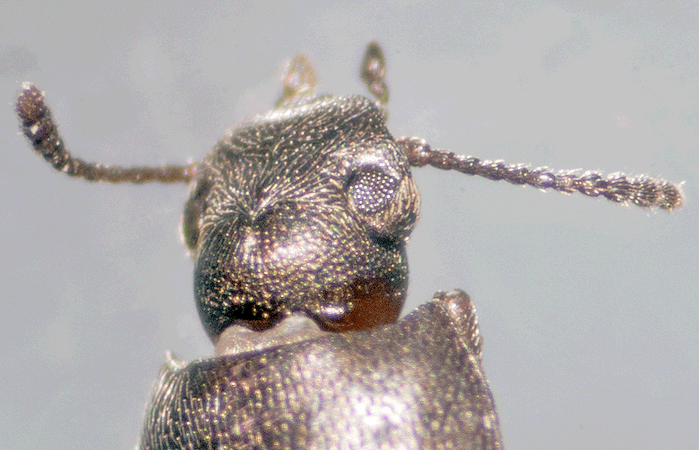

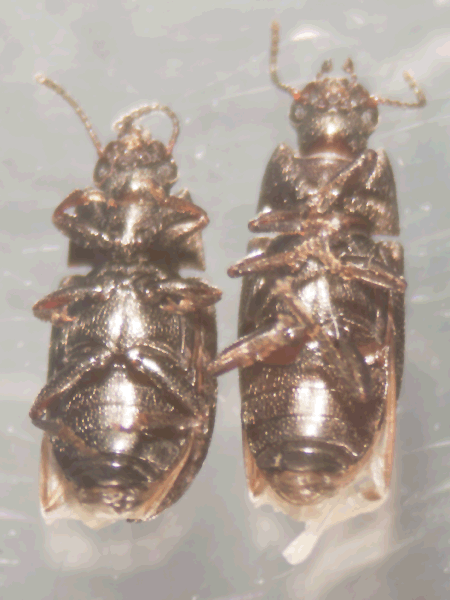
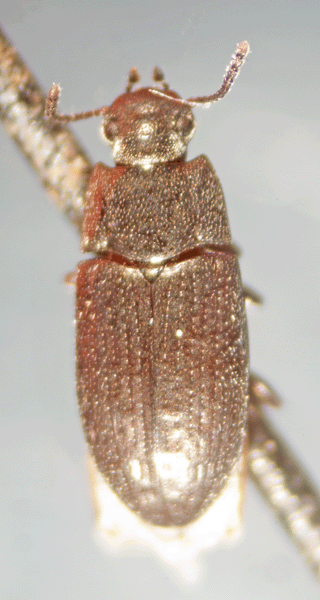
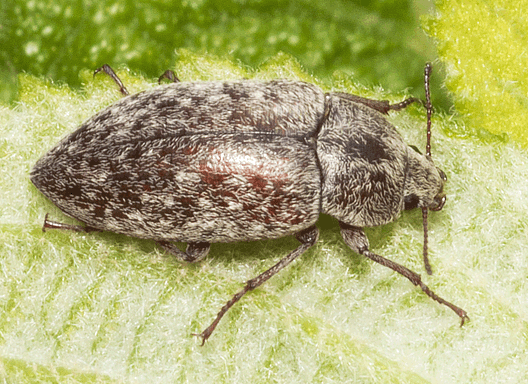
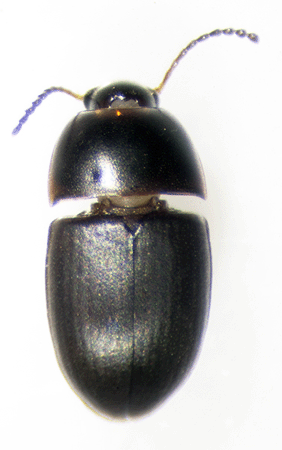
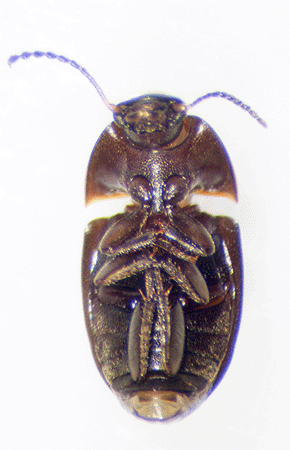
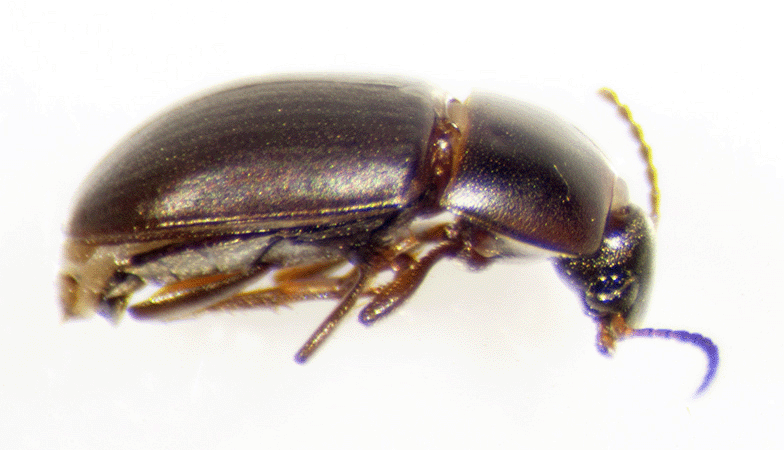
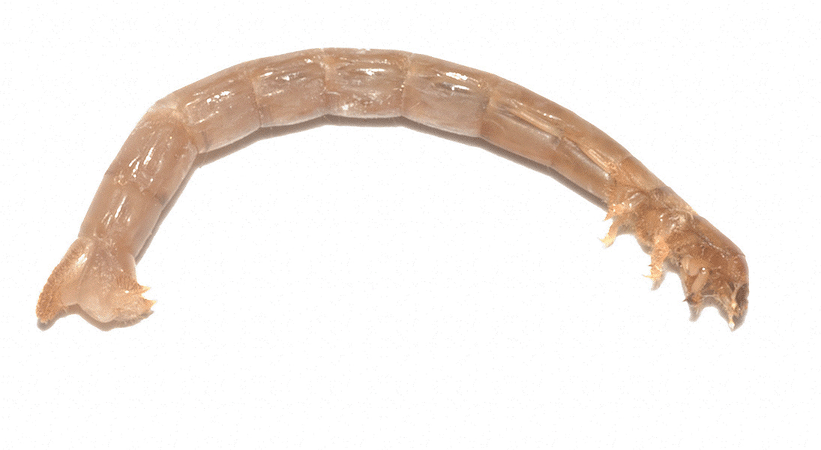
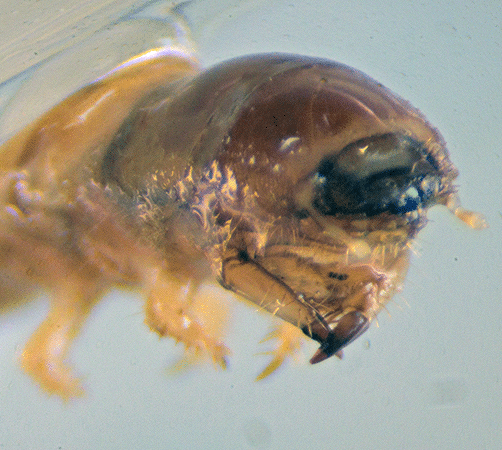 All tenebrionid adults are flightless because they have fused wing covers.
All tenebrionid adults are flightless because they have fused wing covers.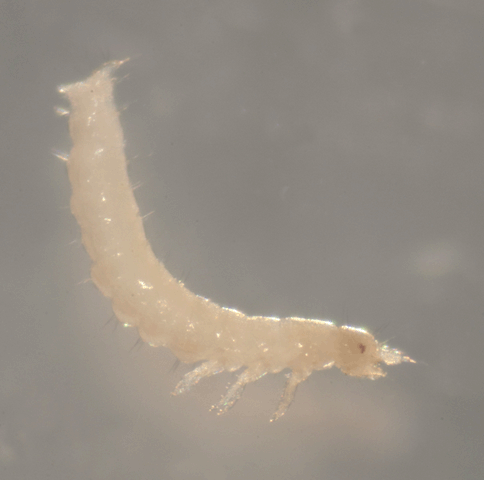 This strange 2-mm long beetle larva was found in a leaf litter sample collected beneath an oak hammock in the northeast hammock of the Smith Preserve on December 17, 2014. It was separated from the litter sample using a Berlese Funnel. These photographs were created using photomicrography.
This strange 2-mm long beetle larva was found in a leaf litter sample collected beneath an oak hammock in the northeast hammock of the Smith Preserve on December 17, 2014. It was separated from the litter sample using a Berlese Funnel. These photographs were created using photomicrography. 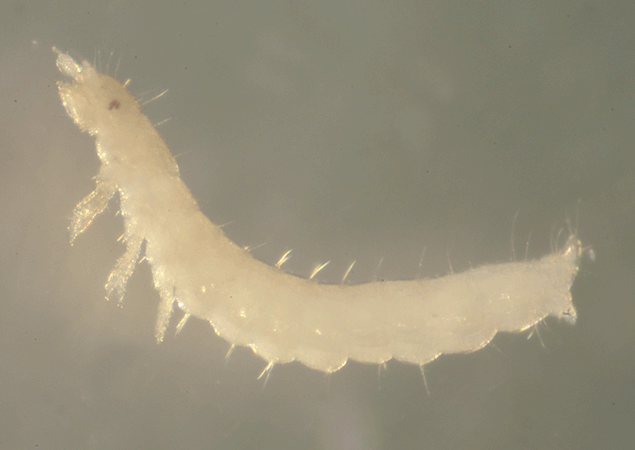
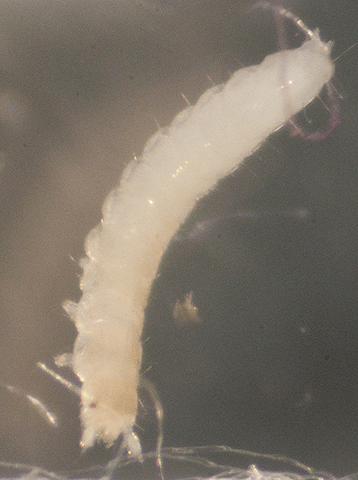
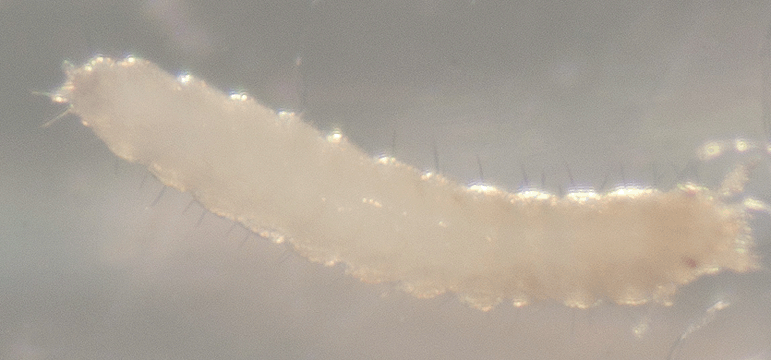
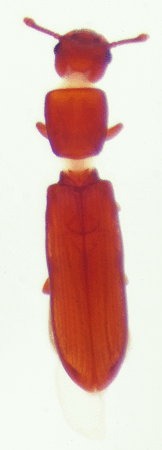
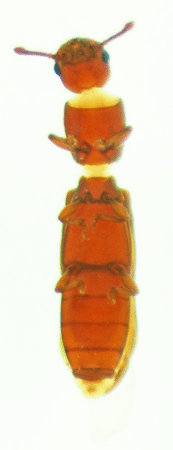
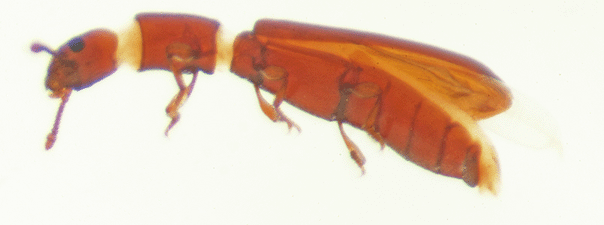
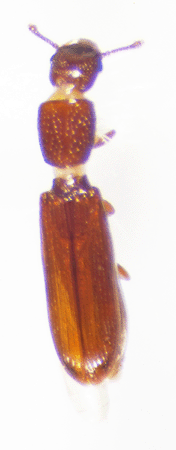
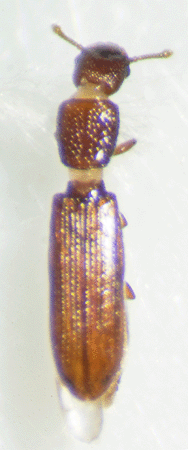
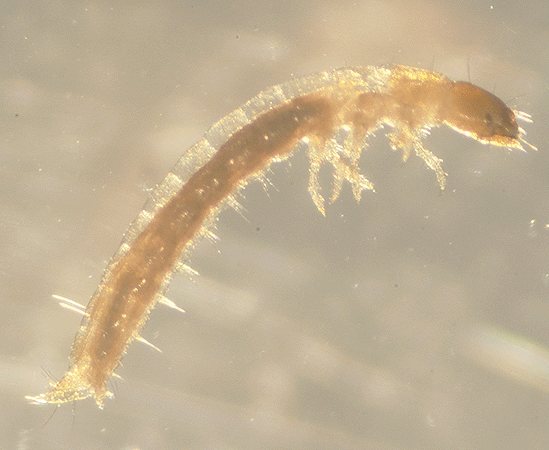 On December 19, 2014, this 2.5 mm long beetle larva (and another like it) were found in a leaf litter sample collected beneath a citrus tree in the northeast hammock of the Smith Preserve.
On December 19, 2014, this 2.5 mm long beetle larva (and another like it) were found in a leaf litter sample collected beneath a citrus tree in the northeast hammock of the Smith Preserve. 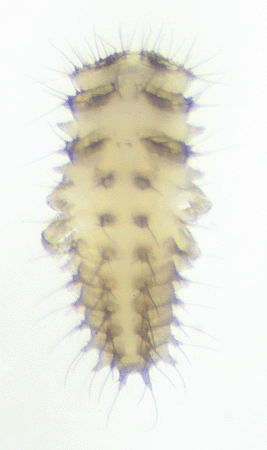
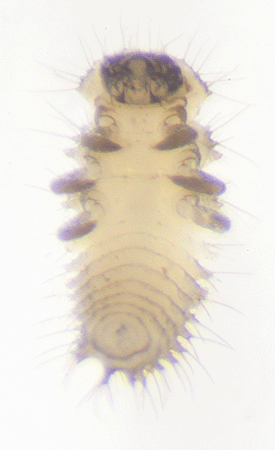
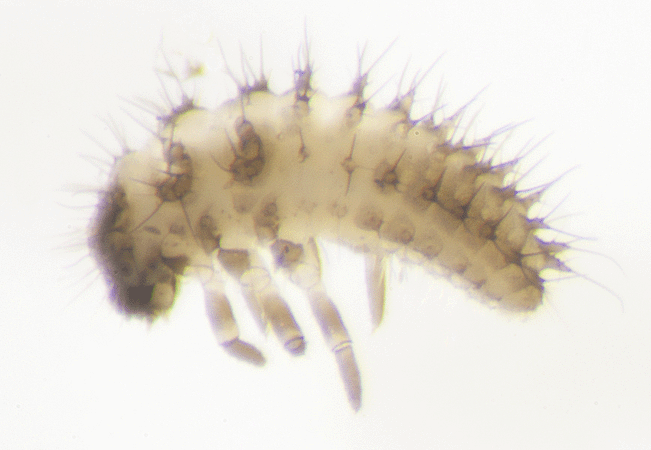
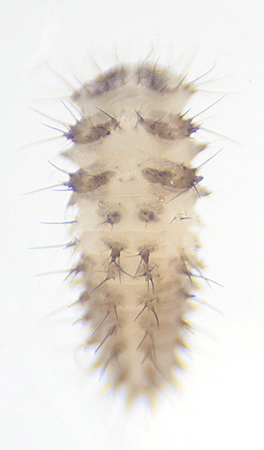
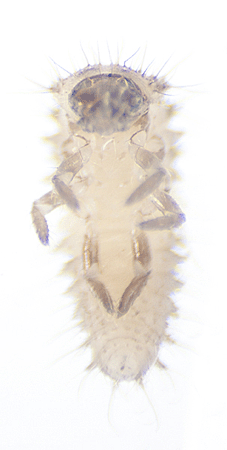
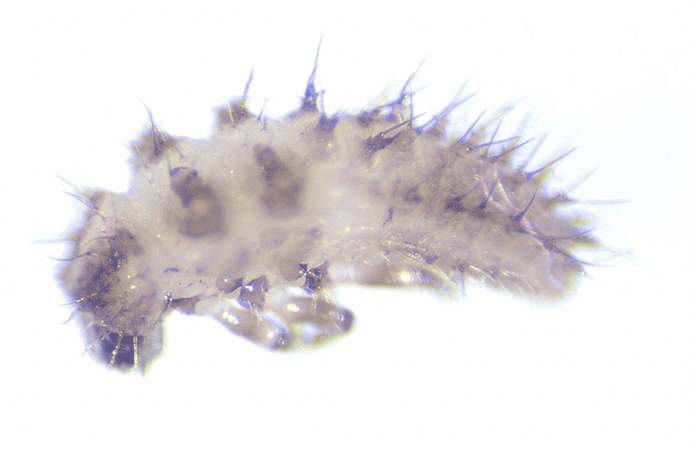
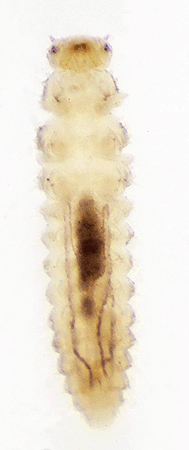 On December 30, 2015, this 2.75 mm long beetle larva was captured in a sweep net used in short brush growing along the gopher tortoise fence that borders the northeast section of the Smith Preserve, just north of Smith Preserve Way. These photographs were created using photomicroscopy and sent for identification to <BugGuide.Net>, sponsored by Iowa State University's Department of Entomology.
On December 30, 2015, this 2.75 mm long beetle larva was captured in a sweep net used in short brush growing along the gopher tortoise fence that borders the northeast section of the Smith Preserve, just north of Smith Preserve Way. These photographs were created using photomicroscopy and sent for identification to <BugGuide.Net>, sponsored by Iowa State University's Department of Entomology.